Paul van Yperen's Blog, page 248
January 2, 2019
All Quiet on the Western Front (1930)
The American anti-war-epic All Quiet on the Western Front (1930) was based on the novel Im Westen nichts neues by Erich Maria Remarque. It is a realistic and harrowing account of warfare in World War I. The film starred Lew Ayres and Louis Wolheim, was directed by Lewis Milestone and produced by Universal. It was the first film to win Oscars for both Best Film and Best Director.
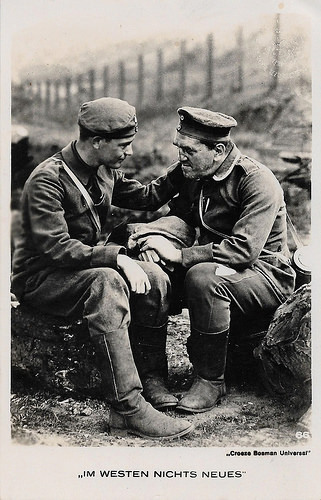
Lew Ayres and Louis Wolheim. Dutch postcard by Croeze-Bosman-Universal, no. 66. Photo: publicity still for All Quiet on the Western Front (Lewis Milestone, 1930). Croeze-Bosman was a Dutch film distribution company, founded in 1926 as a continuation of the Dutch American Film co., a subsidiary of Universal.

Lew Ayres, Louis Wolheim and Owen Davis Jr. Dutch postcard by Croeze-Bosman-Universal, no. 65. Photo: publicity still for All Quiet on the Western Front (Lewis Milestone, 1930).
The hellish and pointless mess that was WWI
All Quiet on the Western Front (Lewis Milestone, 1930) is based on the acclaimed novel by Erich Maria Remarque. The film is unusual for a Hollywood war film because it is told from the viewpoint of the German soldiers fighting in World War I. The film portrays the transformations the young German soldier Paul (Lewis Ayres) suffers during the World War I: the innocence before the war and the promise of everlasting glory, the shock with reality and the realisation of his own mortality and of the hypocrisy of war and finally the return to the world away from the trenches, a world that didn't stop to wait for him.
The novel's title in German is Im Westen Nichts Neues, Nothing New in the West. Erich Maria Remarque draw the title from German newspaper articles. The articles would rave about glorious victories on the Eastern Front but dismiss the horrors playing out on the Western Front in a nothing-to-see-here-folks manner by the simple phrase, "nothing new in the west". Director Lewis Milestone filmed the novel only eleven years after the war ended. His film contains a power only possible by those who've lived through the era.
The film begins in a classroom. Outside, martial music is blaring and the professor inside the room is lecturing Paul and the other boys about their duty to the Fatherland and encouraging them all to as a group in the German army at the outbreak of WWI. The film captures the enthusiasm and naivete of the boys - as they imagine glory awaiting them after they enlist. Even in boot camp, the mood is light and the new recruits are excited about seeing their first action. This perfectly sets the stage for the actual war - the hellish and pointless mess that was WWI. The rest of the film is brutally honest and harsh and shows how the students die off one-by-one and the remaining students become more and more jaded and emotionally dead due to the fighting.
A highlight is the scene where Paul (Lew Ayres) mortally wounds a French soldier and then weeps bitterly as he fights to save his life while trapped in a shell crater with the body. The film is also remembered for the sequence with the butterfly at the end. Paul is back on the front lines. He sees a butterfly just beyond his trench. Paul smiles and reaches out towards the butterfly, but becoming too exposed, he is shot and killed by an enemy sniper. The iconic final shot with the hand and the butterfly was filmed during the editing process. All the actors had left so it is actually Lewis Milestone's hand we see in the final shot.
Universal Pictures produced the film for the then considerable sum of $1.25 million. It was also the first sound film of director Lewis Milestone. The fact that production began only a few months after the 1929 stock-market crash puts into perspective the enormous gamble taken by the studio in making this film. A special camera crane, built under the specifications of Pál Fejös for his film Broadway (1929), was brought to this film's location in Irvine and used for the battle scenes. The crane had its own concrete ramp, installed several months before at the location, allowed cameraman Arthur Edeson to film the extended tracking shots.
Lew Ayres plays Paul quite understated but very believable. His character is well-chosen as the focal point of most of the film. The liveliest of the soldiers is the resourceful Sergeant 'Kat'. Louis Wolheim earned some of the best notices of his career playing the Sergeant. He was set to star in Lewis Milestone's next film The Front Page (1931) when he unexpectedly died of stomach cancer in 1931. All Quiet on the Western Front (1930) was the second most popular film at the U.S. box office for 1930. Universal won it's first Best Picture Oscar for the film and it was the first ever film to win Academy Awards for Best Picture and Best Director.
In Germany, Nazi brownshirts under the command of Joseph Goebbels stormed screenings of All Quiet on the Western Front (Lewis Milestone, 1930), releasing white mice or stink bombs into the theatres. The wounds of defeat in the First World War still ran deep. This led to the film ultimately being banned by the Nazi party. The film was banned in Germany by Nazi Minister of the Interior Wilhelm Frick on the grounds that it ignominiously represented Germans as cowards. It wouldn't receive proper screenings in Germany until 1956, though it did play to packed houses in 1930 in neighbouring Switzerland, France and the Netherlands with special trains and buses being laid on to transport Germans to screenings. The film was also banned in fascist Italy until 1956. Ironically, in Poland, that country's censorship board proscribed the film on account of it's being 'pro-German'.
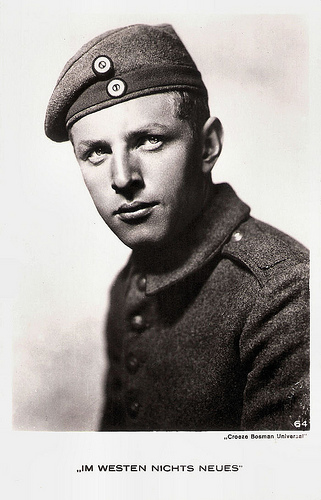
Owen Davis Jr. Dutch postcard by Croeze-Bosman-Universal, no. 64. Photo: publicity still for All Quiet on the Western Front (Lewis Milestone, 1930). Owen Davis Jr. played Peter in the film.
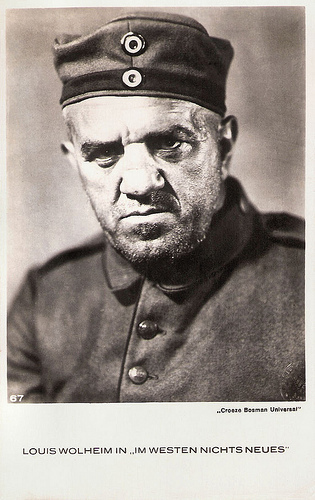
Louis Wolheim. Dutch postcard by Croeze-Bosman-Universal, no. 67. Photo: publicity still for All Quiet on the Western Front (Lewis Milestone, 1930).
Sources: Wikipedia and IMDb.

Lew Ayres and Louis Wolheim. Dutch postcard by Croeze-Bosman-Universal, no. 66. Photo: publicity still for All Quiet on the Western Front (Lewis Milestone, 1930). Croeze-Bosman was a Dutch film distribution company, founded in 1926 as a continuation of the Dutch American Film co., a subsidiary of Universal.

Lew Ayres, Louis Wolheim and Owen Davis Jr. Dutch postcard by Croeze-Bosman-Universal, no. 65. Photo: publicity still for All Quiet on the Western Front (Lewis Milestone, 1930).
The hellish and pointless mess that was WWI
All Quiet on the Western Front (Lewis Milestone, 1930) is based on the acclaimed novel by Erich Maria Remarque. The film is unusual for a Hollywood war film because it is told from the viewpoint of the German soldiers fighting in World War I. The film portrays the transformations the young German soldier Paul (Lewis Ayres) suffers during the World War I: the innocence before the war and the promise of everlasting glory, the shock with reality and the realisation of his own mortality and of the hypocrisy of war and finally the return to the world away from the trenches, a world that didn't stop to wait for him.
The novel's title in German is Im Westen Nichts Neues, Nothing New in the West. Erich Maria Remarque draw the title from German newspaper articles. The articles would rave about glorious victories on the Eastern Front but dismiss the horrors playing out on the Western Front in a nothing-to-see-here-folks manner by the simple phrase, "nothing new in the west". Director Lewis Milestone filmed the novel only eleven years after the war ended. His film contains a power only possible by those who've lived through the era.
The film begins in a classroom. Outside, martial music is blaring and the professor inside the room is lecturing Paul and the other boys about their duty to the Fatherland and encouraging them all to as a group in the German army at the outbreak of WWI. The film captures the enthusiasm and naivete of the boys - as they imagine glory awaiting them after they enlist. Even in boot camp, the mood is light and the new recruits are excited about seeing their first action. This perfectly sets the stage for the actual war - the hellish and pointless mess that was WWI. The rest of the film is brutally honest and harsh and shows how the students die off one-by-one and the remaining students become more and more jaded and emotionally dead due to the fighting.
A highlight is the scene where Paul (Lew Ayres) mortally wounds a French soldier and then weeps bitterly as he fights to save his life while trapped in a shell crater with the body. The film is also remembered for the sequence with the butterfly at the end. Paul is back on the front lines. He sees a butterfly just beyond his trench. Paul smiles and reaches out towards the butterfly, but becoming too exposed, he is shot and killed by an enemy sniper. The iconic final shot with the hand and the butterfly was filmed during the editing process. All the actors had left so it is actually Lewis Milestone's hand we see in the final shot.
Universal Pictures produced the film for the then considerable sum of $1.25 million. It was also the first sound film of director Lewis Milestone. The fact that production began only a few months after the 1929 stock-market crash puts into perspective the enormous gamble taken by the studio in making this film. A special camera crane, built under the specifications of Pál Fejös for his film Broadway (1929), was brought to this film's location in Irvine and used for the battle scenes. The crane had its own concrete ramp, installed several months before at the location, allowed cameraman Arthur Edeson to film the extended tracking shots.
Lew Ayres plays Paul quite understated but very believable. His character is well-chosen as the focal point of most of the film. The liveliest of the soldiers is the resourceful Sergeant 'Kat'. Louis Wolheim earned some of the best notices of his career playing the Sergeant. He was set to star in Lewis Milestone's next film The Front Page (1931) when he unexpectedly died of stomach cancer in 1931. All Quiet on the Western Front (1930) was the second most popular film at the U.S. box office for 1930. Universal won it's first Best Picture Oscar for the film and it was the first ever film to win Academy Awards for Best Picture and Best Director.
In Germany, Nazi brownshirts under the command of Joseph Goebbels stormed screenings of All Quiet on the Western Front (Lewis Milestone, 1930), releasing white mice or stink bombs into the theatres. The wounds of defeat in the First World War still ran deep. This led to the film ultimately being banned by the Nazi party. The film was banned in Germany by Nazi Minister of the Interior Wilhelm Frick on the grounds that it ignominiously represented Germans as cowards. It wouldn't receive proper screenings in Germany until 1956, though it did play to packed houses in 1930 in neighbouring Switzerland, France and the Netherlands with special trains and buses being laid on to transport Germans to screenings. The film was also banned in fascist Italy until 1956. Ironically, in Poland, that country's censorship board proscribed the film on account of it's being 'pro-German'.

Owen Davis Jr. Dutch postcard by Croeze-Bosman-Universal, no. 64. Photo: publicity still for All Quiet on the Western Front (Lewis Milestone, 1930). Owen Davis Jr. played Peter in the film.

Louis Wolheim. Dutch postcard by Croeze-Bosman-Universal, no. 67. Photo: publicity still for All Quiet on the Western Front (Lewis Milestone, 1930).
Sources: Wikipedia and IMDb.
Published on January 02, 2019 22:00
January 1, 2019
Gone with the Wind (1939)
Gone with the Wind (Victor Fleming, 1939) is eighty years after its release still one of the most brilliant and captivating Hollywood films. It's a grand epic, more than four hours long, about the times of American Civil War and how it affected a group of Southern landed gentry. If you account for inflation, Gone with the Wind is probably the highest-grossing film ever released. Stars are the indomitable Vivien Leigh as Scarlett O'Hara, the oldest daughter and presumed heir of the Tara plantation, and Clark Gable as Rhett Butler, her on and off romantic interest and rival.
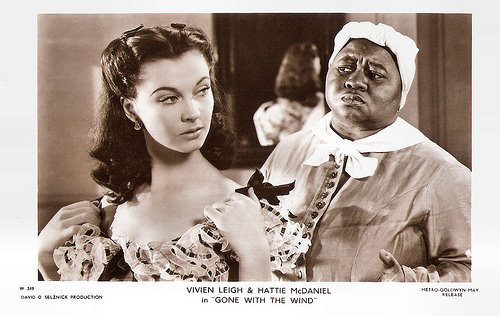
British postcard in the Picturegoer Series, London, no. W. 349. Photo: David O'Selznick Production / Metro-Goldwyn-Mayer. Publicity still for Gone with the Wind (Victor Fleming, 1939) with Vivien Leigh and Hattie McDaniel.
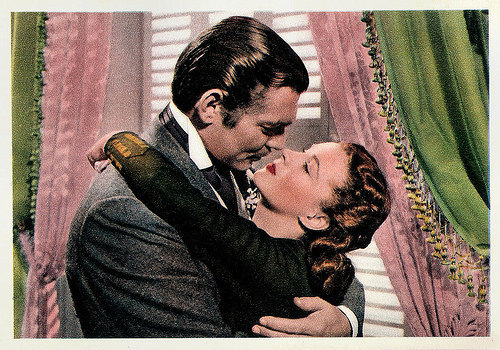
Italian postcard by Zincografica, Firenze. Photo: publicity still for Gone with the Wind (Victor Fleming, 1939) with Clark Gable and Vivien Leigh .
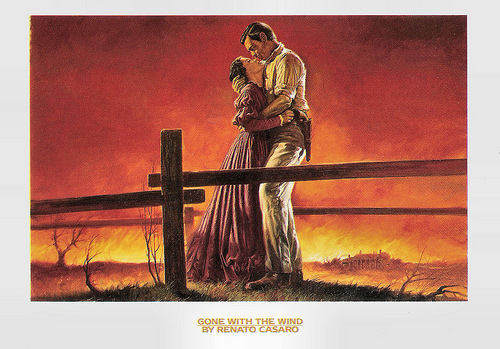
Dutch postcard by Filmfreak Productions / Painted Movies, no. FA 386. Illustration by Renato Casaro for Gone with the Wind (Victor Fleming, 1939).
An anti-hero who will remain in your memory forever
Gone with the Wind (1939) brought together the best people in Hollywood. The end result is a stunning film, which remains remarkably faithful to Margaret Mitchell's novel about the South, before and after the Civil War. The vision of David O. Selznick, the power behind bringing the novel to the screen, pays off handsomely. Credit must also be given to the director, Victor Fleming, and his vision, as well as the adaptation by Sydney Howard, who gave the right tone to the film. The gorgeous cinematography created by Ernest Haller gives us a vision of the gentle South before the war, and the Phoenix raising from the ashes of a burned Atlanta. The music of Max Steiner puts the right touch behind all that is seen in the film.
Crucial for the success of Gone with the Wind (1939) was the casting of British Vivien Leigh as southern belle Scarlett. Her beauty, her sense of timing, her intelligent approach to this role, makes this a hallmark performance. Leigh created an unforgettable, multi-layered character. Scarlett is not a pleasant person, not at all. she can be whiny, needy and mousy. She's also scheming, manipulative, almost purely after her own interest. And Scarlett sure does not take a no for an answer. At times, you literally despise her, but then in the next breath she shows strength and wisdom. Scarlett goes from riches to rags, back to riches again and in the process finds an inner strength she didn't know she possessed. Classic is the scene in which she swears that she and hers shall never suffer again. The public understands where she is coming from and admires her. Scarlett is not immune to the suffering of others either, she is loyal to those she considers hers and her sheer willpower and force of personality are impressive and make her an anti-hero, who will remain in your memory forever.
Scarlett is beautifully set up and contrasted by those around her. There is an incredible unmatched chemistry between the two romantic leads. Clark Gable as the irrepressible Captain Rhett Butler has this air of over-confidence. No one else comes to mind for playing him with the passion he projects throughout the film. Butler is the macho party man with nothing holding him down including political ties. Captain Butler is torn between his loyalty to the cause of the South and his sense of decency. However, his reputation as a drunkard and a rich bachelor suits him fine. When Scarlett comes into his life, he falls hopelessly in love with the most unlikely girl and she plagues him for years. His love for Scarlett, the woman he knows is in love with a dream, speaks eloquently for itself. In the last half hour of the film when he's hit with unbelievable tragedy and he edges to the point of madness, Gable reaches dimensions he never did before or subsequently. Throughout the film, he looks incredible handsome and relaxed, and Gable proves in the film why he was one of the biggest stars of Hollywood's Golden Age.
The supporting cast is huge and does an incredible job. Leslie Howard is also very good as Scarlett's love interest for years and years, wealthy plantation owner Ashley Wilkes. Ashley is a strong character. He's the one that reluctantly enlists in the Confederate Army while the cynical Rhett Butler makes some big bucks as a blockade runner. Howard gives a perfect balance to the man in love with his wife, while Scarlett keeps tempting him. Olivia de Havilland plays the loving and kind Melanie Wilkes, who marries Ashley away from Scarlett. Melanie is the counterpoint to Scarlett, an incredibly kind and decent soul who can't see bad in anyone. Melanie remains loyal to the woman that does everything to undermine her marriage to Ashley. Thanks to the talent of Olivia de Havilland, Melanie never becomes a maudlin character. For her role, de Havilland got her first Oscar nomination in the Supporting Actress category.
Other actors in the cast include Harry Davenport, Thomas Mitchell, Barbara O'Neil, Butterfly McQueen, George Reeves (the future Superman), and Richard Farnsworth. My favourite however is Hattie McDaniel, a natural actress and a joy to watch. She is just wonderful as 'Mammy' the beloved house servant. She was the first African American actor to be nominated for an Academy Award, and it's still remarkable that McDaniel won an Oscar in a land that was so bigoted at the time. Hattie McDaniel was absent from the premiere of the film, as she and the other black cast members were prevented from attending the premiere due to Georgia's Jim Crow laws, which kept them from sitting with their white colleagues. Upon learning that McDaniel had been barred from the premiere, Clark Gable threatened to boycott the event, but McDaniel convinced him to attend.

British postcard in the Picturegoer Series, London, no. W. 345. Photo: David O'Selznick Production / Metro-Goldwyn-Mayer. Publicity still for Gone with the Wind (Victor Fleming, 1939) with Leslie Howard , Olivia de Havilland and Vivien Leigh . Caption: Bridal scene from Gone with the Wind.
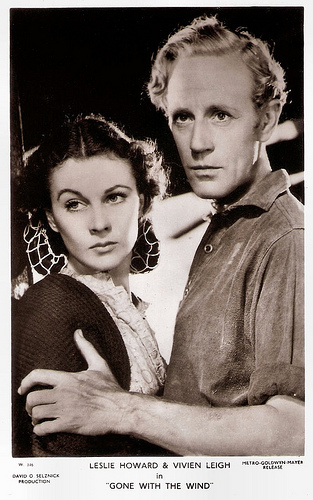
British postcard in the Picturegoer Series, London, no. W. 346. Photo: David O'Selznick Production / Metro-Goldwyn-Mayer. Publicity still for Gone with the Wind (Victor Fleming, 1939) with Leslie Howard and Vivien Leigh .
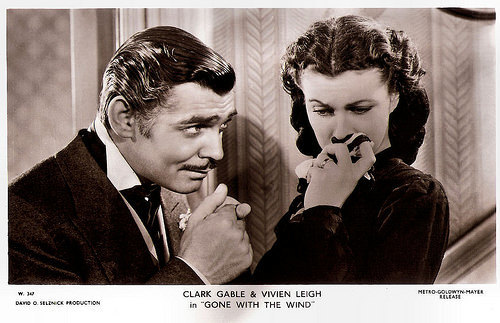
British postcard in the Picturegoer Series, London, no. W. 347. Photo: David O'Selznick Production / Metro-Goldwyn-Mayer. Publicity still for Gone with the Wind (Victor Fleming, 1939) with Vivien Leigh and Clark Gable.

British postcard in the Picturegoer Series, London, no. W. 348. Photo: David O'Selznick Production / Metro-Goldwyn-Mayer. Publicity still for Gone with the Wind (Victor Fleming, 1939) with Leslie Howard and Olivia de Havilland.
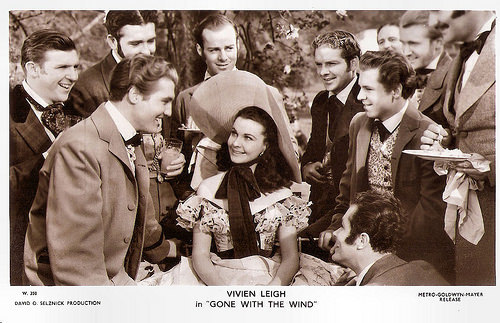
British postcard in the Picturegoer Series, London, no. W. 350. Photo: David O'Selznick Production / Metro-Goldwyn-Mayer. Publicity still for Gone with the Wind (Victor Fleming, 1939) with Vivien Leigh .
The most successful film in box-office history
Production of Gone with the Wind (Victor Fleming, 1939) was difficult from the start. In July 1936 — a month after Margaret Mitchell published her novel —Selznick bought the rights for $50,000. Then, filming was delayed for two years because of David O'Selznick's determination to secure Clark Gable for the role of Rhett Butler, and the 'search for Scarlett'. Gable was under contract to MGM, which never loaned him to other studios. Eventually, O'Selznick struck a deal with MGM. His father-in-law, MGM chief Louis B. Mayer, offered in August 1938 to provide Gable and $1,250,000 for half of the film's budget but for a high price: Selznick would have to pay Gable's weekly salary, and half the profits would go to MGM while Loew's, Inc — MGM's parent company — would release the film.
The search for Scarlett has become a Hollywood legend. O'Selznick built publicity for the film by searching for the role and began a nationwide casting call that interviewed 1,400 unknowns. The effort cost $100,000 and was useless for the film, but created 'priceless' publicity. Many famous—or soon-to-be-famous—actresses were considered, but only thirty-one women were actually screen-tested for Scarlett including Jean Arthur, Tallulah Bankhead, Diana Barrymore, Joan Bennett, Paulette Goddard, Susan Hayward and Lana Turner. Gone With the Wind started filming without a Scarlett as the famous burning of Atlanta sequence was done first. While it was being done, David O. Selznick settled on a fairly unknown British actress, at least in the USA, Vivien Leigh . Her casting was announced on 13 January 1939.
The original screenplay was written by Sidney Howard. His first submission was far too long, and would have required at least six hours of film. The screenplay underwent many revisions by several writers in an attempt to get it down to a suitable length. The original director, George Cukor, was fired three weeks into filming and was replaced by Victor Fleming, who was directing The Wizard of Oz at the time. Fleming in turn would during filming be briefly replaced by Sam Wood while Fleming took some time off due to exhaustion. Fleming was dissatisfied with the script, so Selznick brought in famed writer Ben Hecht to rewrite the entire screenplay within five days. Hecht returned to Howard's original draft and by the end of the week had succeeded in revising the entire first half of the script. Selznick undertook rewriting the second half himself but fell behind schedule, so Howard returned to work on the script for one week, reworking several key scenes in part two. Despite the number of writers and changes, the final script was remarkably close to Howard's version.
About 300,000 people came out in Atlanta for the film's premiere at the Loew's Grand Theatre on 15 December 1939. Gone with the Wind received positive reviews upon its release, although some reviewers found it overlong. The casting was widely praised, and many reviewers found Leigh especially suited to her role as Scarlett. At the 12th Academy Awards, it received ten Academy Awards (eight competitive, two honorary) from thirteen nominations, including wins for Best Picture, Best Director (Victor Fleming), Best Adapted Screenplay (posthumously awarded to Sidney Howard), Best Actress ( Vivien Leigh ), and Best Supporting Actress (Hattie McDaniel). It set records for the total number of wins and nominations at the time.
Upon its release, Gone with the Wind broke attendance records everywhere. It became the highest-earning film made up to that point, and held the record for over a quarter of a century. When adjusted for monetary inflation, it is still the most successful film in box-office history. It was re-released periodically throughout the 20th century and became ingrained in popular culture. The film has been placed in the top ten of the American Film Institute's list of the top 100 American films since the list's inception in 1998. In 1989, the United States Library of Congress selected it for preservation in the National Film Registry.
Gone with the Wind is told from the point of view of the South, and it tends to portray slaves as a simpler people, who are being gently looked after by their white masters. More often than not the slaves are shown either as people of limited understanding or as straight up mentally handicapped. It usually isn't the focus of the film, but the story is about the Civil War so it's always on the background. Therefore, seeing the film today makes you feel uncomfortable sometimes, but on the other hand, the film also offers that rare chance to see lots of superb singing, dancing, and acting by African-Americans in a Hollywood production of the 1930s.
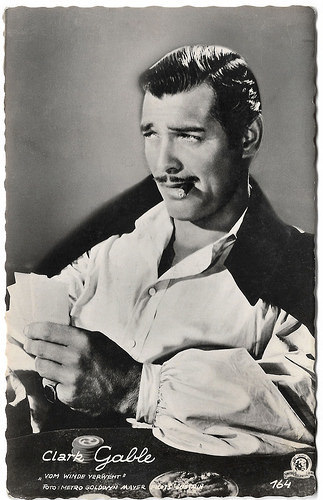
Austrian postcard by HDH Verlag, Wien (Vienna), no. 3394. Photo: Metro-Goldwyn-Mayer / Films Austria. Publicity still for Gone with the Wind (Victor Fleming, 1939) with Clark Gable.
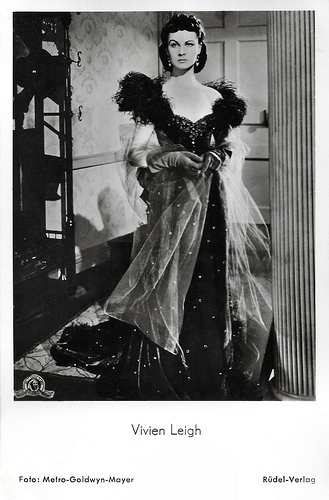
German postcard by Rüdel-Verlag, Hamburg-Bergedorf, no. 732. Photo: Metro-Goldwyn-Mayer. Publicity still for Gone with the Wind (Victor Fleming, 1939) with Vivien Leigh .
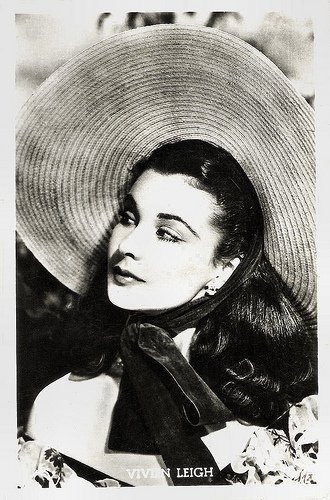
Vintage card. Photo: Metro-Goldwyn-Mayer. Publicity still for Gone with the Wind (Victor Fleming, 1939) with Vivien Leigh .
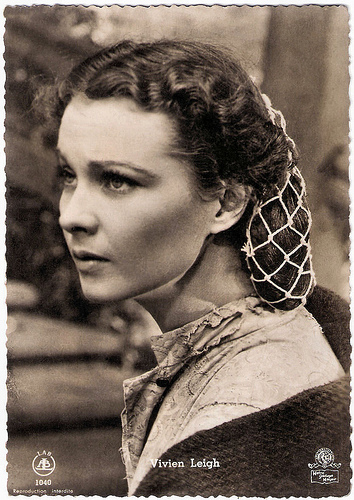
Belgian postcard by Les Editions d'Art L.A.B., Bruxelles (Brussels), no. 1040. Photo: MGM (Metro-Goldwyn-Mayer). Publicity still for Gone With The Wind (1939) with Vivien Leigh .

Romanian postcard by Casa Filmului Acin, no. 247. Photo: publicity still for Gone with the Wind (Victor Fleming, 1939) with Leslie Howard and Olivia de Havilland.
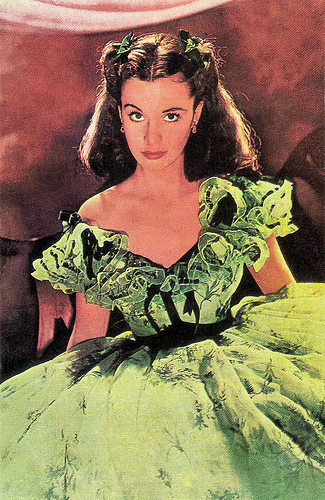
Romanian postcard by Casa Filmului Acin. Photo: MGM. Publicity still for Gone with the Wind (1939) with Vivien Leigh .
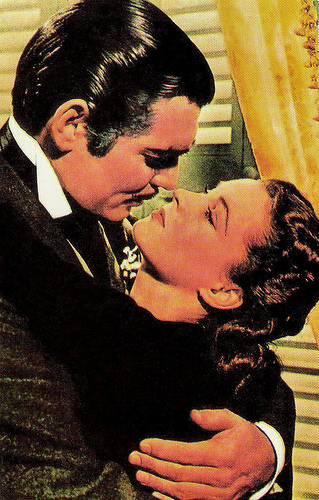
Romanian postcard by Casa Filmului Acin. Photo: MGM. Publicity still for Gone with the Wind (1939) with Clark Gable and Vivien Leigh .
Sources: Wikipedia and IMDb.

British postcard in the Picturegoer Series, London, no. W. 349. Photo: David O'Selznick Production / Metro-Goldwyn-Mayer. Publicity still for Gone with the Wind (Victor Fleming, 1939) with Vivien Leigh and Hattie McDaniel.

Italian postcard by Zincografica, Firenze. Photo: publicity still for Gone with the Wind (Victor Fleming, 1939) with Clark Gable and Vivien Leigh .

Dutch postcard by Filmfreak Productions / Painted Movies, no. FA 386. Illustration by Renato Casaro for Gone with the Wind (Victor Fleming, 1939).
An anti-hero who will remain in your memory forever
Gone with the Wind (1939) brought together the best people in Hollywood. The end result is a stunning film, which remains remarkably faithful to Margaret Mitchell's novel about the South, before and after the Civil War. The vision of David O. Selznick, the power behind bringing the novel to the screen, pays off handsomely. Credit must also be given to the director, Victor Fleming, and his vision, as well as the adaptation by Sydney Howard, who gave the right tone to the film. The gorgeous cinematography created by Ernest Haller gives us a vision of the gentle South before the war, and the Phoenix raising from the ashes of a burned Atlanta. The music of Max Steiner puts the right touch behind all that is seen in the film.
Crucial for the success of Gone with the Wind (1939) was the casting of British Vivien Leigh as southern belle Scarlett. Her beauty, her sense of timing, her intelligent approach to this role, makes this a hallmark performance. Leigh created an unforgettable, multi-layered character. Scarlett is not a pleasant person, not at all. she can be whiny, needy and mousy. She's also scheming, manipulative, almost purely after her own interest. And Scarlett sure does not take a no for an answer. At times, you literally despise her, but then in the next breath she shows strength and wisdom. Scarlett goes from riches to rags, back to riches again and in the process finds an inner strength she didn't know she possessed. Classic is the scene in which she swears that she and hers shall never suffer again. The public understands where she is coming from and admires her. Scarlett is not immune to the suffering of others either, she is loyal to those she considers hers and her sheer willpower and force of personality are impressive and make her an anti-hero, who will remain in your memory forever.
Scarlett is beautifully set up and contrasted by those around her. There is an incredible unmatched chemistry between the two romantic leads. Clark Gable as the irrepressible Captain Rhett Butler has this air of over-confidence. No one else comes to mind for playing him with the passion he projects throughout the film. Butler is the macho party man with nothing holding him down including political ties. Captain Butler is torn between his loyalty to the cause of the South and his sense of decency. However, his reputation as a drunkard and a rich bachelor suits him fine. When Scarlett comes into his life, he falls hopelessly in love with the most unlikely girl and she plagues him for years. His love for Scarlett, the woman he knows is in love with a dream, speaks eloquently for itself. In the last half hour of the film when he's hit with unbelievable tragedy and he edges to the point of madness, Gable reaches dimensions he never did before or subsequently. Throughout the film, he looks incredible handsome and relaxed, and Gable proves in the film why he was one of the biggest stars of Hollywood's Golden Age.
The supporting cast is huge and does an incredible job. Leslie Howard is also very good as Scarlett's love interest for years and years, wealthy plantation owner Ashley Wilkes. Ashley is a strong character. He's the one that reluctantly enlists in the Confederate Army while the cynical Rhett Butler makes some big bucks as a blockade runner. Howard gives a perfect balance to the man in love with his wife, while Scarlett keeps tempting him. Olivia de Havilland plays the loving and kind Melanie Wilkes, who marries Ashley away from Scarlett. Melanie is the counterpoint to Scarlett, an incredibly kind and decent soul who can't see bad in anyone. Melanie remains loyal to the woman that does everything to undermine her marriage to Ashley. Thanks to the talent of Olivia de Havilland, Melanie never becomes a maudlin character. For her role, de Havilland got her first Oscar nomination in the Supporting Actress category.
Other actors in the cast include Harry Davenport, Thomas Mitchell, Barbara O'Neil, Butterfly McQueen, George Reeves (the future Superman), and Richard Farnsworth. My favourite however is Hattie McDaniel, a natural actress and a joy to watch. She is just wonderful as 'Mammy' the beloved house servant. She was the first African American actor to be nominated for an Academy Award, and it's still remarkable that McDaniel won an Oscar in a land that was so bigoted at the time. Hattie McDaniel was absent from the premiere of the film, as she and the other black cast members were prevented from attending the premiere due to Georgia's Jim Crow laws, which kept them from sitting with their white colleagues. Upon learning that McDaniel had been barred from the premiere, Clark Gable threatened to boycott the event, but McDaniel convinced him to attend.

British postcard in the Picturegoer Series, London, no. W. 345. Photo: David O'Selznick Production / Metro-Goldwyn-Mayer. Publicity still for Gone with the Wind (Victor Fleming, 1939) with Leslie Howard , Olivia de Havilland and Vivien Leigh . Caption: Bridal scene from Gone with the Wind.

British postcard in the Picturegoer Series, London, no. W. 346. Photo: David O'Selznick Production / Metro-Goldwyn-Mayer. Publicity still for Gone with the Wind (Victor Fleming, 1939) with Leslie Howard and Vivien Leigh .

British postcard in the Picturegoer Series, London, no. W. 347. Photo: David O'Selznick Production / Metro-Goldwyn-Mayer. Publicity still for Gone with the Wind (Victor Fleming, 1939) with Vivien Leigh and Clark Gable.

British postcard in the Picturegoer Series, London, no. W. 348. Photo: David O'Selznick Production / Metro-Goldwyn-Mayer. Publicity still for Gone with the Wind (Victor Fleming, 1939) with Leslie Howard and Olivia de Havilland.

British postcard in the Picturegoer Series, London, no. W. 350. Photo: David O'Selznick Production / Metro-Goldwyn-Mayer. Publicity still for Gone with the Wind (Victor Fleming, 1939) with Vivien Leigh .
The most successful film in box-office history
Production of Gone with the Wind (Victor Fleming, 1939) was difficult from the start. In July 1936 — a month after Margaret Mitchell published her novel —Selznick bought the rights for $50,000. Then, filming was delayed for two years because of David O'Selznick's determination to secure Clark Gable for the role of Rhett Butler, and the 'search for Scarlett'. Gable was under contract to MGM, which never loaned him to other studios. Eventually, O'Selznick struck a deal with MGM. His father-in-law, MGM chief Louis B. Mayer, offered in August 1938 to provide Gable and $1,250,000 for half of the film's budget but for a high price: Selznick would have to pay Gable's weekly salary, and half the profits would go to MGM while Loew's, Inc — MGM's parent company — would release the film.
The search for Scarlett has become a Hollywood legend. O'Selznick built publicity for the film by searching for the role and began a nationwide casting call that interviewed 1,400 unknowns. The effort cost $100,000 and was useless for the film, but created 'priceless' publicity. Many famous—or soon-to-be-famous—actresses were considered, but only thirty-one women were actually screen-tested for Scarlett including Jean Arthur, Tallulah Bankhead, Diana Barrymore, Joan Bennett, Paulette Goddard, Susan Hayward and Lana Turner. Gone With the Wind started filming without a Scarlett as the famous burning of Atlanta sequence was done first. While it was being done, David O. Selznick settled on a fairly unknown British actress, at least in the USA, Vivien Leigh . Her casting was announced on 13 January 1939.
The original screenplay was written by Sidney Howard. His first submission was far too long, and would have required at least six hours of film. The screenplay underwent many revisions by several writers in an attempt to get it down to a suitable length. The original director, George Cukor, was fired three weeks into filming and was replaced by Victor Fleming, who was directing The Wizard of Oz at the time. Fleming in turn would during filming be briefly replaced by Sam Wood while Fleming took some time off due to exhaustion. Fleming was dissatisfied with the script, so Selznick brought in famed writer Ben Hecht to rewrite the entire screenplay within five days. Hecht returned to Howard's original draft and by the end of the week had succeeded in revising the entire first half of the script. Selznick undertook rewriting the second half himself but fell behind schedule, so Howard returned to work on the script for one week, reworking several key scenes in part two. Despite the number of writers and changes, the final script was remarkably close to Howard's version.
About 300,000 people came out in Atlanta for the film's premiere at the Loew's Grand Theatre on 15 December 1939. Gone with the Wind received positive reviews upon its release, although some reviewers found it overlong. The casting was widely praised, and many reviewers found Leigh especially suited to her role as Scarlett. At the 12th Academy Awards, it received ten Academy Awards (eight competitive, two honorary) from thirteen nominations, including wins for Best Picture, Best Director (Victor Fleming), Best Adapted Screenplay (posthumously awarded to Sidney Howard), Best Actress ( Vivien Leigh ), and Best Supporting Actress (Hattie McDaniel). It set records for the total number of wins and nominations at the time.
Upon its release, Gone with the Wind broke attendance records everywhere. It became the highest-earning film made up to that point, and held the record for over a quarter of a century. When adjusted for monetary inflation, it is still the most successful film in box-office history. It was re-released periodically throughout the 20th century and became ingrained in popular culture. The film has been placed in the top ten of the American Film Institute's list of the top 100 American films since the list's inception in 1998. In 1989, the United States Library of Congress selected it for preservation in the National Film Registry.
Gone with the Wind is told from the point of view of the South, and it tends to portray slaves as a simpler people, who are being gently looked after by their white masters. More often than not the slaves are shown either as people of limited understanding or as straight up mentally handicapped. It usually isn't the focus of the film, but the story is about the Civil War so it's always on the background. Therefore, seeing the film today makes you feel uncomfortable sometimes, but on the other hand, the film also offers that rare chance to see lots of superb singing, dancing, and acting by African-Americans in a Hollywood production of the 1930s.

Austrian postcard by HDH Verlag, Wien (Vienna), no. 3394. Photo: Metro-Goldwyn-Mayer / Films Austria. Publicity still for Gone with the Wind (Victor Fleming, 1939) with Clark Gable.

German postcard by Rüdel-Verlag, Hamburg-Bergedorf, no. 732. Photo: Metro-Goldwyn-Mayer. Publicity still for Gone with the Wind (Victor Fleming, 1939) with Vivien Leigh .

Vintage card. Photo: Metro-Goldwyn-Mayer. Publicity still for Gone with the Wind (Victor Fleming, 1939) with Vivien Leigh .

Belgian postcard by Les Editions d'Art L.A.B., Bruxelles (Brussels), no. 1040. Photo: MGM (Metro-Goldwyn-Mayer). Publicity still for Gone With The Wind (1939) with Vivien Leigh .

Romanian postcard by Casa Filmului Acin, no. 247. Photo: publicity still for Gone with the Wind (Victor Fleming, 1939) with Leslie Howard and Olivia de Havilland.

Romanian postcard by Casa Filmului Acin. Photo: MGM. Publicity still for Gone with the Wind (1939) with Vivien Leigh .

Romanian postcard by Casa Filmului Acin. Photo: MGM. Publicity still for Gone with the Wind (1939) with Clark Gable and Vivien Leigh .
Sources: Wikipedia and IMDb.
Published on January 01, 2019 15:04
December 31, 2018
Batman (1966)
All the best for 2019! Gelukkig Nieuwjaar, as we say in Dutch. This first week of the new year we'll post only film specials. 53 years ago, at the beginning of 1966, everything turned Batman. The legendary TV show dominated television, merchandising - an advertisement for the show made it to the Super Bowl! The show even was made into a theatrically released film, also starring Adam West as Batman / Bruce Wayne and Burt Ward as Robin / Dick Grayson. In Batman - the Movie (Leslie H. Martinson, 1966) the Dynamic Duo faces four super-villains - The Catwoman, The Joker, The Riddler and The Penguin - who plan to hold the world for ransom with the help of a secret invention that instantly dehydrates people.
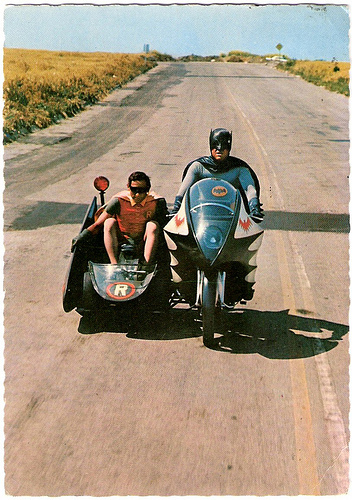
Dutch postcard by Vita Nova, Schiedam, no. B/10/49. Sent by mail in 1967. Photo: National Periodical Publications Inc. Publicity still for the 20th Century-Fox Film Batman (Leslie H. Martinson, 1966) with Burt Ward as Robin and Adam West as Batman.
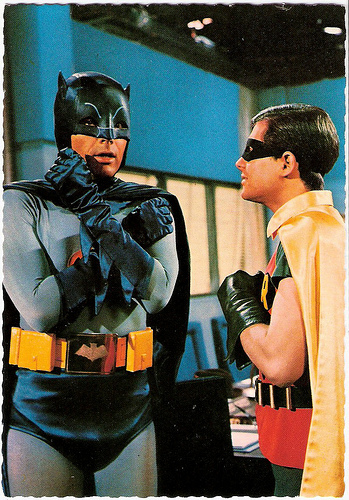
Dutch postcard by Vita Nova, Schiedam, no. 1 B/10/49. Photo: National Periodical Publications Inc. / 20th Century Fox. Publicity still for Batman (1966).
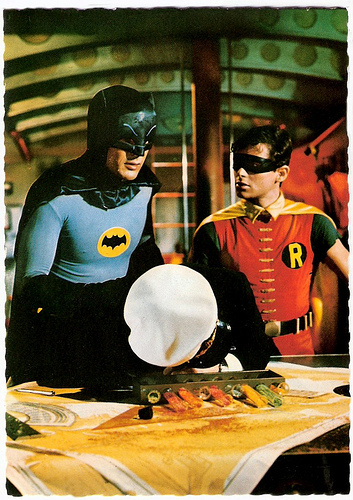
Dutch postcard by Vita Nova, Schiedam, no. 2 B/10/49. Photo: National Periodical Publications Inc. / 20th Century Fox. Publicity still for Batman (1966).
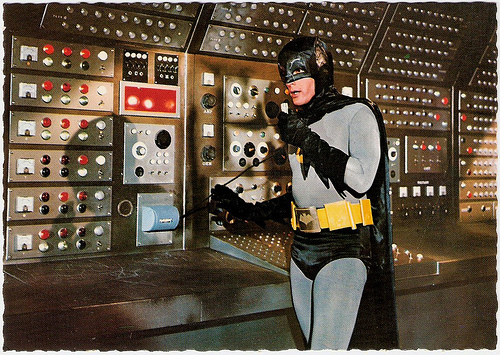
Dutch postcard by Vita Nova, Schiedam, no. 4 B/10/49. Photo: National Periodical Publications Inc. Publicity still for the 20th Century-Fox Film Batman (1966).
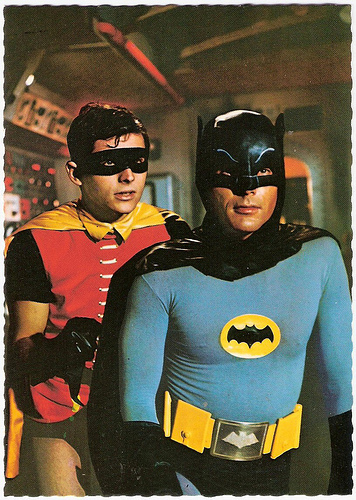
Dutch postcard by Vita Nova, Schiedam, no. 5 B/10/49. Photo: National Periodical Publications Inc. / 20th Century Fox. Publicity still for Batman (1966).
A gathering of four of the most powerful villains in Gotham City
Batman (Leslie H. Martinson, 1966) or Batman: The Movie is an American superhero film based on the Batman television series, and the first full-length theatrical adaptation of the DC Comics character Batman. Released by 20th Century Fox, the film reprised Adam West as Batman and Burt Ward as Robin. The film hit theatres two months after the last episode of the first season of the television series. The film includes most members of the original TV cast, with the exception of Lee Meriwether as Catwoman, the character previously played by Julie Newmar in two episodes of the series' first season.
When Batman and Robin get a tip that Commodore Schmidlapp ( Reginald Denny ) is in danger aboard his yacht, they launch a rescue mission using the Batcopter. As Batman descends on the bat-ladder to land on the yacht, it suddenly vanishes beneath him. He rises out of the sea with a shark attacking his leg. After Batman dislodges it with bat-shark repellent, the shark explodes. Batman and Robin head back to Commissioner Gordon's (Neil Hamilton) office, where they deduce that the tip was a set-up by the United Underworld, a gathering of four of the most powerful villains in Gotham City: The Catwoman (Lee Meriwether), The Riddler (Frank Gorshin), The Penguin (Burgess Meredith), and The Joker (Cesar Romero).
The United Underworld equip themselves with a dehydrator that can turn humans into dust (an invention of Schmidlapp, who is unaware that he has been kidnapped), a submarine made to resemble a penguin, and their three pirate henchmen (Bluebeard (Gil Perkins), Morgan (Dick Crockett) and Quetch (George Sawaya)). It is revealed the yacht was really a projection. When Batman and Robin return to a buoy concealing a projector, they are trapped on the buoy by a magnet and targeted by torpedoes. They use a radio-detonator to destroy two of the missiles, and a porpoise sacrifices itself to intercept the last one.
Catwoman, disguised as Soviet journalist "Kitayna Ireyna Tatanya Kerenska Alisoff" (acronymed as Kitka), helps the group kidnap Bruce Wayne and pretends to be kidnapped with him, as part of a plot to lure Batman and finish him off with another of the Penguin's explosive animals (not knowing that Bruce Wayne is Batman's alter-ego). After Bruce Wayne escapes captivity, the Penguin disguises himself as the Commodore and schemes his way into the Batcave along with five dehydrated henchmen. This plan fails when the henchmen unexpectedly disappear into antimatter once struck: The Penguin mistakenly rehydrated them with heavy water, used to recharge the Batcave's atomic pile.
Ultimately, Batman and Robin are unable to prevent the kidnapping of the dehydrated United World Organization's Security Council. Giving chase in the batboat to retrieve them (and Miss Kitka, presumed by the duo as still captive), Robin uses a sonic charge weapon to disable The Penguin's submarine and force it to surface, where a fist fight ensues. Although Batman and Robin win the fight, Batman is heartbroken to find out that his 'true love' Miss Kitka is actually Catwoman when her mask falls off.
Commodore Schmidlapp accidentally breaks the vials containing the powdered Council members, mixing them together. Batman sets to work, constructing an elaborate filter to separate the mingled dust. Robin asks him whether it might be in the world's best interests for them to alter the dust samples, so that humans can no longer harm one another. In response, Batman says that they cannot do so, reminding Robin of the fate of the Penguin's henchmen and their tainted rehydration, and can only hope for people in general to learn to live together peacefully on their own.
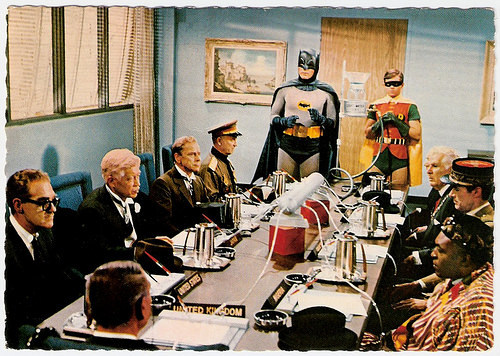
Dutch postcard by Vita Nova, Schiedam, no. 7 B/10/49. Photo: National Periodical Publications Inc. Publicity still for the 20th Century-Fox Film Batman (1966).
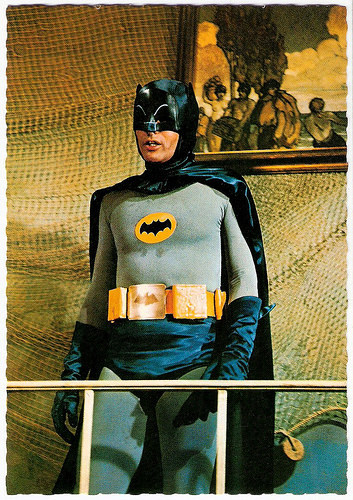
Dutch postcard by Vita Nova, Schiedam, no. 8 B/10/49. Photo: National Periodical Publications Inc. Publicity still for the 20th Century-Fox Film Batman (1966).
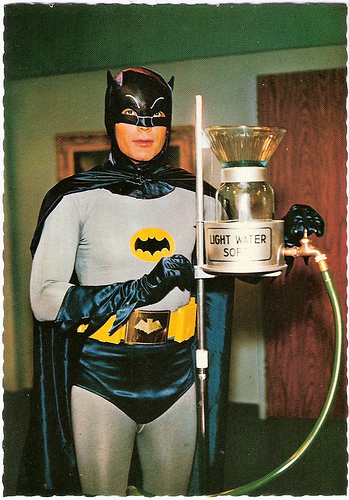
Dutch postcard by Vita Nova, Schiedam, no. 9 B/10/49. Photo: National Periodical Publications Inc. Publicity still for the 20th Century-Fox Film Batman (1966).
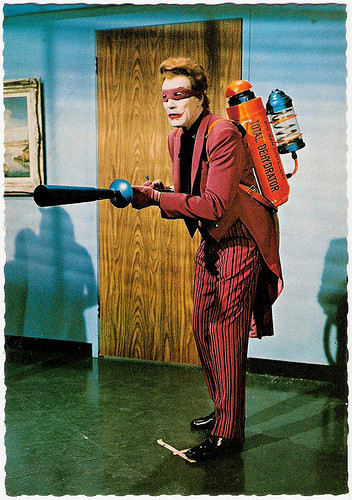
Dutch postcard by Vita Nova, Schiedam, no. 10 B/10/49. Photo: National Periodical Publications Inc. Publicity still for the 20th Century-Fox Film Batman (Leslie H. Martinson, 1966) with Cesar Romero as The Joker. Note the tape mark Romero had to stand on to be in frame.
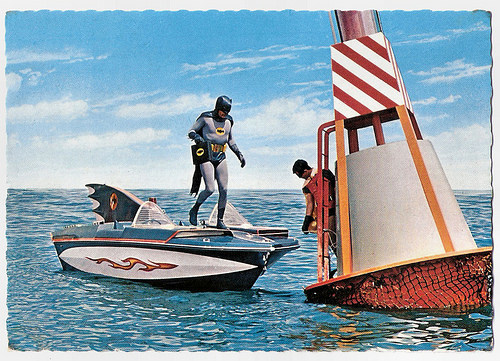
Dutch postcard by Vita Nova, Schiedam, no. B /10/49. Photo: National Periodical Publications Inc. Publicity still for the 20th Century-Fox Film Batman (1966).
Nuns, infants and lovebirds beware!
With the world watching, the Security Council is re-hydrated. All of the members are restored alive and well, but continue to squabble amongst themselves, totally oblivious of their surroundings, but each of them now speaks the language and displays the stereotypical mannerisms of a nation other than their own. Batman quietly expresses his sincere hope to Robin that this "mixing of minds" does more good than it does harm.
The duo quietly leave United World Headquarters by climbing out of the window and descending on their batropes. Of the three new Batvehicles which first appeared in the Batman film, only the Batcycle properly crossed over into the TV series as the budgetary limits of the TV series precluded the full use of the others. While the Batcopter and Batboat from the film appeared briefly in episodes, they primarily did so in the form of stock-footage scenes from the film intercut into the series.
The film includes most members of the original TV cast: Alan Napier as Alfred, Madge Blake as Aunt Harriet, and Stafford Repp as Chief O'Hara also reprised their roles. Julie Newmar had other commitments at that time and was replaced by Lee Meriwether (Miss America 1955) in the film. Catwoman was nonetheless played by Newmar once again in the following eleven episodes of season two of the series. Eartha Kitt would then play Catwoman in three episodes of season three.
For Reginald Denny , Batman (1966) was his final film appearance. Director Leslie H. Martinson had directed a pair of the television series season one episodes: The Penguin Goes Straight and Not Yet, He Ain't. Batman premiered at the Paramount Theatre in Austin, Texas on 30 July 1966, between the first and second seasons of the TV series. It was moderately successful at the box office.
The film has received generally positive reviews over the years. Phil Lindholm at IMDb : "Thanks to it's 'hip' humor, an eye-popping kaleidoscope of bizarre color backgrounds and a cast of "guest villains" second to none: Julie Newmar, Cesar Romero, Anne Baxter, Burgess Meredith (the list goes on and on) the show was an immediate smash. Suddenly, America became "batty" and it's popularity was so great that stars scrambled for a chance to appear on the program. (...) despite mass bookings in every theater available, the film came and went. But, seen today, Batman holds up well, capturing perfectly what was one of the biggest fads to come along in the sixties."
TCH at TimeOut London : "With a flip script by Lorenzo Semple Jr, it has a few inspired slapstick sequences, but the emphatic senselessness gradually becomes tiresome. More surprisingly, the production work is by and large excellent. Nelson Riddle's musical cues are fun, and the design still looks sleek today - I'd choose Adam West's Batmobile over Michael Keaton's any day."
Jeremy Beday at AllMovie : "The entire cast is excellent, particularly West and Ward, who distinguish themselves among a standout list with hilariously straight-faced performances. The film includes some truly memorable scenes, highlighted by a particularly tenacious shark with a vertical leap that would put Spud Webb to shame and a bomb on the waterfront with no place to explode (nuns, infants and lovebirds beware!).
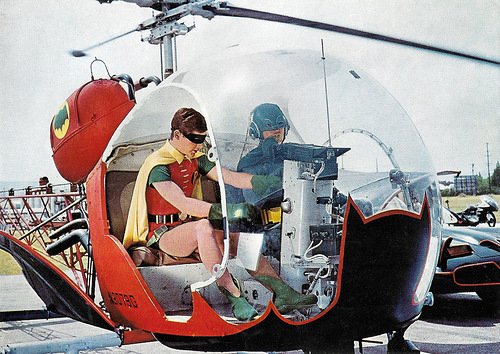
Dutch promotional postcard for Okee. Photo: publicity still for Batman (Leslie H. Martinson, 1966) with Burt Ward as Robin and Adam West as Batman.
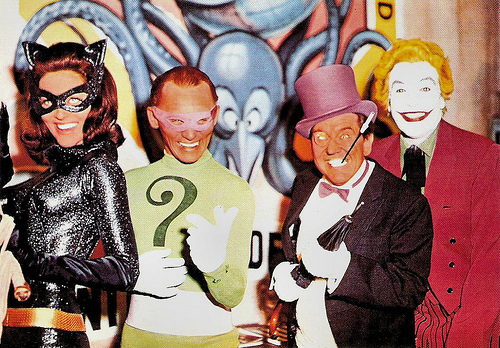
Dutch promotional postcard for Okee. Photo: National Periodical Publications Inc. / 20th Century Fox. Publicity still for Batman - The Movie (1966) with Lee Meriwether as The Catwoman/Kitka, Frank Gorshin as The Riddler, Burgess Meredith as The Penguin, and Cesar Romero as The Joker.
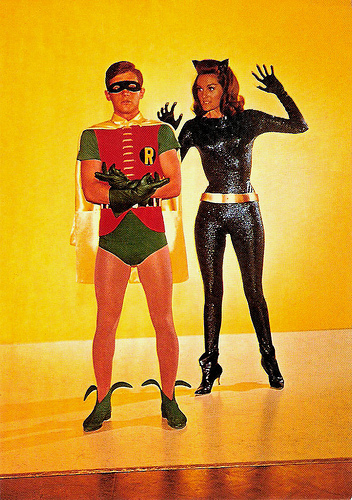
Dutch promotional postcard for Okee. Photo: National Periodical Publications Inc. / 20th Century Fox. Publicity still for Batman (1966) with Burt Ward and Lee Meriwether as Catwoman.

Spanish postcard by Postal Oscarcolor S.A., Hospitalet (Barcelona), no. 693. Photo: publicity still for Batman (Leslie H. Martinson, 1966).
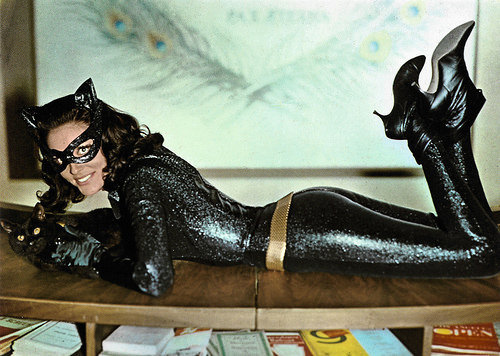
British postcard by Klasik Kards, London, no. 1557. Photo: publicity still for Batman (Leslie H. Martinson, 1966) with Lee Meriwether as Catwoman.
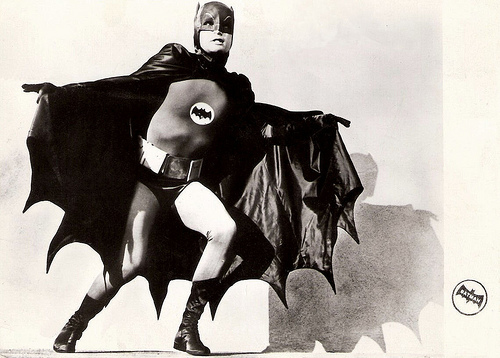
Dutch postcard by KRO.
Sources: Jeremy Beday (AllMovie), Phil Lindholm (IMDb), TCH (TimeOut London), Wikipedia and IMDb.

Dutch postcard by Vita Nova, Schiedam, no. B/10/49. Sent by mail in 1967. Photo: National Periodical Publications Inc. Publicity still for the 20th Century-Fox Film Batman (Leslie H. Martinson, 1966) with Burt Ward as Robin and Adam West as Batman.

Dutch postcard by Vita Nova, Schiedam, no. 1 B/10/49. Photo: National Periodical Publications Inc. / 20th Century Fox. Publicity still for Batman (1966).

Dutch postcard by Vita Nova, Schiedam, no. 2 B/10/49. Photo: National Periodical Publications Inc. / 20th Century Fox. Publicity still for Batman (1966).

Dutch postcard by Vita Nova, Schiedam, no. 4 B/10/49. Photo: National Periodical Publications Inc. Publicity still for the 20th Century-Fox Film Batman (1966).

Dutch postcard by Vita Nova, Schiedam, no. 5 B/10/49. Photo: National Periodical Publications Inc. / 20th Century Fox. Publicity still for Batman (1966).
A gathering of four of the most powerful villains in Gotham City
Batman (Leslie H. Martinson, 1966) or Batman: The Movie is an American superhero film based on the Batman television series, and the first full-length theatrical adaptation of the DC Comics character Batman. Released by 20th Century Fox, the film reprised Adam West as Batman and Burt Ward as Robin. The film hit theatres two months after the last episode of the first season of the television series. The film includes most members of the original TV cast, with the exception of Lee Meriwether as Catwoman, the character previously played by Julie Newmar in two episodes of the series' first season.
When Batman and Robin get a tip that Commodore Schmidlapp ( Reginald Denny ) is in danger aboard his yacht, they launch a rescue mission using the Batcopter. As Batman descends on the bat-ladder to land on the yacht, it suddenly vanishes beneath him. He rises out of the sea with a shark attacking his leg. After Batman dislodges it with bat-shark repellent, the shark explodes. Batman and Robin head back to Commissioner Gordon's (Neil Hamilton) office, where they deduce that the tip was a set-up by the United Underworld, a gathering of four of the most powerful villains in Gotham City: The Catwoman (Lee Meriwether), The Riddler (Frank Gorshin), The Penguin (Burgess Meredith), and The Joker (Cesar Romero).
The United Underworld equip themselves with a dehydrator that can turn humans into dust (an invention of Schmidlapp, who is unaware that he has been kidnapped), a submarine made to resemble a penguin, and their three pirate henchmen (Bluebeard (Gil Perkins), Morgan (Dick Crockett) and Quetch (George Sawaya)). It is revealed the yacht was really a projection. When Batman and Robin return to a buoy concealing a projector, they are trapped on the buoy by a magnet and targeted by torpedoes. They use a radio-detonator to destroy two of the missiles, and a porpoise sacrifices itself to intercept the last one.
Catwoman, disguised as Soviet journalist "Kitayna Ireyna Tatanya Kerenska Alisoff" (acronymed as Kitka), helps the group kidnap Bruce Wayne and pretends to be kidnapped with him, as part of a plot to lure Batman and finish him off with another of the Penguin's explosive animals (not knowing that Bruce Wayne is Batman's alter-ego). After Bruce Wayne escapes captivity, the Penguin disguises himself as the Commodore and schemes his way into the Batcave along with five dehydrated henchmen. This plan fails when the henchmen unexpectedly disappear into antimatter once struck: The Penguin mistakenly rehydrated them with heavy water, used to recharge the Batcave's atomic pile.
Ultimately, Batman and Robin are unable to prevent the kidnapping of the dehydrated United World Organization's Security Council. Giving chase in the batboat to retrieve them (and Miss Kitka, presumed by the duo as still captive), Robin uses a sonic charge weapon to disable The Penguin's submarine and force it to surface, where a fist fight ensues. Although Batman and Robin win the fight, Batman is heartbroken to find out that his 'true love' Miss Kitka is actually Catwoman when her mask falls off.
Commodore Schmidlapp accidentally breaks the vials containing the powdered Council members, mixing them together. Batman sets to work, constructing an elaborate filter to separate the mingled dust. Robin asks him whether it might be in the world's best interests for them to alter the dust samples, so that humans can no longer harm one another. In response, Batman says that they cannot do so, reminding Robin of the fate of the Penguin's henchmen and their tainted rehydration, and can only hope for people in general to learn to live together peacefully on their own.

Dutch postcard by Vita Nova, Schiedam, no. 7 B/10/49. Photo: National Periodical Publications Inc. Publicity still for the 20th Century-Fox Film Batman (1966).

Dutch postcard by Vita Nova, Schiedam, no. 8 B/10/49. Photo: National Periodical Publications Inc. Publicity still for the 20th Century-Fox Film Batman (1966).

Dutch postcard by Vita Nova, Schiedam, no. 9 B/10/49. Photo: National Periodical Publications Inc. Publicity still for the 20th Century-Fox Film Batman (1966).

Dutch postcard by Vita Nova, Schiedam, no. 10 B/10/49. Photo: National Periodical Publications Inc. Publicity still for the 20th Century-Fox Film Batman (Leslie H. Martinson, 1966) with Cesar Romero as The Joker. Note the tape mark Romero had to stand on to be in frame.

Dutch postcard by Vita Nova, Schiedam, no. B /10/49. Photo: National Periodical Publications Inc. Publicity still for the 20th Century-Fox Film Batman (1966).
Nuns, infants and lovebirds beware!
With the world watching, the Security Council is re-hydrated. All of the members are restored alive and well, but continue to squabble amongst themselves, totally oblivious of their surroundings, but each of them now speaks the language and displays the stereotypical mannerisms of a nation other than their own. Batman quietly expresses his sincere hope to Robin that this "mixing of minds" does more good than it does harm.
The duo quietly leave United World Headquarters by climbing out of the window and descending on their batropes. Of the three new Batvehicles which first appeared in the Batman film, only the Batcycle properly crossed over into the TV series as the budgetary limits of the TV series precluded the full use of the others. While the Batcopter and Batboat from the film appeared briefly in episodes, they primarily did so in the form of stock-footage scenes from the film intercut into the series.
The film includes most members of the original TV cast: Alan Napier as Alfred, Madge Blake as Aunt Harriet, and Stafford Repp as Chief O'Hara also reprised their roles. Julie Newmar had other commitments at that time and was replaced by Lee Meriwether (Miss America 1955) in the film. Catwoman was nonetheless played by Newmar once again in the following eleven episodes of season two of the series. Eartha Kitt would then play Catwoman in three episodes of season three.
For Reginald Denny , Batman (1966) was his final film appearance. Director Leslie H. Martinson had directed a pair of the television series season one episodes: The Penguin Goes Straight and Not Yet, He Ain't. Batman premiered at the Paramount Theatre in Austin, Texas on 30 July 1966, between the first and second seasons of the TV series. It was moderately successful at the box office.
The film has received generally positive reviews over the years. Phil Lindholm at IMDb : "Thanks to it's 'hip' humor, an eye-popping kaleidoscope of bizarre color backgrounds and a cast of "guest villains" second to none: Julie Newmar, Cesar Romero, Anne Baxter, Burgess Meredith (the list goes on and on) the show was an immediate smash. Suddenly, America became "batty" and it's popularity was so great that stars scrambled for a chance to appear on the program. (...) despite mass bookings in every theater available, the film came and went. But, seen today, Batman holds up well, capturing perfectly what was one of the biggest fads to come along in the sixties."
TCH at TimeOut London : "With a flip script by Lorenzo Semple Jr, it has a few inspired slapstick sequences, but the emphatic senselessness gradually becomes tiresome. More surprisingly, the production work is by and large excellent. Nelson Riddle's musical cues are fun, and the design still looks sleek today - I'd choose Adam West's Batmobile over Michael Keaton's any day."
Jeremy Beday at AllMovie : "The entire cast is excellent, particularly West and Ward, who distinguish themselves among a standout list with hilariously straight-faced performances. The film includes some truly memorable scenes, highlighted by a particularly tenacious shark with a vertical leap that would put Spud Webb to shame and a bomb on the waterfront with no place to explode (nuns, infants and lovebirds beware!).

Dutch promotional postcard for Okee. Photo: publicity still for Batman (Leslie H. Martinson, 1966) with Burt Ward as Robin and Adam West as Batman.

Dutch promotional postcard for Okee. Photo: National Periodical Publications Inc. / 20th Century Fox. Publicity still for Batman - The Movie (1966) with Lee Meriwether as The Catwoman/Kitka, Frank Gorshin as The Riddler, Burgess Meredith as The Penguin, and Cesar Romero as The Joker.

Dutch promotional postcard for Okee. Photo: National Periodical Publications Inc. / 20th Century Fox. Publicity still for Batman (1966) with Burt Ward and Lee Meriwether as Catwoman.

Spanish postcard by Postal Oscarcolor S.A., Hospitalet (Barcelona), no. 693. Photo: publicity still for Batman (Leslie H. Martinson, 1966).

British postcard by Klasik Kards, London, no. 1557. Photo: publicity still for Batman (Leslie H. Martinson, 1966) with Lee Meriwether as Catwoman.

Dutch postcard by KRO.
Sources: Jeremy Beday (AllMovie), Phil Lindholm (IMDb), TCH (TimeOut London), Wikipedia and IMDb.
Published on December 31, 2018 22:00
December 30, 2018
Stars Who Passed Away in 2018
On the last day of the year, EFSP remembers fifteen stars of the international cinema we had to say goodbye to in 2018. Thank you, for your films.
7 January: France Gall (1947-2018)
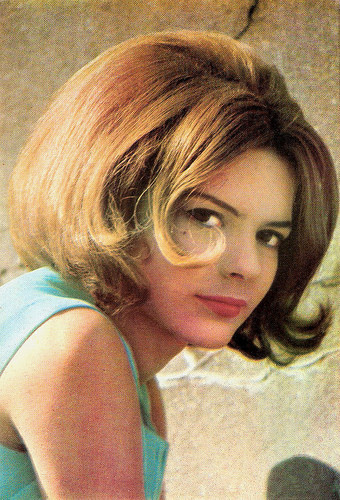
French postcard by Ed. Borde, no. 100. Photo: Wiezniak / Philips.
French singer France Gall died at the age of 70 after suffering from cancer for two years. She rocketed to fame in the 1960s as a naive young singer performing songs written by Serge Gainsbourg. She won the 1965 Eurovision Song Contest with his Poupée de cire, poupée de son. In 1965, Gall was sought by Walt Disney to appear as Alice in a musical film version of Alice in Wonderland. The project appealed to her, but was cancelled after Disney's death in 1966. After meeting and marrying, French singer-songwriter Michel Berger, her career was completely turned around and she went on to make a name for herself as one of the top female artists on the French music scene.
10 January: Angelika Meissner (1940-2018)

German postcard by Rüdel-Verlag, Hamburg-Bergedorf., no. 2080. Photo: Deutsche Film Hansa / Lilo. Publicity still for Witwer mit 5 Töchtern/Widower with 5 Daughters (Erich Engels, 1957).
German actress Angelika Meissner was a child star of the German cinema in the 1950s. Angelika became known with the three Immenhof films, which are still popular in the German-speaking countries. But her mother was the stage mum from hell. In 1963, she stopped acting and went to live in Canada for a long time, where she occasionally worked as an architect. Angelika Meissner died in a Berlin nursing home. She was 78.
15 January: Peter Wyngarde (1928-2018)
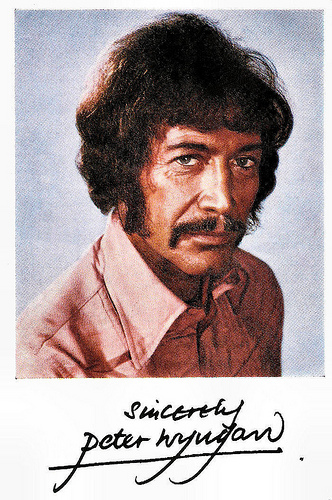
Vintage card.
French-born English actor Peter Wyngarde played Jason King, a bestselling novelist turned sleuth, in two legendary British television series: Department S (1969–1970) and Jason King (1971–1972). In 1975, Wyngarde was arrested, convicted and fined £75 for an act of 'gross indecency'. Later, Wyngarde returned to British television and incidentally appeared in films, such as in Flash Gordon (1980), resuming a successful career until 1994.
19 January: Dorothy Malone (1925-2018)

French postcard by Editions P.I., Paris, no. 832, offered by Les Carbones Korès 'Carboplane'. Photo: Browning Studio H.P.S.
American actress Dorothy Malone was a dreamy-eyed beauty, who started her film career in Frank Sinatra musicals during the 1940s. She won a Best Supporting Actress Oscar for her sultry role in Written on the Wind (1956), but she was best known by the public as Constance MacKenzie in the TV series Peyton Place (1964-1968). Her final role was as Sharon Stone's mysterious friend in Basic Instinct (1992). Dorothy Malone was 92 (some sources say 93).
9 February: John Gavin (1931-2018)
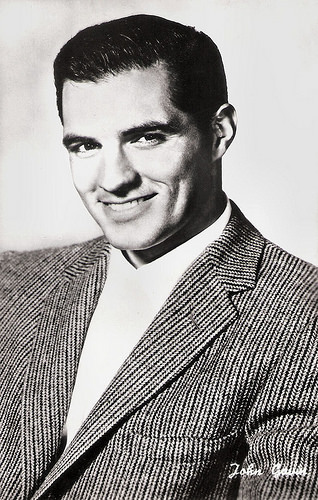
French postcard.
American actor John Gavin died of leukaemia at the age of 86. In the late 1950s, he was hailed at Universal Pictures as a second coming of Rock Hudson. Gavin played Lana Turner's love interest in Douglas Sirk's remake of Imitation of Life (1959); portrayed Sam Loomis, who as Janet Leigh's boyfriend helps solves the mystery of Norman Bates, in Alfred Hitchcock's Psycho (1960); and was the object of Julie Andrews and Mary Tyler Moore's affections in George Roy Hill's Thoroughly Modern Millie (1967). He was almost signed on to play James Bond in Diamonds Are Forever (1971) but the role eventually returned to Sean Connery .
11 March: Siegfried Rauch (1932-2018)
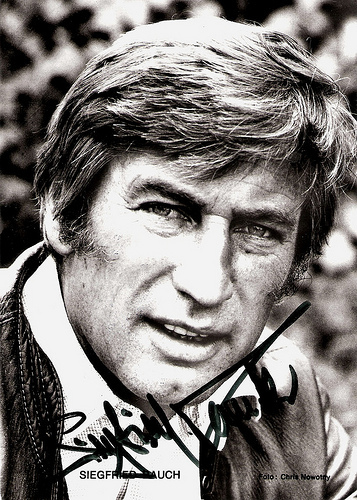
German postcard by Franz Josef Rüdel, Filmpostkartenverlag, Hamburg. Photo: Chris Nowotny, Múnchen.
Siegfried Rauch was a popular German film and television actor. In the 1970s he appeared in several international films, including Le Mans (1971) as the rival of Steve McQueen at a Le Mans auto race. For over 60 years, Rauch acted in approximately 200 productions, and he remained active until his death. The 85-years-old Rauch died from injuries suffered when falling down stairs at a fire station near his home in Obersöchering near Munich.
12 March: Oleg Tabakov (1935-2018)
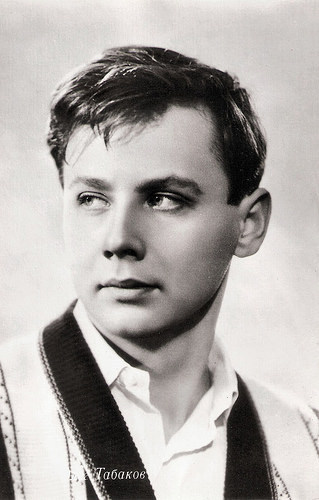
Russian postcard by Izdanije Byuro Propogandy Sovietskogo Kinoiskusstva, no. A 07154.
Oleg Tabakov was a renown Soviet and Russian actor and the artistic director of the Moscow Art Theatre. Tabakov's film career was equally impressive with roles as Count Nikita Rostov in Voyna i mir I/War and Peace (1966-1967) by Sergei Bondarchuk, and as the title figure in Oblomow (1981) by Nikita Mikhalkov. He died from heart attack at the age 82.
24 March: Lys Assia (1924-2018)
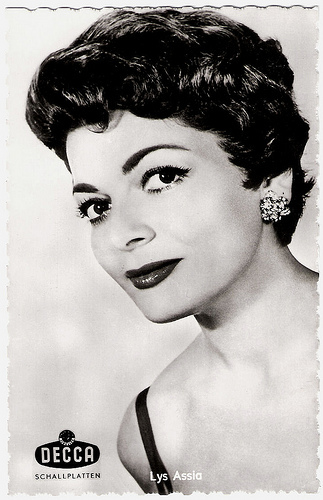
German postcard by Kolibri-Verlag, Minden/Westf.no. 2428. Photo: Teldec.
Swiss singer and actress Lys Assia was the winner of the very first Eurovision Song Contest in 1956. The sparkling and beautiful grande dame of the German Schlager appeared as a singer in several films of the 1950s. Lys Assia was 94.
27 March: Stéphane Audran (1932-2018)
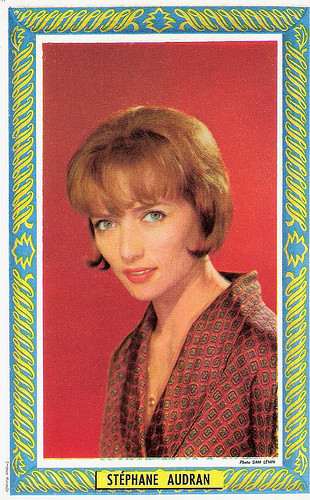
French postcard by St. Anne, Marseille. Photo: Sam Lévin.
French film and television actress Stéphane Audran was the cool and aristocratic looking star in Oscar winning films such as Le charme discret de la bourgeoisie (1972) and Babettes gæstebud/Babette's Feast (1987). She appeared in many films by director and screenwriter Claude Chabrol, who was her husband for 16 years. Stéphane Audran was 85.
21 May: Clint Walker (1927-2018)
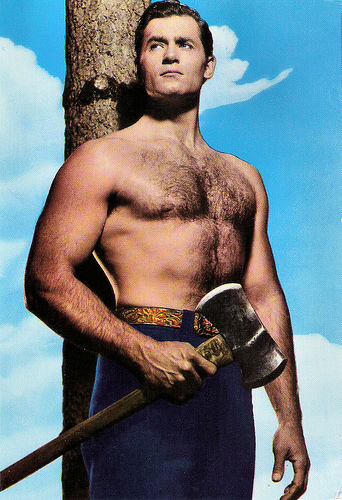
Spanish postcard by Raker, no. 1155, 1965. Photo: publicity still for Cheyenne (1955-1962).
Heavy set, athletic Clint Walker was an American actor and singer. In the 1950s, Walker with his broad shoulders and slim waist almost single-handedly started the Western craze on TV in his role as Cheyenne Bodie in Cheyenne (1955-1962). During the 1960s he starred in several films, like the war drama The Dirty Dozen (1967). Clint Walker died of congestive heart failure in Grass Valley, California, nine days before his 91st birthday.
8 July: Tab Hunter (1931-2018)
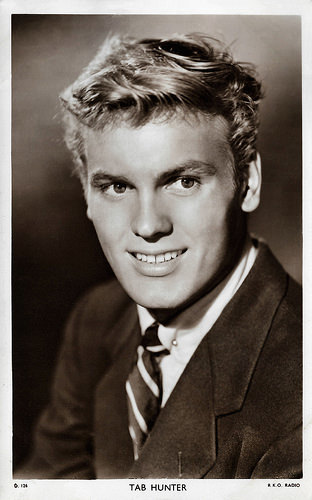
British postcard in the Picturegoer series, London, no. D 126. Photo: R.K.O. Radio.
With his blond, tanned, surfer-boy good looks, Tab Hunter was one of Hollywood’s hottest teen idols of the 1950s era. The American actor, singer, and author portrayed boy-next-door marines, cowboys and swoon-bait sweethearts in many films, and had a huge hit with the song Young Love (1957). He hid his homosexuality and his relationship with actor Anthony Perkins . When his career faded during the 1960s, he starred in Spaghetti Westerns in Italy. In the 1980s, Hunter returned to the cinemas opposite Divine in the camp classics Polyester (1981) and Lust in the Dust (1985). Tab Hunter was 86.
21 September: Peter Bosse (1931-2018)
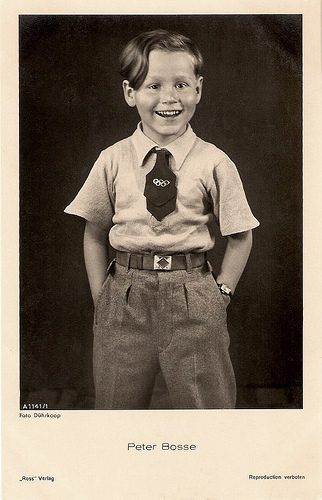
German Postcard by Ross Verlag, no. A 1276/1, 1937-1938. Photo: Dührkoop.
Actor, presenter and journalist Peter Bosse was a popular child star of the German cinema in the 1930s. The boy with his cheeky face made 28 films. His film career ended when WWII started. The Nazi’s didn’t permit him to act in films anymore on account of 'racial and ideological reasons'. After the war he followed acting classes and started to work as a stage actor in Berlin. Later he switched to the radio.
1 October: Charles Aznavour (1924-2018)

French postcard by Editions P.I., Paris, no. 1008. Photo: Sam Lévin.
Armenian-French singer and actor Charles Aznavour passed away on 1 October. Besides being one of France's most popular and enduring performers, he was also one of the most well-known singers in the world. The ‘Frank Sinatra of France’ was known for his characteristic short figure and unique tenor voice. He appeared in more than 60 films, composed about 1,000 songs, and sold well over 100 million records. For his film work Aznavour was awarded a Honorary César (the French Oscar) in 1997. Aznavour was 94.
14 November: Rolf Hoppe (1930-2018)
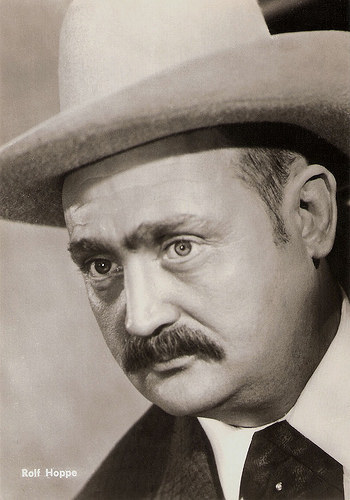
East-German postcard by VEB Progress Film-Vertrieb, Berlin, no. 61/70. Photo: publicity still for Tödlicher Irrtum/Fatal Error (Konrad Petzold, 1970).
On 14 November 2018, German stage and film actor Rolf Hoppe (1930-2018) passed away. With his huge shape and nearly bald head, Hoppe mainly played many funny characters like professors, wealthy patriarchs and aristocrats in East-German films and on TV. He was also the villain in several Easterns, produced by the DEFA, the official East-German film studio. Since 1963, Hoppe had appeared in over 300 stage plays, TV-series and films. He was 87.
19 November: Dominique Blanchar
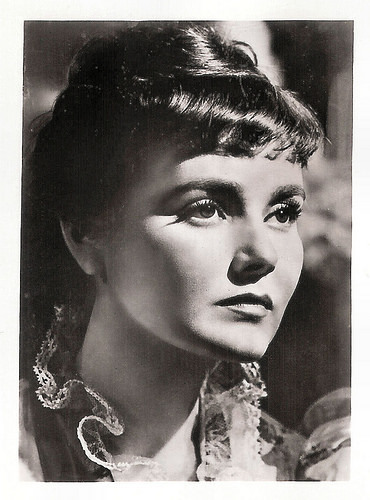
Small West-German collectors card by Greiling Sammelbilder, Serie E, no. 93. Photo: Constantin-Film. Publicity still for Le secret de Mayerling/The Secret of Mayerling (Jean Delannoy, 1949).
French actress Dominique Blanchar passed away at the age of 91. The beautiful Parisienne was the daughter of the actors Pierre Blanchar and Marthe Vinot. Her career was focused on stage acting, and she made her debut in the 1940s. But she also worked for television and acted in several films. Her first film appearance was as Marie Vetsera in Le secret de Mayerling/The Secret of Mayerling (Jean Delannoy, 1949) opposite Jean Marais. Her best known film is probably the Italian classic L'Avventura/The Adventure (1960) directed by Michelangelo Antonioni and starring Gabriele Ferzetti, and Monica Vitti.
7 January: France Gall (1947-2018)

French postcard by Ed. Borde, no. 100. Photo: Wiezniak / Philips.
French singer France Gall died at the age of 70 after suffering from cancer for two years. She rocketed to fame in the 1960s as a naive young singer performing songs written by Serge Gainsbourg. She won the 1965 Eurovision Song Contest with his Poupée de cire, poupée de son. In 1965, Gall was sought by Walt Disney to appear as Alice in a musical film version of Alice in Wonderland. The project appealed to her, but was cancelled after Disney's death in 1966. After meeting and marrying, French singer-songwriter Michel Berger, her career was completely turned around and she went on to make a name for herself as one of the top female artists on the French music scene.
10 January: Angelika Meissner (1940-2018)

German postcard by Rüdel-Verlag, Hamburg-Bergedorf., no. 2080. Photo: Deutsche Film Hansa / Lilo. Publicity still for Witwer mit 5 Töchtern/Widower with 5 Daughters (Erich Engels, 1957).
German actress Angelika Meissner was a child star of the German cinema in the 1950s. Angelika became known with the three Immenhof films, which are still popular in the German-speaking countries. But her mother was the stage mum from hell. In 1963, she stopped acting and went to live in Canada for a long time, where she occasionally worked as an architect. Angelika Meissner died in a Berlin nursing home. She was 78.
15 January: Peter Wyngarde (1928-2018)

Vintage card.
French-born English actor Peter Wyngarde played Jason King, a bestselling novelist turned sleuth, in two legendary British television series: Department S (1969–1970) and Jason King (1971–1972). In 1975, Wyngarde was arrested, convicted and fined £75 for an act of 'gross indecency'. Later, Wyngarde returned to British television and incidentally appeared in films, such as in Flash Gordon (1980), resuming a successful career until 1994.
19 January: Dorothy Malone (1925-2018)

French postcard by Editions P.I., Paris, no. 832, offered by Les Carbones Korès 'Carboplane'. Photo: Browning Studio H.P.S.
American actress Dorothy Malone was a dreamy-eyed beauty, who started her film career in Frank Sinatra musicals during the 1940s. She won a Best Supporting Actress Oscar for her sultry role in Written on the Wind (1956), but she was best known by the public as Constance MacKenzie in the TV series Peyton Place (1964-1968). Her final role was as Sharon Stone's mysterious friend in Basic Instinct (1992). Dorothy Malone was 92 (some sources say 93).
9 February: John Gavin (1931-2018)

French postcard.
American actor John Gavin died of leukaemia at the age of 86. In the late 1950s, he was hailed at Universal Pictures as a second coming of Rock Hudson. Gavin played Lana Turner's love interest in Douglas Sirk's remake of Imitation of Life (1959); portrayed Sam Loomis, who as Janet Leigh's boyfriend helps solves the mystery of Norman Bates, in Alfred Hitchcock's Psycho (1960); and was the object of Julie Andrews and Mary Tyler Moore's affections in George Roy Hill's Thoroughly Modern Millie (1967). He was almost signed on to play James Bond in Diamonds Are Forever (1971) but the role eventually returned to Sean Connery .
11 March: Siegfried Rauch (1932-2018)

German postcard by Franz Josef Rüdel, Filmpostkartenverlag, Hamburg. Photo: Chris Nowotny, Múnchen.
Siegfried Rauch was a popular German film and television actor. In the 1970s he appeared in several international films, including Le Mans (1971) as the rival of Steve McQueen at a Le Mans auto race. For over 60 years, Rauch acted in approximately 200 productions, and he remained active until his death. The 85-years-old Rauch died from injuries suffered when falling down stairs at a fire station near his home in Obersöchering near Munich.
12 March: Oleg Tabakov (1935-2018)

Russian postcard by Izdanije Byuro Propogandy Sovietskogo Kinoiskusstva, no. A 07154.
Oleg Tabakov was a renown Soviet and Russian actor and the artistic director of the Moscow Art Theatre. Tabakov's film career was equally impressive with roles as Count Nikita Rostov in Voyna i mir I/War and Peace (1966-1967) by Sergei Bondarchuk, and as the title figure in Oblomow (1981) by Nikita Mikhalkov. He died from heart attack at the age 82.
24 March: Lys Assia (1924-2018)

German postcard by Kolibri-Verlag, Minden/Westf.no. 2428. Photo: Teldec.
Swiss singer and actress Lys Assia was the winner of the very first Eurovision Song Contest in 1956. The sparkling and beautiful grande dame of the German Schlager appeared as a singer in several films of the 1950s. Lys Assia was 94.
27 March: Stéphane Audran (1932-2018)

French postcard by St. Anne, Marseille. Photo: Sam Lévin.
French film and television actress Stéphane Audran was the cool and aristocratic looking star in Oscar winning films such as Le charme discret de la bourgeoisie (1972) and Babettes gæstebud/Babette's Feast (1987). She appeared in many films by director and screenwriter Claude Chabrol, who was her husband for 16 years. Stéphane Audran was 85.
21 May: Clint Walker (1927-2018)

Spanish postcard by Raker, no. 1155, 1965. Photo: publicity still for Cheyenne (1955-1962).
Heavy set, athletic Clint Walker was an American actor and singer. In the 1950s, Walker with his broad shoulders and slim waist almost single-handedly started the Western craze on TV in his role as Cheyenne Bodie in Cheyenne (1955-1962). During the 1960s he starred in several films, like the war drama The Dirty Dozen (1967). Clint Walker died of congestive heart failure in Grass Valley, California, nine days before his 91st birthday.
8 July: Tab Hunter (1931-2018)

British postcard in the Picturegoer series, London, no. D 126. Photo: R.K.O. Radio.
With his blond, tanned, surfer-boy good looks, Tab Hunter was one of Hollywood’s hottest teen idols of the 1950s era. The American actor, singer, and author portrayed boy-next-door marines, cowboys and swoon-bait sweethearts in many films, and had a huge hit with the song Young Love (1957). He hid his homosexuality and his relationship with actor Anthony Perkins . When his career faded during the 1960s, he starred in Spaghetti Westerns in Italy. In the 1980s, Hunter returned to the cinemas opposite Divine in the camp classics Polyester (1981) and Lust in the Dust (1985). Tab Hunter was 86.
21 September: Peter Bosse (1931-2018)

German Postcard by Ross Verlag, no. A 1276/1, 1937-1938. Photo: Dührkoop.
Actor, presenter and journalist Peter Bosse was a popular child star of the German cinema in the 1930s. The boy with his cheeky face made 28 films. His film career ended when WWII started. The Nazi’s didn’t permit him to act in films anymore on account of 'racial and ideological reasons'. After the war he followed acting classes and started to work as a stage actor in Berlin. Later he switched to the radio.
1 October: Charles Aznavour (1924-2018)

French postcard by Editions P.I., Paris, no. 1008. Photo: Sam Lévin.
Armenian-French singer and actor Charles Aznavour passed away on 1 October. Besides being one of France's most popular and enduring performers, he was also one of the most well-known singers in the world. The ‘Frank Sinatra of France’ was known for his characteristic short figure and unique tenor voice. He appeared in more than 60 films, composed about 1,000 songs, and sold well over 100 million records. For his film work Aznavour was awarded a Honorary César (the French Oscar) in 1997. Aznavour was 94.
14 November: Rolf Hoppe (1930-2018)

East-German postcard by VEB Progress Film-Vertrieb, Berlin, no. 61/70. Photo: publicity still for Tödlicher Irrtum/Fatal Error (Konrad Petzold, 1970).
On 14 November 2018, German stage and film actor Rolf Hoppe (1930-2018) passed away. With his huge shape and nearly bald head, Hoppe mainly played many funny characters like professors, wealthy patriarchs and aristocrats in East-German films and on TV. He was also the villain in several Easterns, produced by the DEFA, the official East-German film studio. Since 1963, Hoppe had appeared in over 300 stage plays, TV-series and films. He was 87.
19 November: Dominique Blanchar

Small West-German collectors card by Greiling Sammelbilder, Serie E, no. 93. Photo: Constantin-Film. Publicity still for Le secret de Mayerling/The Secret of Mayerling (Jean Delannoy, 1949).
French actress Dominique Blanchar passed away at the age of 91. The beautiful Parisienne was the daughter of the actors Pierre Blanchar and Marthe Vinot. Her career was focused on stage acting, and she made her debut in the 1940s. But she also worked for television and acted in several films. Her first film appearance was as Marie Vetsera in Le secret de Mayerling/The Secret of Mayerling (Jean Delannoy, 1949) opposite Jean Marais. Her best known film is probably the Italian classic L'Avventura/The Adventure (1960) directed by Michelangelo Antonioni and starring Gabriele Ferzetti, and Monica Vitti.
Published on December 30, 2018 22:00
December 29, 2018
Abie's Irish Rose (1928)
Charles 'Buddy' Rogers and Nancy Carroll are the adorable stars of the American comedy drama Abie's Irish Rose (Victor Fleming, 1928). The Paramount production was based on a popular Broadway play. Ross Verlag in Berlin published this series of four sepia postcards on the film, with the film title in three languages: in French Mon Curé chez mon Rabbin (My priest at my rabbi) and in German Dreimal Hochzeit (Three times wedding).

German postcard by Ross Verlag, no. 111/1. Photo: Paramount. Publicity still of Charles Rogers, Nancy Carroll, and Jean Hersholt in Abie's Irish Rose (Victor Fleming, 1928)

German postcard by Ross Verlag, no. 111/2. Photo: Paramount. Publicity still of Charles Rogers, Nancy Carroll and Camillus Proctal in Abie's Irish Rose (Victor Fleming, 1928).
Just Married amid discord and discontent - again and again
The comedy Abie's Irish Rose (Victor Fleming, 1928) is a early talking (part-talkie) film, based on the play Abie's Irish Rose by Anne Nichols, depicting the tumult that arises with the marriage of a young Jewish man and a Catholic Irish girl. Although initially receiving poor reviews, the Broadway play was a commercial hit, running for 2,327 performances between 23 May 1922, and 1 October 1927, at the time the longest run in Broadway theatre history.
The film version of Abie's Irish Rose is quite faithful to the play. Bernard Gorcey and Ida Kramer, who played the Isaac Cohens during the original Broadway run of the show, reprised their roles in this film. During World War I, Jewish Abie Levy (Charles 'Buddy' Rogers) is wounded in combat. While recovering in a hospital, he meets Catholic Rosemary Murphy (Nancy Carroll). They fall in love, return to the United States, and get married in an Episcopal church in Jersey City.
Abie takes Rosemary to his home and to appease his father, he introduces her as his sweetheart, Rosie Murpheski. They are then married by a rabbi (Camillus Pretal). Then Rosemary's hot tempered father, Mr. Patrick Murphy (veteran actor J. Farrell MacDonald) arrives with a priest (comedian Nick Cogley of Mack Sennett's troupe at Keystone). Amid discord and discontent, the young people are married again, this time by the priest.
Disowned by both families, Rosemary and Abie are befriended only by Mr. and Mrs. Isaac Cohen (Bernard Gorcey and Ida Kramer). On Christmas Eve, the Cohens and their rabbi persuade Solomon Levy ( Jean Hersholt ) to see his son and his new grandchildren; the priest urges Patrick Murphy to do the same. This surprise visit begins in acrimony but ends peacefully as Rosemary presents her newborn twins: Patrick Joseph, named for her father, and Rebecca, named for Abie's dead mother, leaving both grandpas happy.
In 1946, the film was remade as Abie's Irish Rose (A. Edward Sutherland, 1946), with Richard Norris and Joanne Dru. This version, which updated the story to World War II, was produced by Bing Crosby. The film also inspired the weekly NBC radio series, Abie's Irish Rose, which ran from 24 January 1942, through 2 September 1944. Faced with listener protests about its stereotyped ethnic portrayals, the radio series was cancelled in 1945.

German postcard by Ross Verlag, no. 111/3. Photo: Paramount. Publicity still of Charles Rogers, Nick Cogley, and Nancy Carroll in Abie's Irish Rose (Victor Fleming, 1928).

German postcard by Ross Verlag, no. 111/4. Photo: Paramount. Publicity still of Ida Kramer and Bernhard Gorcey in Abie's Irish Rose (Victor Fleming, 1928).
Sources: Afi.com, Wikipedia and IMDb.

German postcard by Ross Verlag, no. 111/1. Photo: Paramount. Publicity still of Charles Rogers, Nancy Carroll, and Jean Hersholt in Abie's Irish Rose (Victor Fleming, 1928)

German postcard by Ross Verlag, no. 111/2. Photo: Paramount. Publicity still of Charles Rogers, Nancy Carroll and Camillus Proctal in Abie's Irish Rose (Victor Fleming, 1928).
Just Married amid discord and discontent - again and again
The comedy Abie's Irish Rose (Victor Fleming, 1928) is a early talking (part-talkie) film, based on the play Abie's Irish Rose by Anne Nichols, depicting the tumult that arises with the marriage of a young Jewish man and a Catholic Irish girl. Although initially receiving poor reviews, the Broadway play was a commercial hit, running for 2,327 performances between 23 May 1922, and 1 October 1927, at the time the longest run in Broadway theatre history.
The film version of Abie's Irish Rose is quite faithful to the play. Bernard Gorcey and Ida Kramer, who played the Isaac Cohens during the original Broadway run of the show, reprised their roles in this film. During World War I, Jewish Abie Levy (Charles 'Buddy' Rogers) is wounded in combat. While recovering in a hospital, he meets Catholic Rosemary Murphy (Nancy Carroll). They fall in love, return to the United States, and get married in an Episcopal church in Jersey City.
Abie takes Rosemary to his home and to appease his father, he introduces her as his sweetheart, Rosie Murpheski. They are then married by a rabbi (Camillus Pretal). Then Rosemary's hot tempered father, Mr. Patrick Murphy (veteran actor J. Farrell MacDonald) arrives with a priest (comedian Nick Cogley of Mack Sennett's troupe at Keystone). Amid discord and discontent, the young people are married again, this time by the priest.
Disowned by both families, Rosemary and Abie are befriended only by Mr. and Mrs. Isaac Cohen (Bernard Gorcey and Ida Kramer). On Christmas Eve, the Cohens and their rabbi persuade Solomon Levy ( Jean Hersholt ) to see his son and his new grandchildren; the priest urges Patrick Murphy to do the same. This surprise visit begins in acrimony but ends peacefully as Rosemary presents her newborn twins: Patrick Joseph, named for her father, and Rebecca, named for Abie's dead mother, leaving both grandpas happy.
In 1946, the film was remade as Abie's Irish Rose (A. Edward Sutherland, 1946), with Richard Norris and Joanne Dru. This version, which updated the story to World War II, was produced by Bing Crosby. The film also inspired the weekly NBC radio series, Abie's Irish Rose, which ran from 24 January 1942, through 2 September 1944. Faced with listener protests about its stereotyped ethnic portrayals, the radio series was cancelled in 1945.

German postcard by Ross Verlag, no. 111/3. Photo: Paramount. Publicity still of Charles Rogers, Nick Cogley, and Nancy Carroll in Abie's Irish Rose (Victor Fleming, 1928).

German postcard by Ross Verlag, no. 111/4. Photo: Paramount. Publicity still of Ida Kramer and Bernhard Gorcey in Abie's Irish Rose (Victor Fleming, 1928).
Sources: Afi.com, Wikipedia and IMDb.
Published on December 29, 2018 22:00
December 28, 2018
Photo by 20th Century Fox
20th Century Fox (also Twentieth Century Fox or simply Fox) was one of the ‘Big Six’ major American film studios (with Paramount, Warner Bros., Universal, Columbia, and Disney). In 1935, it was formed from the merger of Fox Film and Twentieth Century Pictures. In 1953, 20th Century–Fox introduced CinemaScope, and The Robe (1953) started the trend of wide screens in cinemas. 20th Century–Fox also brought Marilyn Monroe to stardom. Among the studio’s most successful musicals were The King and I (1956) and South Pacific (1958). Later followed such hits as The Sound of Music (1965), Star Wars (1977) and Avatar (2009). Since 2013 the studio has been a subsidiary of 21st Century Fox, which merged in 2018 with Disney.
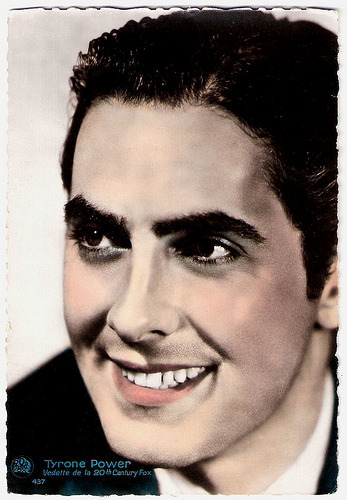
Tyrone Power. French postcard, no. 437. Photo: 20th Century Fox.
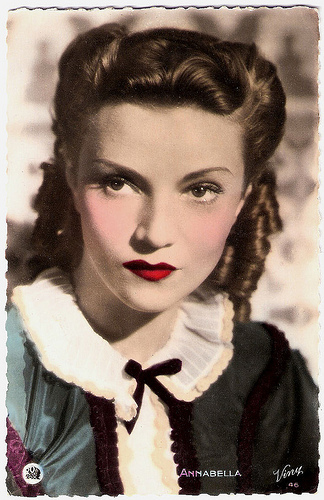
Annabella . French postcard by Viny, no. 46. Photo: 20th Century Fox.
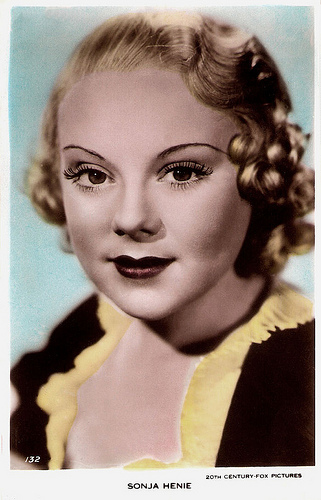
Sonja Henie . British Postcard by Real Photograph, no. 132. Photo: 20th Century-Fox Pictures.
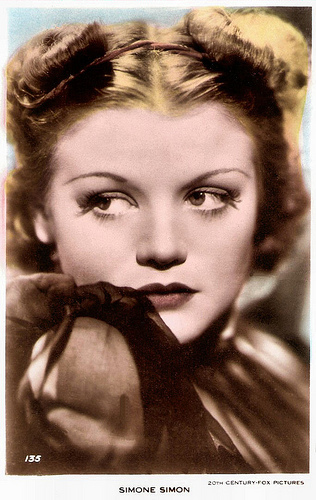
Simone Simon . British Postcard in the Art Photo series, no. 37-2. Photo: 20th Century Fox, no. 135.
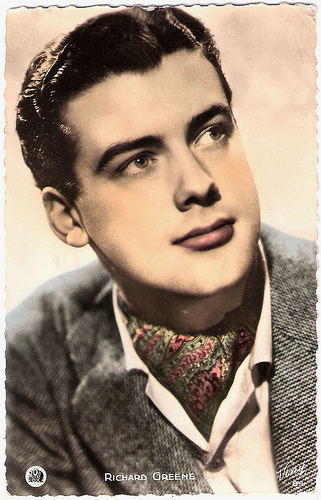
Richard Greene . French postcard by Viny, no. 89. Photo: 20th Century Fox.
Would Daryl F. Zanuck have survived in the #MeToo era?
For many years, 20th Century Fox claimed to have been founded in 1915, the year Fox Film was founded by pioneer William Fox. For instance, it marked 1945 as its 30th anniversary. However, in recent years it has claimed the 1935 merger as its founding, even though most film historians agree it was founded in 1915. 20th Century Fox is known for its searchlight structure logo. Its fanfare was originally composed in 1933 for Twentieth Century Pictures by Alfred Newman, who would become the head of Twentieth Century-Fox's music department from 1940 until the 1960s. It was re-recorded in 1935 when 20th Century-Fox was officially established.
In the early spring of 1935, Twentieth Century Pictures' Joseph Schenck and Darryl F. Zanuck began merger talks with the management of the nearly bankrupt Fox Film, under President Sidney Kent. Spyros Skouras, then manager of the Fox West Coast Theatres, helped make the merger happen, and later became president of the new company. Aside from the theatre chain and a first-rate studio lot, Zanuck and Schenck felt there was not much else to Fox, which had been reeling since the founder William Fox lost control of the company in 1930. The studio's biggest star, Will Rogers, died in a plane crash weeks after the merger. Its leading female star, Janet Gaynor , was fading in popularity and promising leading men James Dunn and Spencer Tracy had been dropped because of heavy drinking.
At first, it was expected that the new company was originally to be called Fox-20th Century, even though 20th Century was the senior partner in the merger. However, 20th Century brought more to the bargaining table besides Schenck and Zanuck; it was more profitable than Fox and had considerably more talent. So, the new Hollywood powerhouse, 20th Century-Fox Film Corporation, began trading on 31 May 1935. The hyphen would be dropped in 1985. Kent remained as President, while Schenck became Chairman and Chief Executive Officer. Zanuck became Vice President in Charge of Production. The company's films retained the 20th Century Pictures searchlight logo on their opening credits as well as its opening fanfare, but with the name changed to 20th Century-Fox.
After the merger was completed, Darryl F. Zanuck brought three stars with him: George Arliss and Loretta Young, from Warners, and Constance Bennett, and he quickly signed young actors who would carry Twentieth Century-Fox for years: Tyrone Power , Linda Darnell, Carmen Miranda, Don Ameche, Henry Fonda, Gene Tierney , and Olympic skater Sonja Henie . Also on the Fox payroll he found two players who he built up into the studio's leading assets, Alice Faye and seven-year-old Shirley Temple. The company established a special training school. Lynn Bari and Patricia Farr were among 14 young women launched for stardom in 1935, when they each received a six-month contract with 20th Century-Fox after spending 18 months in the school. The contracts included a studio option for renewal for as long as seven years. Favouring popular biographies and musicals, Zanuck built Fox back to profitability with light entertainment like Alexander's Ragtime Band (Henry King, 1938) and In Old Chicago (Henry King, 1938), both starring Tyrone Power , Alice Faye and Don Ameche. Twentieth Century–Fox produced mainly Westerns, biopics, religious epics and musicals. The company’s early musicals featured Shirley Temple, but Zanuck was never terribly fond of curly-topped Temple in spite of her enormous popularity.
Leonard Maltin in The Hollywood Reporter : “Zanuck wouldn't have survived in the #MeToo or Time's Up era. He was notorious for taking advantage of starlets. In early 1942, the wiry workaholic, then 40, wangled a commission as a colonel in the U.S. Army Signal Corps and surprised everyone by displaying a hunger to see action. When he returned to Hollywood in mid-1943, he revealed a renewed interest in serious-minded movies, first evidenced in such standout films as Young Mr. Lincoln and The Grapes of Wrath, both directed by John Ford.”
Thanks to record attendance during World War II, Fox overtook RKO and Metro-Goldwyn-Mayer (Hollywood's biggest studio) to become the third most profitable film studio. In 1942, Spyros Skouras succeeded Kent as president of the studio. While Zanuck went off for eighteen months' war service, junior partner William Goetz kept profits high by going for light entertainment. Zanuck always had someone waiting in reserve in case one of his stars became uncooperative. Betty Grable was hired as a threat to musical star Alice Faye and soon surpassed her as Fox's premier attraction and No. 1 pinup. The creamy blonde Grable was 20th Century-Fox’s biggest star of the 1940s.
Together with Skouros, Darryl F. Zanuck intended to make Fox's output more serious-minded. During the next few years, with pictures like The Razor's Edge (Edmund Goulding, 1946) with Tyrone Power as an American pilot traumatised by his experiences in World War I, Gentleman's Agreement (Elia Kazan,1947) with Gregory Peck as a journalist, who poses as a Jew to research an exposé on anti-Semitism, The Snake Pit (Anatole Litvak, 1948) starring Olivia de Havilland as a woman who finds herself in an insane asylum and cannot remember how she got there, and the race drama Pinky (Elia Kazan, 1949), with Jeanne Crain as an African-American girl passing for white. Zanuck established a reputation for provocative, adult films. Despite such successes, however, the studio’s productions were often criticized for lacking the style and excitement of films made by rival studios, notably Warner Brothers and MGM.
Fox specialised in adaptations of best-selling books such as Ben Ames Williams' Leave Her to Heaven (John M. Stahl, 1945), starring Gene Tierney as a femme fatale who entraps a husband (Cornel Wilde) and commits several crimes motivated by her insane jealousy over everything concerning him. Tierney received an Oscar nomination as Best Actress. The film grossed over $5,000,000, Fox's highest-grossing picture of the 1940s. Fox also produced film versions of Broadway musicals, including the Rodgers and Hammerstein films, beginning with the musical version of State Fair (Walter Lang, 1945), starring Jeanne Crain and Dana Andrews. State Fair was the only Rodgers and Hammerstein musical written directly for film. The film introduced such popular songs as It Might as Well Be Spring, which won the Academy Award for Best Original Song.
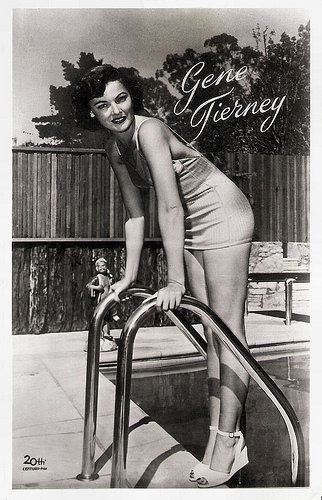
Gene Tierney . Dutch postcard. Photo: 20th Century Fox.
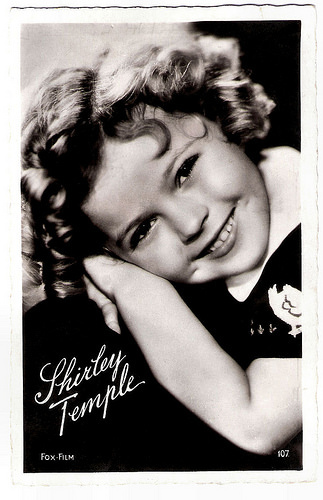
Shirley Temple. French postcard by Editions et Publications Cinématographiques, no. 107. Photo: Fox-Film.
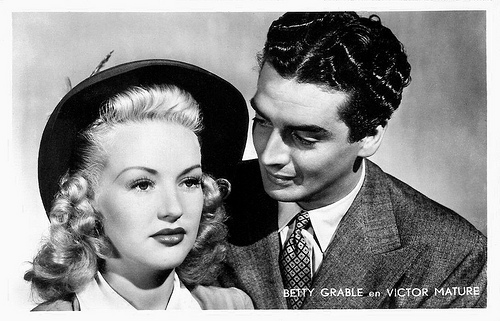
Betty Grable and Victor Mature. Dutch postcard by Uitg. J. Sleding N.V., Amsterdam, no. 33. Photo: 20th Century Fox. Publicity still for I Wake Up Screaming (H. Bruce Humberstone, 1941).
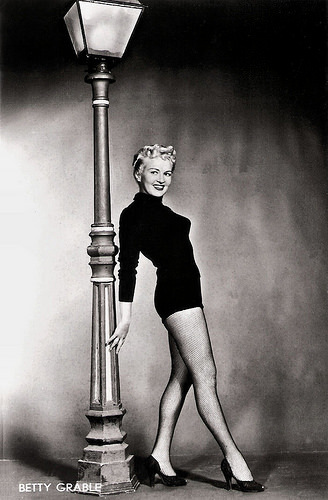
Betty Grable. Dutch postcard, no. 204. Photo: 20th Century Fox.
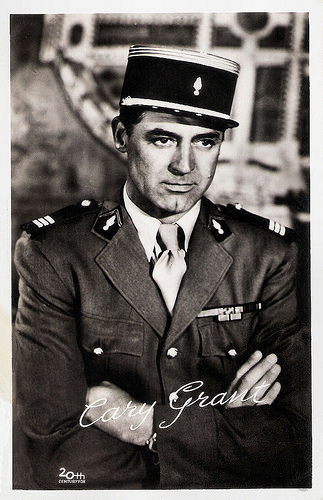
Cary Grant. Dutch postcard, no. 3286. Photo: 20th Century Fox. Publicity still for I Was a Male War Bride (Howard Hawks, 1949).
Spyros Skouras' deal that left the other studios empty-handed
After the war, and with the advent of television, audiences slowly drifted away. Twentieth Century-Fox held on to its theatres until a court-mandated ‘divorce’; they were spun off as Fox National Theatres in 1953.That year, with attendance at half the 1946 level, Twentieth Century-Fox gambled on an unproven gimmick. Noting that the two film sensations of 1952 had been Cinerama, which required three projectors to fill a giant curved screen, and Natural Vision 3D, which got its effects of depth by requiring the use of polarised glasses, Fox mortgaged its studio to buy rights to a French anamorphic projection system which gave a slight illusion of depth without glasses. President Spyros Skouras struck a deal with the inventor Henri Chrétien, leaving the other film studios empty-handed. He introduced CinemaScope, a process by which a film is projected on a screen two and a half times as wide as it is high, in The Robe (Henry Koster, 1953). This ground-breaking Biblical Epic tells the story of a Roman military tribune ( Richard Burton ) who commands the unit that is responsible for the Crucifixion of Jesus.
Zanuck announced in February 1953 that henceforth all Fox pictures would be made in CinemaScope. To convince theatre owners to install this new process, Fox agreed to help pay conversion costs (about $25,000 per screen); and to ensure enough product, Fox gave access to CinemaScope to any rival studio choosing to use it. Seeing the box-office for the first two CinemaScope features, The Robe (1953) and the romantic comedy How to Marry a Millionaire (Jean Negulesco, 1953) starring Betty Grable, Lauren Bacall and the new sensation Marilyn Monroe , Warner Bros., MGM, Universal, Columbia and Disney quickly adopted the process. How to Marry a Millionaire (1953) was a box office success earning $8 million worldwide and $7.5 million domestically, making it Fox's second highest grossing film of that year with The Robe (1953) being the first. How to Marry a Millionaire (1953) was also the fourth highest-grossing film of 1953, whereas Monroe's previous feature Gentlemen Prefer Blondes (Howard Hawks, 1953) with Jane Russell, was the ninth.
In 1956, Fox engaged Robert Lippert to establish a subsidiary company, Regal Pictures, later Associated Producers Incorporated to film B pictures in CinemaScope (but ‘branded’ RegalScope). Fox produced new musicals using the CinemaScope process including Carousel (Henry King, 1956) with Gordon MacRae and Shirley Jones, and The King and I (Walter Lang, 1956) starring Yul Brynner and Deborah Kerr , both film adaptations of Rodgers and Hammerstein stage musicals of the same name. The King and I (1956) was a critical and commercial success, and was nominated for nine Academy Awards, winning five, including Best Actor for Brynner.
CinemaScope brought a brief upturn in attendance, but by 1956 the numbers again began to slide. That year Darryl F. Zanuck announced his resignation as head of production. Zanuck moved to Paris, setting up as an independent producer, seldom being in the United States for many years. President Spyros Skouras brought in a series of production executives, but none had Zanuck's success. The studio wooed Zanuck back for projects more than once, even allowing him to cast his mistresses ( Bella Darvi , Juliette Greco , Irina Demick) in leading roles.
However, by the early 1960s, Fox was in trouble. A new version of Cleopatra had begun in 1959 with Joan Collins in the lead. As a publicity gimmick, producer Walter Wanger offered $1 million to Elizabeth Taylor if she would star. She accepted, and costs for Cleopatra began to escalate, aggravated by Richard Burton 's on-set romance with Taylor, the surrounding media frenzy, and Skouras' selfish preferences and inexperienced micromanagement on the film's production. Not even his showmanship made up for his considerable lack of filmmaking expertise in speeding up production on Cleopatra.
Meanwhile, another remake - of the Cary Grant screwball comedy My Favorite Wife (Garson Kanin, 1940) - was rushed into production in an attempt to turn over a quick profit to help keep Fox afloat. The romantic comedy entitled Something's Got to Give paired Marilyn Monroe , Fox's most bankable star of the 1950s, with Dean Martin, and director George Cukor. The troubled Monroe caused delays on a daily basis, and it quickly descended into a costly debacle. She was fired, but Dean Martin refused to work with anyone else. So Skouras finally decided that re-signing her was unavoidable, and according to Fox files Marilyn was rehired within weeks for a two-picture deal totalling $1 million, $500,000 to finish Something's Got to Give, plus a bonus at completion, and another $500,000 for another project, What a Way to Go. After Monroe’s death on 5 August 1962, just days before filming was due to resume, Something's Got to Give was abandoned. Most of its completed footage remained shelved for nearly 40 years. Twentieth Century-Fox overhauled the entire production idea the following year with a mostly new cast and crew, for the hit Move Over, Darling (Michael Gordon, 1963) starring Doris Day and James Garner.
As Cleopatra's budget passed $10 million, eventually costing around $44 million, Fox sold its back lot (now the site of Century City) to Alcoa in 1961 to raise cash. Elizabeth Taylor 's reign on the Cleopatra set continued unchallenged from 1960 into 1962, though three Fox executives went to Rome in June 1962 to fire her. They learned that director Joseph L. Mankiewicz had filmed out of sequence and had only done interiors, so Fox was then forced to allow Taylor several more weeks of filming. In the meantime that summer of 1962, Fox released nearly all of its contract stars, including Jayne Mansfield . Leonard Maltin in The Hollywood Reporter : “It was believed the wildly expensive epic Cleopatra - which paid Elizabeth Taylor an eye-popping $1 million salary - nearly bankrupted 20th Century Fox, (…). Facts aside, Cleopatra became a scapegoat for all of the studio's ills.”
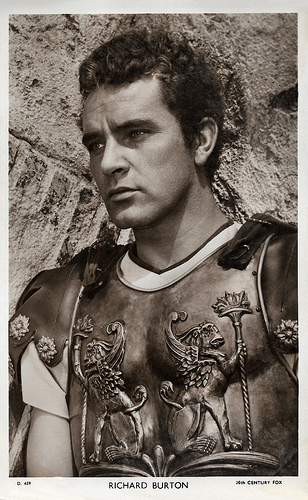
Richard Burton . British postcard in the Picturegoer Series, London, no. D 459. Photo: 20th Century-Fox. Publicity still for The Robe (Henry Koster, 1953).
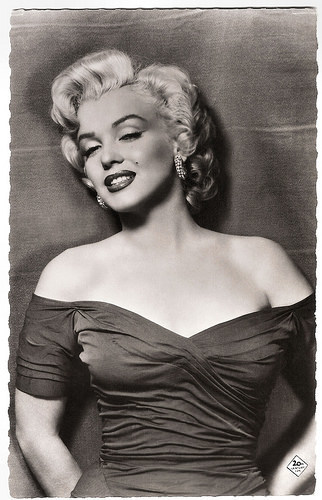
Marilyn Monroe . French postcard by Editions P.I., offered by Les Carbones Korès Carboplane, no. 882. Photo: 20th Century-Fox.
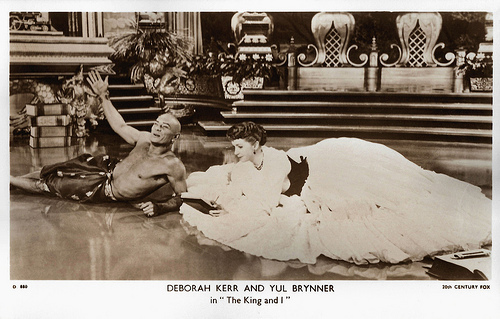
Yul Brynner and Deborah Kerr . British postcard in the Picturegoer Series, London, no. D 880. Photo: 20th Century Fox. Publicity still for The King and I (Walter Lang, 1956).
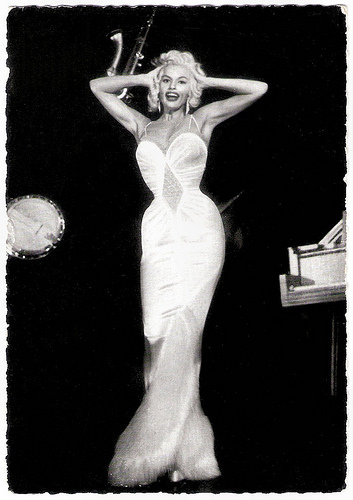
Jayne Mansfield. German postcard by Filmbilder-Vertrieb Ernst Freihoff, Essen. Retail price: 10 Pfg. Photo: Frank Powolny / Centfox. Publicity still for The Girl Can't Help It (Frank Tashlin, 1956).
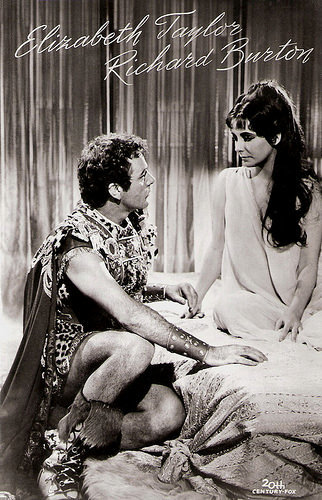
Richard Burton and Elizabeth Taylor . German postcard by Filmbilder-Vertrieb Ernst Freihoff, Essen, no. AX 5536. Photo: publicity still for Cleopatra (Joseph L. Mankiewicz, 1963).
The Zanuck's Oedipal family feud
With few pictures on the schedule, Skouras wanted to rush Zanuck's big-budget war epic The Longest Day (Ken Annakin, Andrew Marton, a.o., 1962) into release as another source of quick cash. The Longest Day is a highly accurate account of the Allied invasion of Normandy in 1944, with a huge international cast. Skouras's plan offended Darryl F. Zanuck, still Fox's largest shareholder, for whom The Longest Day was a labour of love that he had dearly wanted to produce for many years. Rather than being rushed into release as if it were a B-picture, it was finally released in 1963 at a length of three hours. The Longest Day was well received by the critics and was a box office hit. At the next board meeting, Zanuck spoke for eight hours, convincing directors that Skouras was mismanaging the company and that he was the only possible successor. Zanuck was installed as chairman, and then named his son Richard Zanuck as president.
This new management group seized Cleopatra (Joseph L. Mankiewicz, 1963) and rushed it to completion, shut down the studio, laid off the entire staff to save money, axed the long-running Movietone Newsreel and made a series of cheap, popular pictures that restored Fox as a major studio. The saving grace to the studio's fortunes came from the tremendous success of The Sound of Music (Robert Wise, 1965), starring Julie Andrews . It was an expensive and handsomely produced film adaptation of the highly acclaimed Rodgers and Hammerstein Broadway musical, which became a significant success at the box office and won five Academy Awards, including Best Director and Best Picture of the Year.
Fox also had two big Science-Fiction hits in the 1960s: Fantastic Voyage (Richard Fleischer, 1966) with Stephen Boyd and Raquel Welch , and the original Planet of the Apes (Franklin J. Schaffner, 1968), starring Charlton Heston, Kim Hunter , and Roddy McDowall. The latter film tells the story of an astronaut crew who crash-lands on a strange planet in the distant future. Although the planet appears desolate at first, the surviving crew members stumble upon a society in which apes have evolved into creatures with human-like intelligence and speech. The apes have assumed the role of the dominant species and humans are mute creatures wearing animal skins. Fantastic Voyage (1966) is a Jules Verne-style adventure about a submarine crew who shrink to microscopic size and venture into the body of an injured scientist to repair damage to his brain. It was the last film made in CinemaScope, which was ultimately replaced by Panavision lenses.
The younger Zanuck proved to be an astute executive, working in tandem with David Brown on such contemporary-minded hits as Patton (Franklin J. Schaffner, 1970), M*A*S*H (Robert Altman, 1970) and The French Connection (William Friedkin, 1971) with Gene Hackman. But costly attempts to duplicate the success of The Sound of Music (1965) with Doctor Dolittle (Richard Fleischer, 1967) starring Rex Harrison , and Star! (Robert Wise, 1968) with Julie Andrews , led to expensive flops. Then, in 1970, chairman Zanuck Sr. fired his son and sparked an Oedipal family feud that sucked in Zanuck's ex-wife, former actress Virginia Fox - Richard's mother, a major shareholder - and ended with the elder Zanuck being pushed out of the studio he co-founded, in 1971. Richard Zanuck moved on, and successfully produced The Sting (George Roy Hill, 1973) with Paul Newman and Robert Redford, and Jaws (Steven Spielberg, 1975), the original summer blockbuster.
Following Darryl F. Zanuck’s removal, and after an uncertain period, new management brought Fox back to health. Under president Gordon T. Stulberg and production head Alan Ladd, Jr., Fox films connected with modern audiences. Mel Brooks created a series of showcase comedies. Fox also distributed the cult classic The Rocky Horror Picture Show (Jim Sharman, 1975) featuring Tim Curry. Foreshadowing a pattern of film production still yet to come, in late 1973 Twentieth Century-Fox joined forces with Warner Bros. to co-produce the disaster film The Towering Inferno (John Guillermin, 1974), an action blockbuster from producer Irwin Allen with an all-star cast led by Paul Newman and Steve McQueen. Both studios found themselves owning the rights to books about burning skyscrapers. Allen insisted on a meeting with the heads of both studios and announced that as Fox was already in the lead with their property it would be career suicide to have competing movies. And so the first joint venture studio deal was struck. The film was a critical success, earning a nomination for the Academy Award for Best Picture, and was the highest-grossing film released in 1974. The Towering Inferno (1974) was nominated for eight Oscars in all, winning three. In hindsight whilst it may be common place now, back in the 1970s it was a risky, but revolutionary idea that paid off handsomely at both the domestic and international box offices around the world.
In 1977, Fox's success reached new heights. The studio produced the most profitable film made up to that time, the epic space opera Star Wars (George Lucas, 1977), later retitled Star Wars: Episode IV – A New Hope. Substantial financial gains were realised as a result of the film's unprecedented success: from a low of $6 in June 1976, stock prices more than quadrupled to almost $27 after Star Wars' release; 1976 revenues of $195 million rose to $301 million in 1977. Star Wars (1977), starring Mark Hamill, Harrison Ford, Carrie Fisher, Peter Cushing, and Alec Guinness , received ten Academy Award nominations (including Best Picture), winning seven. It would be the first film in the original Star Wars trilogy and was the beginning of the Star Wars franchise.
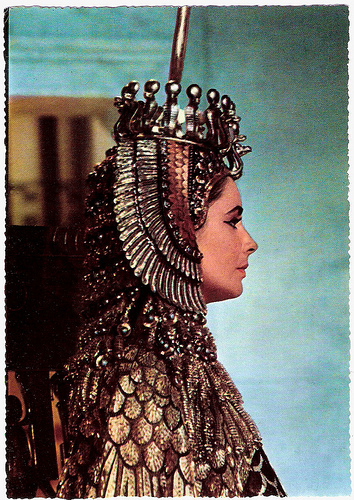
Elizabeth Taylor . Belgian postcard by SB (Uitgeverij Best), Antwerpen (Antwerp). Photo: still for Cleopatra (Joseph L. Mankiewicz, 1963).
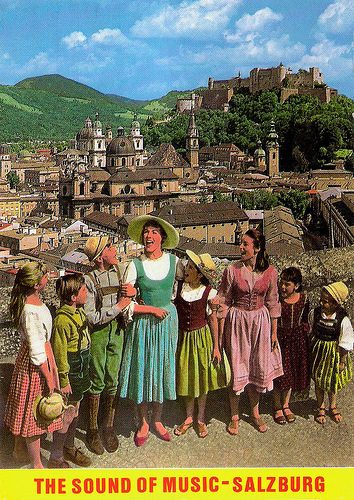
Julie Andrew . Austrian postcard by MM-Verlag, Salzburg, no. FS 3000. Photo: publicity still for The Sound of Music (Robert Wise, 1965).
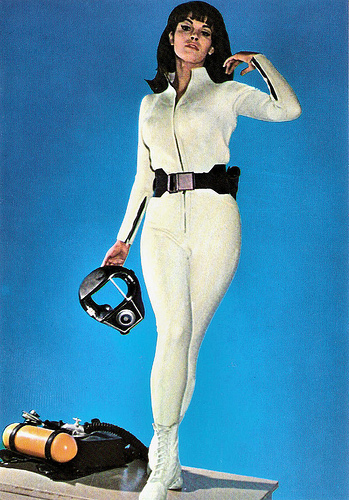
Raquel Welch . British postcard by Klasik Kards, no. 1541. Photo: publicity still for Fantastic Voyage (Richard Fleischer, 1966).
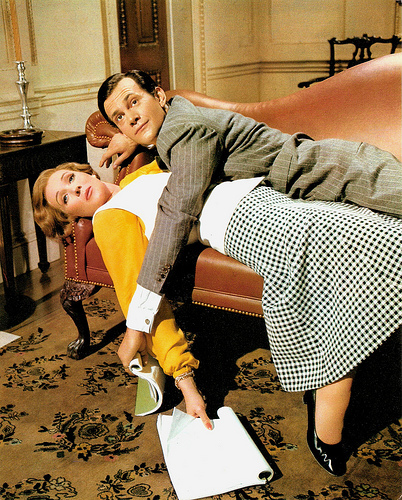
Julie Andrew and Daniel Massey. Italian photo by Rotograph, Roma. Photo: 20th Century Fox. Publicity still for Star! (Robert Wise, 1968).
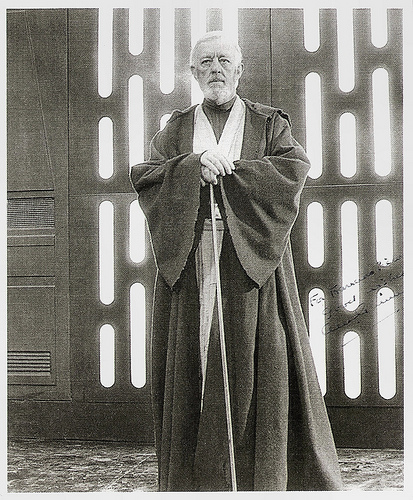
Alec Guinness . British autograph card. Photo; publicity still for <i>Star Wars</i> (George Lucas, 1977).
One of the greatest superhero films of all time
With financial stability came new owners, when Fox was sold for more than $700 million in 1981 to investors Marc Rich and Marvin Davis. By 1984, Rich had become a fugitive from justice, having fled to Switzerland after being charged by U.S. federal prosecutors with tax evasion, racketeering, and illegal trading with Iran during the Iran hostage crisis. Marvin Davis bought out Marc Rich's 50% interest in 20th Century-Fox Film Corporation. Davis sold this interest to Rupert Murdoch for $250 million in March 1985. The studio had continued success with such films as Romancing the Stone (Robert Zemeckis, 1984) with Michael Douglas, Wall Street (Oliver Stone, 1987), Home Alone (Chris Columbus, 1990), and Speed (Jan de Bont, 1994) starring Keanu Reeves . Titanic (James Cameron, 1997) with Leonardo DiCaprio and Kate Winslet , was the first film to surpass $1 billion at the global box office. Fox also produced the hugely popular Cast Away (Robert Zemeckis, 2000) with Tom Hanks; Lincoln (Steven Spielberg, 2012) with Daniel Day Lewis; and the Alien and Die Hard series. Since 2000, 20th Century Fox has been the international distributor for MGM/UA releases.
In 2009, a newly updated CGI 20th Century Fox logo debuted with the Science-Fiction Epic Avatar (James Cameron, 2009). The film is set in the mid-22nd century, when humans are colonising Pandora, a lush habitable moon of a gas giant in the Alpha Centauri star system. Avatar (2009) opened to positive critical reviews, with critics highly praising its ground-breaking visual effects. During its theatrical run, the film broke several box office records and became the highest-grossing film of all time, as well as in the United States and Canada, surpassing Cameron's Titanic (1997), which had held those records for twelve years. It also became the first film to gross more than $2 billion and was the best-selling film of 2010 in the United States. Avatar was nominated for nine Academy Awards, including Best Picture and Best Director, and won three, for Best Art Direction, Best Cinematography and Best Visual Effects.
20th Century Fox owned the rights to several Marvel Comics series, which were turned into such blockbusters as the X-Men film series, and Deadpool (Tim Miller, 2016) with Ryan Reynolds. Very successful was also the Ice Age animation series, the survival drama Life of Pi (Ang Lee, 2011), and the Western The Revenant (Alejandro G. Iñárritu, 2015). The Revenant, describing frontiersman Hugh Glass's (Leonardo DiCaprio) experiences in 1823, received largely positive reviews, and praise for its performances (particularly from DiCaprio and co-star Tom Hardy), direction, and cinematography. It won three Golden Globe Awards, five BAFTA Awards and 12 Oscar nominations. Iñárritu, DiCaprio, and Emmanuel Lubezki won the awards for Best Director, Best Actor, and Best Cinematography, respectively.
Since 2013 the studio has been a subsidiary of 21st Century Fox. Most recent blockbuster (at time of writing this post) is the superhero film Logan (James Mangold, 2017) starring Hugh Jackman as Wolverine. It is the tenth instalment in the X-Men film series, as well as the third and, currently, final Wolverine solo film. Wikipedia : “Critics praised the film for its screenplay, acting (particularly by Jackman, [Patrick] Stewart , and [Dafne] Keen), Mangold's direction, action sequences, thoughtful tone, themes, departure from traditional superhero films, and emotional depth. It became the best reviewed film in the X-Men series thus far, with some regarding it as one of the greatest superhero films of all time, and it was chosen by the National Board of Review as one of the top ten films of 2017. It was nominated for Best Adapted Screenplay at the 90th Academy Awards, becoming the second superhero film to be nominated for Writing after The Incredibles. It grossed over $619 million worldwide.”
In, 2017, The Walt Disney Company announced plans to purchase 21st Century Fox. On 28 July 2018, Disney and Fox shareholders approved the merger between the two companies. Leonard Maltin: “The fact that 20th Century Fox (now minus the hyphen) is still a powerful, productive studio after more than 80 years is pretty miraculous. But there is one piece of often-overlooked continuity throughout all those decades that is even more remarkable. Alfred Newman composed the world-famous studio fanfare for 20th Century Pictures in 1934. That emblematic theme is still heard at the beginning of nearly every Fox movie. Will that tradition continue under Disney's ownership? Will that fanfare survive the merger? If it doesn't, it will truly be the end of an era.” It did survive.
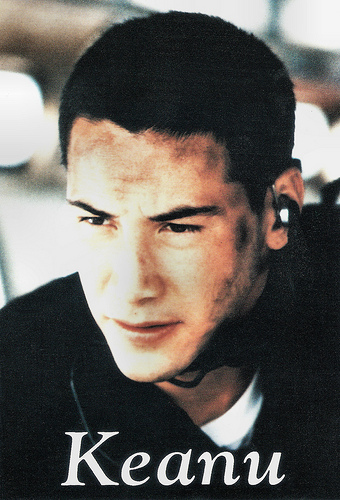
Keanu Reeves . British postcard, no. 2070. Photo: publicity still for Speed (Jan de Bont, 1994).
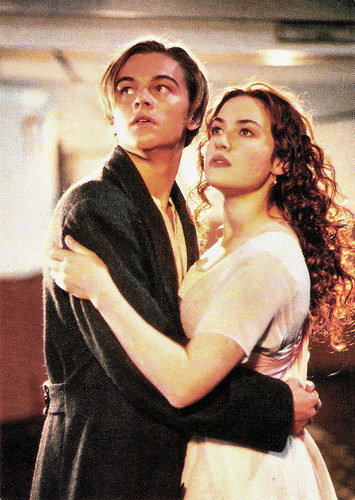
Kate Winslet and Leonardo DiCaprio. German postcard by Sunburst Merchandising GmbH, Osnabrück / Ana Anakos AG, München. Photo: Paramount / Fox, 1998. Publicity still for Titanic (James Cameron, 1997).
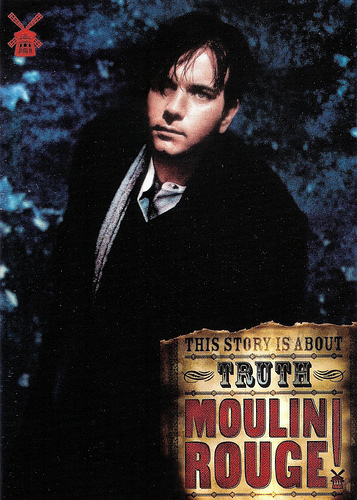
Ewan McGregor . British postcard by Go Card. Photo: 20th Century Fox. Publicity still for Moulin Rouge! (Baz Luhrmann, 2001).
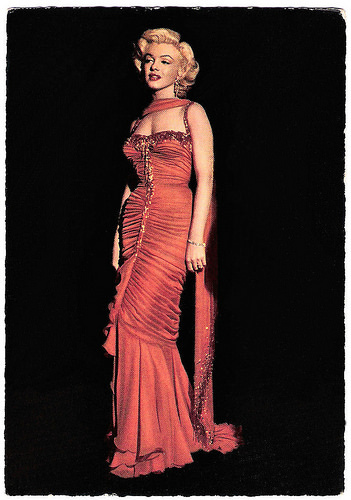
Marilyn Monroe . West-German postcard by Krüger, no. 902/13. Photo: publicity still for Gentlemen Prefer Blondes (Howard Hawks, 1953).

Adam West as Batman / Bruce Wayne and Burt Ward as Robin / Dick Grayson. Dutch postcard by Vita Nova, Schiedam, no. 5. Photo: National Periodical Publications Inc. / 20th Century Fox. Publicity still for Batman (Leslie H. Martenson, 1966).
20th Century Fox Logo History 1914-2015. Source: Sign-offs and Sesame Street Association AVGCP (YouTube).
Sources: Leonard Maltin (The Hollywood Reporter), Encyclopaedia Britannica, and Wikipedia.

Tyrone Power. French postcard, no. 437. Photo: 20th Century Fox.

Annabella . French postcard by Viny, no. 46. Photo: 20th Century Fox.

Sonja Henie . British Postcard by Real Photograph, no. 132. Photo: 20th Century-Fox Pictures.

Simone Simon . British Postcard in the Art Photo series, no. 37-2. Photo: 20th Century Fox, no. 135.

Richard Greene . French postcard by Viny, no. 89. Photo: 20th Century Fox.
Would Daryl F. Zanuck have survived in the #MeToo era?
For many years, 20th Century Fox claimed to have been founded in 1915, the year Fox Film was founded by pioneer William Fox. For instance, it marked 1945 as its 30th anniversary. However, in recent years it has claimed the 1935 merger as its founding, even though most film historians agree it was founded in 1915. 20th Century Fox is known for its searchlight structure logo. Its fanfare was originally composed in 1933 for Twentieth Century Pictures by Alfred Newman, who would become the head of Twentieth Century-Fox's music department from 1940 until the 1960s. It was re-recorded in 1935 when 20th Century-Fox was officially established.
In the early spring of 1935, Twentieth Century Pictures' Joseph Schenck and Darryl F. Zanuck began merger talks with the management of the nearly bankrupt Fox Film, under President Sidney Kent. Spyros Skouras, then manager of the Fox West Coast Theatres, helped make the merger happen, and later became president of the new company. Aside from the theatre chain and a first-rate studio lot, Zanuck and Schenck felt there was not much else to Fox, which had been reeling since the founder William Fox lost control of the company in 1930. The studio's biggest star, Will Rogers, died in a plane crash weeks after the merger. Its leading female star, Janet Gaynor , was fading in popularity and promising leading men James Dunn and Spencer Tracy had been dropped because of heavy drinking.
At first, it was expected that the new company was originally to be called Fox-20th Century, even though 20th Century was the senior partner in the merger. However, 20th Century brought more to the bargaining table besides Schenck and Zanuck; it was more profitable than Fox and had considerably more talent. So, the new Hollywood powerhouse, 20th Century-Fox Film Corporation, began trading on 31 May 1935. The hyphen would be dropped in 1985. Kent remained as President, while Schenck became Chairman and Chief Executive Officer. Zanuck became Vice President in Charge of Production. The company's films retained the 20th Century Pictures searchlight logo on their opening credits as well as its opening fanfare, but with the name changed to 20th Century-Fox.
After the merger was completed, Darryl F. Zanuck brought three stars with him: George Arliss and Loretta Young, from Warners, and Constance Bennett, and he quickly signed young actors who would carry Twentieth Century-Fox for years: Tyrone Power , Linda Darnell, Carmen Miranda, Don Ameche, Henry Fonda, Gene Tierney , and Olympic skater Sonja Henie . Also on the Fox payroll he found two players who he built up into the studio's leading assets, Alice Faye and seven-year-old Shirley Temple. The company established a special training school. Lynn Bari and Patricia Farr were among 14 young women launched for stardom in 1935, when they each received a six-month contract with 20th Century-Fox after spending 18 months in the school. The contracts included a studio option for renewal for as long as seven years. Favouring popular biographies and musicals, Zanuck built Fox back to profitability with light entertainment like Alexander's Ragtime Band (Henry King, 1938) and In Old Chicago (Henry King, 1938), both starring Tyrone Power , Alice Faye and Don Ameche. Twentieth Century–Fox produced mainly Westerns, biopics, religious epics and musicals. The company’s early musicals featured Shirley Temple, but Zanuck was never terribly fond of curly-topped Temple in spite of her enormous popularity.
Leonard Maltin in The Hollywood Reporter : “Zanuck wouldn't have survived in the #MeToo or Time's Up era. He was notorious for taking advantage of starlets. In early 1942, the wiry workaholic, then 40, wangled a commission as a colonel in the U.S. Army Signal Corps and surprised everyone by displaying a hunger to see action. When he returned to Hollywood in mid-1943, he revealed a renewed interest in serious-minded movies, first evidenced in such standout films as Young Mr. Lincoln and The Grapes of Wrath, both directed by John Ford.”
Thanks to record attendance during World War II, Fox overtook RKO and Metro-Goldwyn-Mayer (Hollywood's biggest studio) to become the third most profitable film studio. In 1942, Spyros Skouras succeeded Kent as president of the studio. While Zanuck went off for eighteen months' war service, junior partner William Goetz kept profits high by going for light entertainment. Zanuck always had someone waiting in reserve in case one of his stars became uncooperative. Betty Grable was hired as a threat to musical star Alice Faye and soon surpassed her as Fox's premier attraction and No. 1 pinup. The creamy blonde Grable was 20th Century-Fox’s biggest star of the 1940s.
Together with Skouros, Darryl F. Zanuck intended to make Fox's output more serious-minded. During the next few years, with pictures like The Razor's Edge (Edmund Goulding, 1946) with Tyrone Power as an American pilot traumatised by his experiences in World War I, Gentleman's Agreement (Elia Kazan,1947) with Gregory Peck as a journalist, who poses as a Jew to research an exposé on anti-Semitism, The Snake Pit (Anatole Litvak, 1948) starring Olivia de Havilland as a woman who finds herself in an insane asylum and cannot remember how she got there, and the race drama Pinky (Elia Kazan, 1949), with Jeanne Crain as an African-American girl passing for white. Zanuck established a reputation for provocative, adult films. Despite such successes, however, the studio’s productions were often criticized for lacking the style and excitement of films made by rival studios, notably Warner Brothers and MGM.
Fox specialised in adaptations of best-selling books such as Ben Ames Williams' Leave Her to Heaven (John M. Stahl, 1945), starring Gene Tierney as a femme fatale who entraps a husband (Cornel Wilde) and commits several crimes motivated by her insane jealousy over everything concerning him. Tierney received an Oscar nomination as Best Actress. The film grossed over $5,000,000, Fox's highest-grossing picture of the 1940s. Fox also produced film versions of Broadway musicals, including the Rodgers and Hammerstein films, beginning with the musical version of State Fair (Walter Lang, 1945), starring Jeanne Crain and Dana Andrews. State Fair was the only Rodgers and Hammerstein musical written directly for film. The film introduced such popular songs as It Might as Well Be Spring, which won the Academy Award for Best Original Song.

Gene Tierney . Dutch postcard. Photo: 20th Century Fox.

Shirley Temple. French postcard by Editions et Publications Cinématographiques, no. 107. Photo: Fox-Film.

Betty Grable and Victor Mature. Dutch postcard by Uitg. J. Sleding N.V., Amsterdam, no. 33. Photo: 20th Century Fox. Publicity still for I Wake Up Screaming (H. Bruce Humberstone, 1941).

Betty Grable. Dutch postcard, no. 204. Photo: 20th Century Fox.

Cary Grant. Dutch postcard, no. 3286. Photo: 20th Century Fox. Publicity still for I Was a Male War Bride (Howard Hawks, 1949).
Spyros Skouras' deal that left the other studios empty-handed
After the war, and with the advent of television, audiences slowly drifted away. Twentieth Century-Fox held on to its theatres until a court-mandated ‘divorce’; they were spun off as Fox National Theatres in 1953.That year, with attendance at half the 1946 level, Twentieth Century-Fox gambled on an unproven gimmick. Noting that the two film sensations of 1952 had been Cinerama, which required three projectors to fill a giant curved screen, and Natural Vision 3D, which got its effects of depth by requiring the use of polarised glasses, Fox mortgaged its studio to buy rights to a French anamorphic projection system which gave a slight illusion of depth without glasses. President Spyros Skouras struck a deal with the inventor Henri Chrétien, leaving the other film studios empty-handed. He introduced CinemaScope, a process by which a film is projected on a screen two and a half times as wide as it is high, in The Robe (Henry Koster, 1953). This ground-breaking Biblical Epic tells the story of a Roman military tribune ( Richard Burton ) who commands the unit that is responsible for the Crucifixion of Jesus.
Zanuck announced in February 1953 that henceforth all Fox pictures would be made in CinemaScope. To convince theatre owners to install this new process, Fox agreed to help pay conversion costs (about $25,000 per screen); and to ensure enough product, Fox gave access to CinemaScope to any rival studio choosing to use it. Seeing the box-office for the first two CinemaScope features, The Robe (1953) and the romantic comedy How to Marry a Millionaire (Jean Negulesco, 1953) starring Betty Grable, Lauren Bacall and the new sensation Marilyn Monroe , Warner Bros., MGM, Universal, Columbia and Disney quickly adopted the process. How to Marry a Millionaire (1953) was a box office success earning $8 million worldwide and $7.5 million domestically, making it Fox's second highest grossing film of that year with The Robe (1953) being the first. How to Marry a Millionaire (1953) was also the fourth highest-grossing film of 1953, whereas Monroe's previous feature Gentlemen Prefer Blondes (Howard Hawks, 1953) with Jane Russell, was the ninth.
In 1956, Fox engaged Robert Lippert to establish a subsidiary company, Regal Pictures, later Associated Producers Incorporated to film B pictures in CinemaScope (but ‘branded’ RegalScope). Fox produced new musicals using the CinemaScope process including Carousel (Henry King, 1956) with Gordon MacRae and Shirley Jones, and The King and I (Walter Lang, 1956) starring Yul Brynner and Deborah Kerr , both film adaptations of Rodgers and Hammerstein stage musicals of the same name. The King and I (1956) was a critical and commercial success, and was nominated for nine Academy Awards, winning five, including Best Actor for Brynner.
CinemaScope brought a brief upturn in attendance, but by 1956 the numbers again began to slide. That year Darryl F. Zanuck announced his resignation as head of production. Zanuck moved to Paris, setting up as an independent producer, seldom being in the United States for many years. President Spyros Skouras brought in a series of production executives, but none had Zanuck's success. The studio wooed Zanuck back for projects more than once, even allowing him to cast his mistresses ( Bella Darvi , Juliette Greco , Irina Demick) in leading roles.
However, by the early 1960s, Fox was in trouble. A new version of Cleopatra had begun in 1959 with Joan Collins in the lead. As a publicity gimmick, producer Walter Wanger offered $1 million to Elizabeth Taylor if she would star. She accepted, and costs for Cleopatra began to escalate, aggravated by Richard Burton 's on-set romance with Taylor, the surrounding media frenzy, and Skouras' selfish preferences and inexperienced micromanagement on the film's production. Not even his showmanship made up for his considerable lack of filmmaking expertise in speeding up production on Cleopatra.
Meanwhile, another remake - of the Cary Grant screwball comedy My Favorite Wife (Garson Kanin, 1940) - was rushed into production in an attempt to turn over a quick profit to help keep Fox afloat. The romantic comedy entitled Something's Got to Give paired Marilyn Monroe , Fox's most bankable star of the 1950s, with Dean Martin, and director George Cukor. The troubled Monroe caused delays on a daily basis, and it quickly descended into a costly debacle. She was fired, but Dean Martin refused to work with anyone else. So Skouras finally decided that re-signing her was unavoidable, and according to Fox files Marilyn was rehired within weeks for a two-picture deal totalling $1 million, $500,000 to finish Something's Got to Give, plus a bonus at completion, and another $500,000 for another project, What a Way to Go. After Monroe’s death on 5 August 1962, just days before filming was due to resume, Something's Got to Give was abandoned. Most of its completed footage remained shelved for nearly 40 years. Twentieth Century-Fox overhauled the entire production idea the following year with a mostly new cast and crew, for the hit Move Over, Darling (Michael Gordon, 1963) starring Doris Day and James Garner.
As Cleopatra's budget passed $10 million, eventually costing around $44 million, Fox sold its back lot (now the site of Century City) to Alcoa in 1961 to raise cash. Elizabeth Taylor 's reign on the Cleopatra set continued unchallenged from 1960 into 1962, though three Fox executives went to Rome in June 1962 to fire her. They learned that director Joseph L. Mankiewicz had filmed out of sequence and had only done interiors, so Fox was then forced to allow Taylor several more weeks of filming. In the meantime that summer of 1962, Fox released nearly all of its contract stars, including Jayne Mansfield . Leonard Maltin in The Hollywood Reporter : “It was believed the wildly expensive epic Cleopatra - which paid Elizabeth Taylor an eye-popping $1 million salary - nearly bankrupted 20th Century Fox, (…). Facts aside, Cleopatra became a scapegoat for all of the studio's ills.”

Richard Burton . British postcard in the Picturegoer Series, London, no. D 459. Photo: 20th Century-Fox. Publicity still for The Robe (Henry Koster, 1953).

Marilyn Monroe . French postcard by Editions P.I., offered by Les Carbones Korès Carboplane, no. 882. Photo: 20th Century-Fox.

Yul Brynner and Deborah Kerr . British postcard in the Picturegoer Series, London, no. D 880. Photo: 20th Century Fox. Publicity still for The King and I (Walter Lang, 1956).

Jayne Mansfield. German postcard by Filmbilder-Vertrieb Ernst Freihoff, Essen. Retail price: 10 Pfg. Photo: Frank Powolny / Centfox. Publicity still for The Girl Can't Help It (Frank Tashlin, 1956).

Richard Burton and Elizabeth Taylor . German postcard by Filmbilder-Vertrieb Ernst Freihoff, Essen, no. AX 5536. Photo: publicity still for Cleopatra (Joseph L. Mankiewicz, 1963).
The Zanuck's Oedipal family feud
With few pictures on the schedule, Skouras wanted to rush Zanuck's big-budget war epic The Longest Day (Ken Annakin, Andrew Marton, a.o., 1962) into release as another source of quick cash. The Longest Day is a highly accurate account of the Allied invasion of Normandy in 1944, with a huge international cast. Skouras's plan offended Darryl F. Zanuck, still Fox's largest shareholder, for whom The Longest Day was a labour of love that he had dearly wanted to produce for many years. Rather than being rushed into release as if it were a B-picture, it was finally released in 1963 at a length of three hours. The Longest Day was well received by the critics and was a box office hit. At the next board meeting, Zanuck spoke for eight hours, convincing directors that Skouras was mismanaging the company and that he was the only possible successor. Zanuck was installed as chairman, and then named his son Richard Zanuck as president.
This new management group seized Cleopatra (Joseph L. Mankiewicz, 1963) and rushed it to completion, shut down the studio, laid off the entire staff to save money, axed the long-running Movietone Newsreel and made a series of cheap, popular pictures that restored Fox as a major studio. The saving grace to the studio's fortunes came from the tremendous success of The Sound of Music (Robert Wise, 1965), starring Julie Andrews . It was an expensive and handsomely produced film adaptation of the highly acclaimed Rodgers and Hammerstein Broadway musical, which became a significant success at the box office and won five Academy Awards, including Best Director and Best Picture of the Year.
Fox also had two big Science-Fiction hits in the 1960s: Fantastic Voyage (Richard Fleischer, 1966) with Stephen Boyd and Raquel Welch , and the original Planet of the Apes (Franklin J. Schaffner, 1968), starring Charlton Heston, Kim Hunter , and Roddy McDowall. The latter film tells the story of an astronaut crew who crash-lands on a strange planet in the distant future. Although the planet appears desolate at first, the surviving crew members stumble upon a society in which apes have evolved into creatures with human-like intelligence and speech. The apes have assumed the role of the dominant species and humans are mute creatures wearing animal skins. Fantastic Voyage (1966) is a Jules Verne-style adventure about a submarine crew who shrink to microscopic size and venture into the body of an injured scientist to repair damage to his brain. It was the last film made in CinemaScope, which was ultimately replaced by Panavision lenses.
The younger Zanuck proved to be an astute executive, working in tandem with David Brown on such contemporary-minded hits as Patton (Franklin J. Schaffner, 1970), M*A*S*H (Robert Altman, 1970) and The French Connection (William Friedkin, 1971) with Gene Hackman. But costly attempts to duplicate the success of The Sound of Music (1965) with Doctor Dolittle (Richard Fleischer, 1967) starring Rex Harrison , and Star! (Robert Wise, 1968) with Julie Andrews , led to expensive flops. Then, in 1970, chairman Zanuck Sr. fired his son and sparked an Oedipal family feud that sucked in Zanuck's ex-wife, former actress Virginia Fox - Richard's mother, a major shareholder - and ended with the elder Zanuck being pushed out of the studio he co-founded, in 1971. Richard Zanuck moved on, and successfully produced The Sting (George Roy Hill, 1973) with Paul Newman and Robert Redford, and Jaws (Steven Spielberg, 1975), the original summer blockbuster.
Following Darryl F. Zanuck’s removal, and after an uncertain period, new management brought Fox back to health. Under president Gordon T. Stulberg and production head Alan Ladd, Jr., Fox films connected with modern audiences. Mel Brooks created a series of showcase comedies. Fox also distributed the cult classic The Rocky Horror Picture Show (Jim Sharman, 1975) featuring Tim Curry. Foreshadowing a pattern of film production still yet to come, in late 1973 Twentieth Century-Fox joined forces with Warner Bros. to co-produce the disaster film The Towering Inferno (John Guillermin, 1974), an action blockbuster from producer Irwin Allen with an all-star cast led by Paul Newman and Steve McQueen. Both studios found themselves owning the rights to books about burning skyscrapers. Allen insisted on a meeting with the heads of both studios and announced that as Fox was already in the lead with their property it would be career suicide to have competing movies. And so the first joint venture studio deal was struck. The film was a critical success, earning a nomination for the Academy Award for Best Picture, and was the highest-grossing film released in 1974. The Towering Inferno (1974) was nominated for eight Oscars in all, winning three. In hindsight whilst it may be common place now, back in the 1970s it was a risky, but revolutionary idea that paid off handsomely at both the domestic and international box offices around the world.
In 1977, Fox's success reached new heights. The studio produced the most profitable film made up to that time, the epic space opera Star Wars (George Lucas, 1977), later retitled Star Wars: Episode IV – A New Hope. Substantial financial gains were realised as a result of the film's unprecedented success: from a low of $6 in June 1976, stock prices more than quadrupled to almost $27 after Star Wars' release; 1976 revenues of $195 million rose to $301 million in 1977. Star Wars (1977), starring Mark Hamill, Harrison Ford, Carrie Fisher, Peter Cushing, and Alec Guinness , received ten Academy Award nominations (including Best Picture), winning seven. It would be the first film in the original Star Wars trilogy and was the beginning of the Star Wars franchise.

Elizabeth Taylor . Belgian postcard by SB (Uitgeverij Best), Antwerpen (Antwerp). Photo: still for Cleopatra (Joseph L. Mankiewicz, 1963).

Julie Andrew . Austrian postcard by MM-Verlag, Salzburg, no. FS 3000. Photo: publicity still for The Sound of Music (Robert Wise, 1965).

Raquel Welch . British postcard by Klasik Kards, no. 1541. Photo: publicity still for Fantastic Voyage (Richard Fleischer, 1966).

Julie Andrew and Daniel Massey. Italian photo by Rotograph, Roma. Photo: 20th Century Fox. Publicity still for Star! (Robert Wise, 1968).

Alec Guinness . British autograph card. Photo; publicity still for <i>Star Wars</i> (George Lucas, 1977).
One of the greatest superhero films of all time
With financial stability came new owners, when Fox was sold for more than $700 million in 1981 to investors Marc Rich and Marvin Davis. By 1984, Rich had become a fugitive from justice, having fled to Switzerland after being charged by U.S. federal prosecutors with tax evasion, racketeering, and illegal trading with Iran during the Iran hostage crisis. Marvin Davis bought out Marc Rich's 50% interest in 20th Century-Fox Film Corporation. Davis sold this interest to Rupert Murdoch for $250 million in March 1985. The studio had continued success with such films as Romancing the Stone (Robert Zemeckis, 1984) with Michael Douglas, Wall Street (Oliver Stone, 1987), Home Alone (Chris Columbus, 1990), and Speed (Jan de Bont, 1994) starring Keanu Reeves . Titanic (James Cameron, 1997) with Leonardo DiCaprio and Kate Winslet , was the first film to surpass $1 billion at the global box office. Fox also produced the hugely popular Cast Away (Robert Zemeckis, 2000) with Tom Hanks; Lincoln (Steven Spielberg, 2012) with Daniel Day Lewis; and the Alien and Die Hard series. Since 2000, 20th Century Fox has been the international distributor for MGM/UA releases.
In 2009, a newly updated CGI 20th Century Fox logo debuted with the Science-Fiction Epic Avatar (James Cameron, 2009). The film is set in the mid-22nd century, when humans are colonising Pandora, a lush habitable moon of a gas giant in the Alpha Centauri star system. Avatar (2009) opened to positive critical reviews, with critics highly praising its ground-breaking visual effects. During its theatrical run, the film broke several box office records and became the highest-grossing film of all time, as well as in the United States and Canada, surpassing Cameron's Titanic (1997), which had held those records for twelve years. It also became the first film to gross more than $2 billion and was the best-selling film of 2010 in the United States. Avatar was nominated for nine Academy Awards, including Best Picture and Best Director, and won three, for Best Art Direction, Best Cinematography and Best Visual Effects.
20th Century Fox owned the rights to several Marvel Comics series, which were turned into such blockbusters as the X-Men film series, and Deadpool (Tim Miller, 2016) with Ryan Reynolds. Very successful was also the Ice Age animation series, the survival drama Life of Pi (Ang Lee, 2011), and the Western The Revenant (Alejandro G. Iñárritu, 2015). The Revenant, describing frontiersman Hugh Glass's (Leonardo DiCaprio) experiences in 1823, received largely positive reviews, and praise for its performances (particularly from DiCaprio and co-star Tom Hardy), direction, and cinematography. It won three Golden Globe Awards, five BAFTA Awards and 12 Oscar nominations. Iñárritu, DiCaprio, and Emmanuel Lubezki won the awards for Best Director, Best Actor, and Best Cinematography, respectively.
Since 2013 the studio has been a subsidiary of 21st Century Fox. Most recent blockbuster (at time of writing this post) is the superhero film Logan (James Mangold, 2017) starring Hugh Jackman as Wolverine. It is the tenth instalment in the X-Men film series, as well as the third and, currently, final Wolverine solo film. Wikipedia : “Critics praised the film for its screenplay, acting (particularly by Jackman, [Patrick] Stewart , and [Dafne] Keen), Mangold's direction, action sequences, thoughtful tone, themes, departure from traditional superhero films, and emotional depth. It became the best reviewed film in the X-Men series thus far, with some regarding it as one of the greatest superhero films of all time, and it was chosen by the National Board of Review as one of the top ten films of 2017. It was nominated for Best Adapted Screenplay at the 90th Academy Awards, becoming the second superhero film to be nominated for Writing after The Incredibles. It grossed over $619 million worldwide.”
In, 2017, The Walt Disney Company announced plans to purchase 21st Century Fox. On 28 July 2018, Disney and Fox shareholders approved the merger between the two companies. Leonard Maltin: “The fact that 20th Century Fox (now minus the hyphen) is still a powerful, productive studio after more than 80 years is pretty miraculous. But there is one piece of often-overlooked continuity throughout all those decades that is even more remarkable. Alfred Newman composed the world-famous studio fanfare for 20th Century Pictures in 1934. That emblematic theme is still heard at the beginning of nearly every Fox movie. Will that tradition continue under Disney's ownership? Will that fanfare survive the merger? If it doesn't, it will truly be the end of an era.” It did survive.

Keanu Reeves . British postcard, no. 2070. Photo: publicity still for Speed (Jan de Bont, 1994).

Kate Winslet and Leonardo DiCaprio. German postcard by Sunburst Merchandising GmbH, Osnabrück / Ana Anakos AG, München. Photo: Paramount / Fox, 1998. Publicity still for Titanic (James Cameron, 1997).

Ewan McGregor . British postcard by Go Card. Photo: 20th Century Fox. Publicity still for Moulin Rouge! (Baz Luhrmann, 2001).

Marilyn Monroe . West-German postcard by Krüger, no. 902/13. Photo: publicity still for Gentlemen Prefer Blondes (Howard Hawks, 1953).

Adam West as Batman / Bruce Wayne and Burt Ward as Robin / Dick Grayson. Dutch postcard by Vita Nova, Schiedam, no. 5. Photo: National Periodical Publications Inc. / 20th Century Fox. Publicity still for Batman (Leslie H. Martenson, 1966).
20th Century Fox Logo History 1914-2015. Source: Sign-offs and Sesame Street Association AVGCP (YouTube).
Sources: Leonard Maltin (The Hollywood Reporter), Encyclopaedia Britannica, and Wikipedia.
Published on December 28, 2018 22:00
December 27, 2018
The Choice of Daniël van der Aa
Today the last guest post of 2018. We invited the young collector Daniël van der Aa from Rotterdam to share his choice of favourite postcards with us. And he choose to show the complete card: both the front and the back side. Daniël has a passion for the cinema and he also collects posters and other film memorabilia. Furthermore, he is writing his own film screenplay at the moment. And as he writes below, Daniel loves Claudia Cardinale as much as we do, maybe even more, and he loves cats.
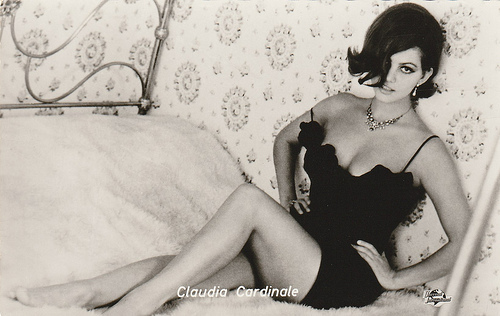
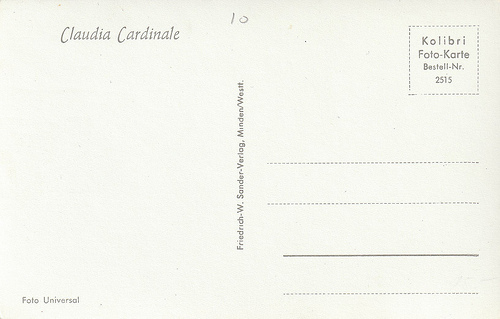
Claudia Cardinale . German postcard in the Kolibri Foto-Karte series by Friedrich W. Sander-Verlag, Minden-Westf., no. 2515. Photo: Universal International. Publicity still for The Hell with Heroes (Joseph Sargent, 1968). Daniel: "CC is my favourite actress of all time. What a beauty!!!"
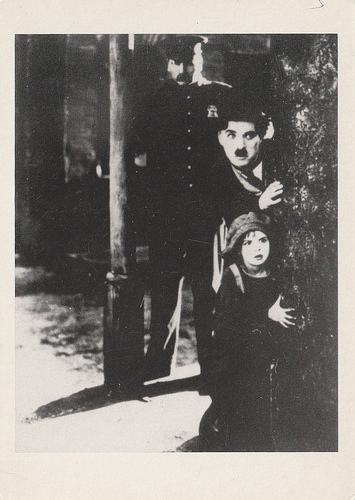
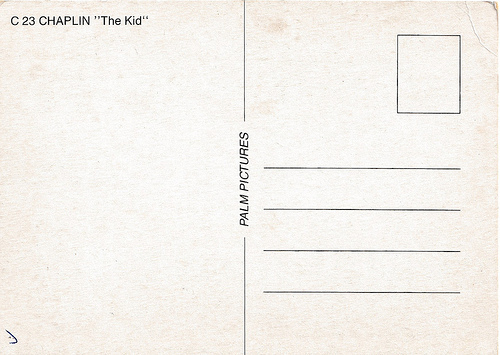
Postcard by Palm Pictures, no. C 23. Photo: publicity still for The Kid (Charles Chaplin, 1921) with Charlie Chaplin and Jackie Coogan. Tom Wilson is probably the cop in the background. Daniël: "I love the old comedians like Chaplin, Lloyd, Keaton, Stan Laurel , Oliver Hardy , Fields, Our Gang, Marx Brothers to name a few."
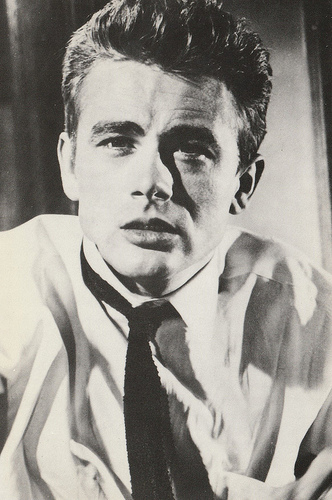
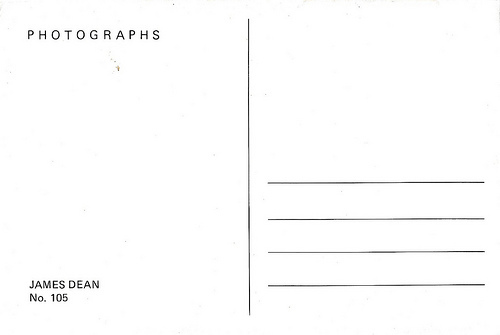
James Dean . Postcard in the Photographs series, no. 105. Photo: publicity still for East of Eden (Elia Kazan, 1955). Daniël: "One of my favourite actors, who died way too young. The one and only rebel."
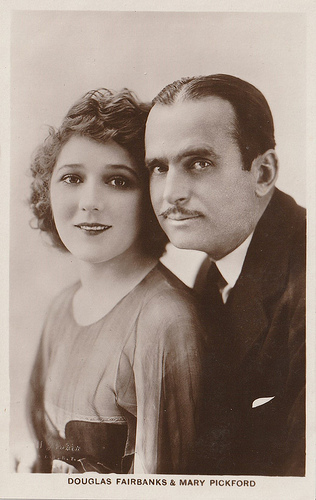
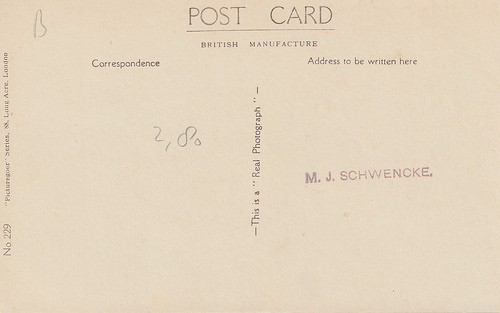
British postcard in the Picturegoer Series, London, no. 229. Photo: Frazier, N.Y. Daniël: "Am a huge fan of the silent pictures era. Douglas Fairbanks & Mary Pickford are two of my favourite stars from the silent era."
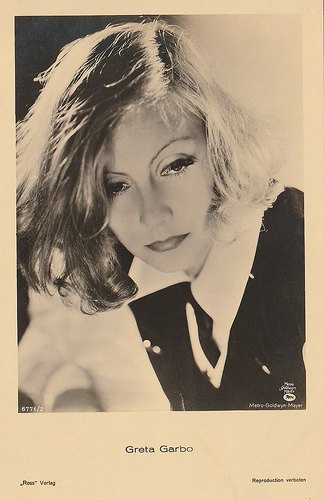
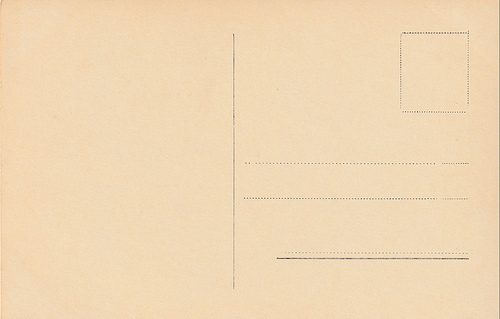
Greta Garbo . German postcard by Ross Verlag, no. 6771/2, 1931-1932. Photo: Metro-Goldwyn-Mayer. Publicity still for Queen Christina (Rouben Mamoulian, 1933). Daniël: "Garbo is my second favourite actress of all time."
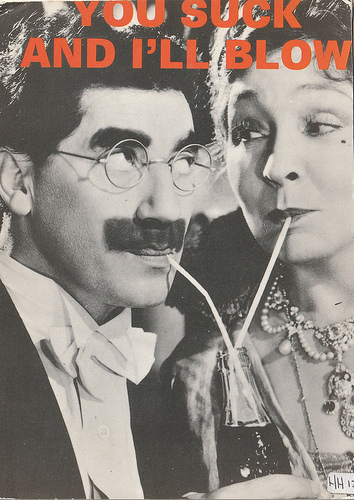
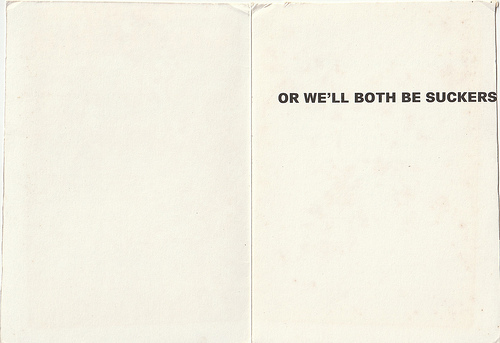
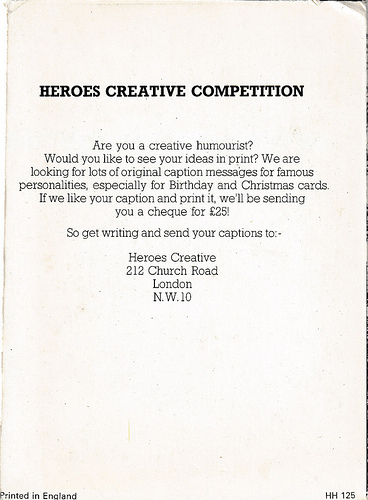
British 'double' postcard by Heroes Creative, London, no. HH 125. Photo: publicity still of Groucho Marx and Margaret Dumont in A Night at the Opera (Sam Wood, 1935). Caption: You Suck and I'll blow or we'll both be suckers. Daniël: "Love the humor of the Marx Brothers and especially Groucho's. 'One morning I shot an elephant in my pajamas. How he got into my pajamas I'll never know'."
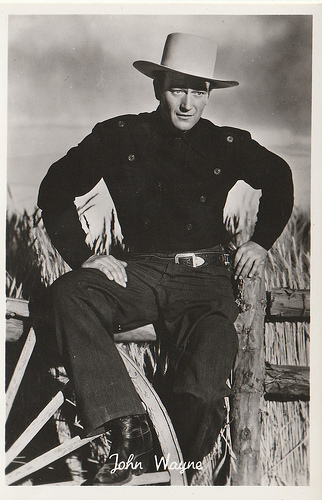
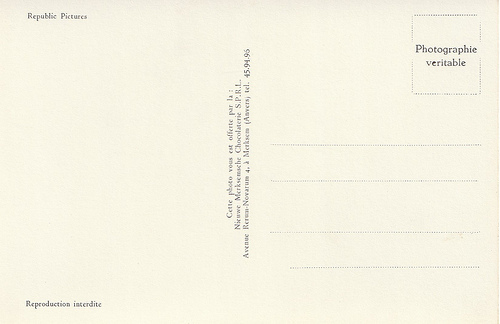
John Wayne. Belgian postcard by Nieuwe Merksemsche Chocolaterie S.P.R.L., Merksem. Photo: Republic Pictures. Caption: "Cette photo vous est offerte par la: Nieuwe Merksemsche Chocolaterie S.P.R.L. Avenue Rerum-Novarum 4, a Merksem (Anvers)." Daniël: "John Wayne is simply the best Western actor ever."
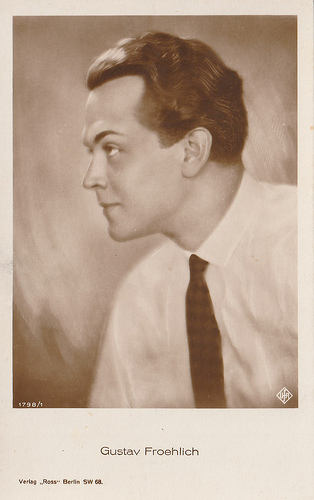
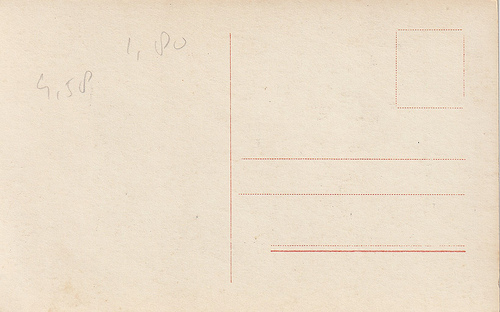
German postcard, no. 1798/1, 1927-1928. Photo: Ufa. Daniël: "A photo of Gustav Fröhlich from the times he played the lead in Metropolis (Fritz Lang, 1927). I love the silent German movies like Metropolis, Die Nibelungen, Nosferatu, Der Golem."
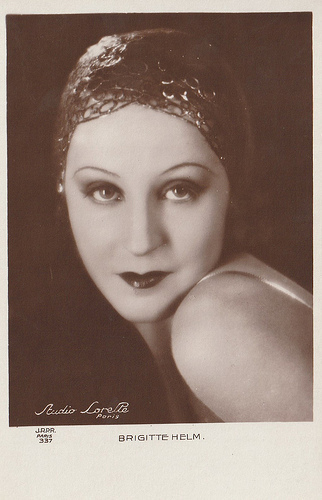
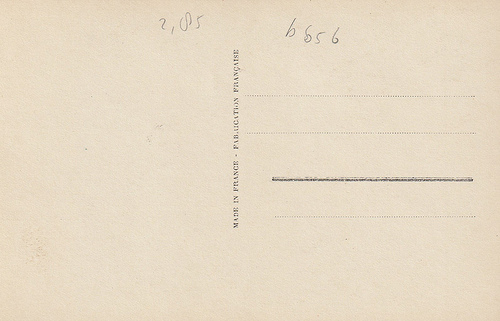
French postcard by J.R.P.R., no. 337. Photo: Studio Lorelle, Paris. Publicity still for L'Argent/The Money (Marcel L'Herbier, 1928). Daniël: " Brigitte Helm is my favorite German actress."
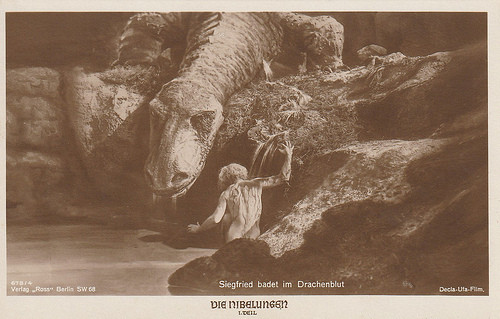
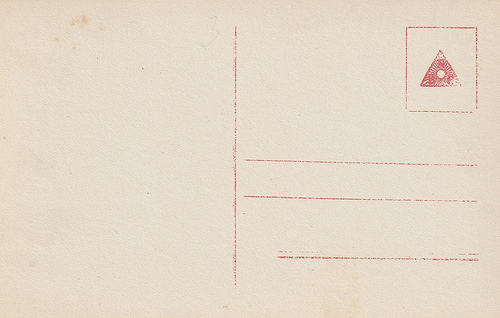
German postcard by Ross Verlag, no. 678/4. Photo: Decla / Ufa-Film. Publicity still for Die Nibelungen, I. Teil/Die Nibelungen: Siegfried (Fritz Lang, 1924). Caption: Siegfried bathes in the dragon's blood. Daniël: " Paul Richter as Siegfried."
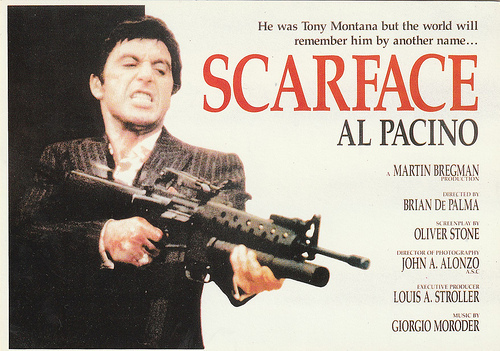

Al Pacino in Scarface (1983). Postcard, no. C120. Photo: poster for Scarface (Brian De Palma, 1983). Daniël: "Scarface is one of my favorite movies and characters off all time."

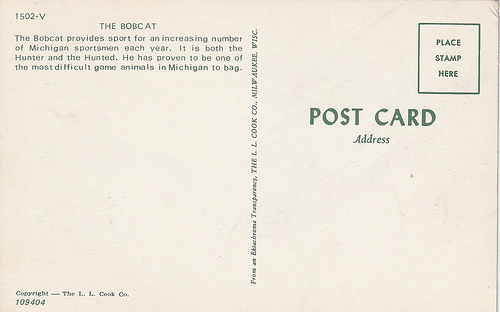
The Bobcat. American postcard by The L.L. Cook Co., Milwaukee, Wisc., no. 1502-V. Daniël: "1960s. Love cats and especially the older cards, because of the colors."
Many thanks Daniël!


Claudia Cardinale . German postcard in the Kolibri Foto-Karte series by Friedrich W. Sander-Verlag, Minden-Westf., no. 2515. Photo: Universal International. Publicity still for The Hell with Heroes (Joseph Sargent, 1968). Daniel: "CC is my favourite actress of all time. What a beauty!!!"


Postcard by Palm Pictures, no. C 23. Photo: publicity still for The Kid (Charles Chaplin, 1921) with Charlie Chaplin and Jackie Coogan. Tom Wilson is probably the cop in the background. Daniël: "I love the old comedians like Chaplin, Lloyd, Keaton, Stan Laurel , Oliver Hardy , Fields, Our Gang, Marx Brothers to name a few."


James Dean . Postcard in the Photographs series, no. 105. Photo: publicity still for East of Eden (Elia Kazan, 1955). Daniël: "One of my favourite actors, who died way too young. The one and only rebel."


British postcard in the Picturegoer Series, London, no. 229. Photo: Frazier, N.Y. Daniël: "Am a huge fan of the silent pictures era. Douglas Fairbanks & Mary Pickford are two of my favourite stars from the silent era."


Greta Garbo . German postcard by Ross Verlag, no. 6771/2, 1931-1932. Photo: Metro-Goldwyn-Mayer. Publicity still for Queen Christina (Rouben Mamoulian, 1933). Daniël: "Garbo is my second favourite actress of all time."



British 'double' postcard by Heroes Creative, London, no. HH 125. Photo: publicity still of Groucho Marx and Margaret Dumont in A Night at the Opera (Sam Wood, 1935). Caption: You Suck and I'll blow or we'll both be suckers. Daniël: "Love the humor of the Marx Brothers and especially Groucho's. 'One morning I shot an elephant in my pajamas. How he got into my pajamas I'll never know'."


John Wayne. Belgian postcard by Nieuwe Merksemsche Chocolaterie S.P.R.L., Merksem. Photo: Republic Pictures. Caption: "Cette photo vous est offerte par la: Nieuwe Merksemsche Chocolaterie S.P.R.L. Avenue Rerum-Novarum 4, a Merksem (Anvers)." Daniël: "John Wayne is simply the best Western actor ever."


German postcard, no. 1798/1, 1927-1928. Photo: Ufa. Daniël: "A photo of Gustav Fröhlich from the times he played the lead in Metropolis (Fritz Lang, 1927). I love the silent German movies like Metropolis, Die Nibelungen, Nosferatu, Der Golem."


French postcard by J.R.P.R., no. 337. Photo: Studio Lorelle, Paris. Publicity still for L'Argent/The Money (Marcel L'Herbier, 1928). Daniël: " Brigitte Helm is my favorite German actress."


German postcard by Ross Verlag, no. 678/4. Photo: Decla / Ufa-Film. Publicity still for Die Nibelungen, I. Teil/Die Nibelungen: Siegfried (Fritz Lang, 1924). Caption: Siegfried bathes in the dragon's blood. Daniël: " Paul Richter as Siegfried."


Al Pacino in Scarface (1983). Postcard, no. C120. Photo: poster for Scarface (Brian De Palma, 1983). Daniël: "Scarface is one of my favorite movies and characters off all time."


The Bobcat. American postcard by The L.L. Cook Co., Milwaukee, Wisc., no. 1502-V. Daniël: "1960s. Love cats and especially the older cards, because of the colors."
Many thanks Daniël!
Published on December 27, 2018 22:00
December 26, 2018
La Bohème (1926)
In 1925, Lillian Gish moved to Metro-Goldwyn-Mayer after 13 years working with director David Wark Griffith on such classics as The Birth of a Nation (1915), Broken Blossoms (1919), and Orphans of the Storm (1921). Her first MGM picture was La Bohème (King Vidor, 1926). Director Vidor came fresh from his brilliant success with The Big Parade (1925) and took his two leading actors, John Gilbert and Renee Adoree, with him to La Bohème. The story about a group of starving artists in 19th century Paris was not based on Giacomo Puccini's opera but on Henri Murger's novel La Vie de Bohème (Life in the Latin Quarter, 1851). La Bohème (1926) is a classic romantic tragedy, which relates more to fantasy and mythology than to a realistic situation. It is an agonising, bittersweet fairytale.

Lillian Gish (or Renée Adorée?) and John Gilbert. German postcard by Ross Verlag, no. 63/1. Photo: Metro-Goldwyn-Mayer (MGM) / Parufamet. Publicity still for La Bohème (King Vidor, 1926).

Lillian Gish , John Gilbert and Renée Adorée. German postcard by Ross Verlag, no. 63/2. Photo: Metro-Goldwyn-Mayer (MGM) / Parufamet. Publicity still for La Bohème (King Vidor, 1926).

German postcard by Ross Verlag, no. 63/4. Photo: Metro-Goldwyn-Mayer (MGM) / Parufamet. Publicity still for La Bohème (King Vidor, 1926) with Lillian Gish and Roy D'Arcy.
The rent is due, but the money is not there
The Quartier Latin of Paris, winter 1830. A group of carefree Bohemians try to survive, hoping to one day become famous. Rodolpho (John Gilbert) is a frustrated writer who lives and starves with his room mates, painter Marcel (Gino Corrado), musician Schaunard (George Hassell) and bookish Colline, played by a young Edward Everett Horton. The rent is due, but the money is not there. An article here, a painting there and a monkey with a cup gives them enough money for the rent, but not for food.
Fortunately, the saucy Musette (Renée Adorée) from downstairs has enough food for everyone including Mimi ( Lillian Gish ) - the frail and beautiful seamstress from next door. She has been given notice by the landlord, but Rodolpho and his friends rescue her and vow to always share their good fortune with her. Rodolphe and Mimi fall in love and Mimi works endlessly to support Rodolphe who is writing his play with a new found passion. But the rich, idle aristocrat Vicomte Paul (Roy D'Arcy) also has his lusting eye on Mimi and uses her embroidery to get close to her.
Rodolpho does not know that he has been discharged from writing for the magazine Dog and Cat Fanciers. Mimi wants to get his play produced and Vicomte Paul offers to help, but there is a terrible fight when Rodolphe thinks that Mimi is faithless to him with the count. After the fight, he seeks out a doctor as she is sick, but she has left when Rodolphe returns and will stay away until his play is finished.
Rodolphe searches for Mimi for months. Out of his anguish, a new and greater play is born. This turns out to be a hit, but he is miserable without Mimi. Meanwhile, Mimi is toiling in the slums of Paris, but the hard work is too much for the frail woman. She collapses. The doctor tells her coworkers that she will not live out the night. She stumbles out into the street and eventually reaches her old apartment. Rodolphe is ecstatic to see her. Their friends, however, realise her condition. While he goes to fetch her pet bird, she tells Musette she is happy, before dying.
Hal Erickson at AllMovie : "Though John Gilbert hams it up, Lillian Gish 's brilliant performance is a model of restraint and subtlety. For her final scene, the actress went to appalling lengths to convincingly simulate death, going without water for three days and training herself to breathe without discernible movement (even when seen today, the effect is startlingly real)."
Steffi van Essen at IMDb : "Gilbert is not nearly as fine an actor as his leading lady, but he is again very much the right type for his part – an idealist with intelligent eyes and a warm smile. Other faces to look out for here are the very entertaining French actress Renée Adorée, and a rare glimpse of a silent-era Edward Everett Horton, although sadly before his comic talent was fully realised."
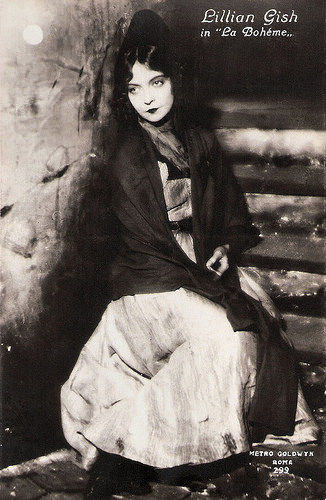
Lillian Gish . Italian postcard by Casa Editrice Ballerini & Fratini, Firenze (B.F.F.), no. 199. Photo: Metro Goldwyn, Roma (MGM). Publicity still for La Bohème (King Vidor, 1926).
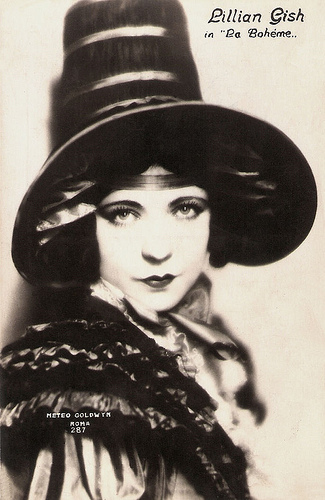
Italian postcard by Casa Editrice Ballerini & Fratini, Firenze. Photo: Metro Goldwyn (MGM), Roma, no. 287. Publicity still for La Bohème (King Vidor, 1926). Although the postcard credits Lillian Gish , it's actually co-star Renée Adorée who is portrayed. (Thanks to Marlene Pilaete, for mentioning this).
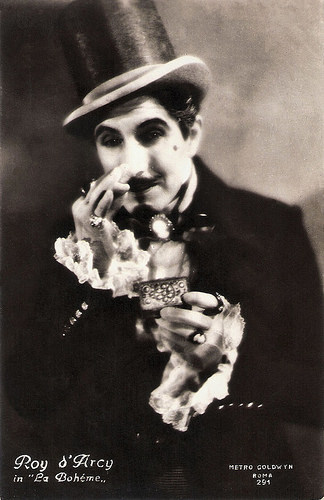
Roy D'Arcy. Italian postcard by Casa Editrice Ballerini & Fratini, no. 291. Photo: Metro Goldwyn, Roma (MGM). Publicity still for La Bohème (King Vidor, 1926).
Sources: Hal Erickson (AllMovie), Steffi van Essen (IMDb), Wikipedia and IMDb.

Lillian Gish (or Renée Adorée?) and John Gilbert. German postcard by Ross Verlag, no. 63/1. Photo: Metro-Goldwyn-Mayer (MGM) / Parufamet. Publicity still for La Bohème (King Vidor, 1926).

Lillian Gish , John Gilbert and Renée Adorée. German postcard by Ross Verlag, no. 63/2. Photo: Metro-Goldwyn-Mayer (MGM) / Parufamet. Publicity still for La Bohème (King Vidor, 1926).

German postcard by Ross Verlag, no. 63/4. Photo: Metro-Goldwyn-Mayer (MGM) / Parufamet. Publicity still for La Bohème (King Vidor, 1926) with Lillian Gish and Roy D'Arcy.
The rent is due, but the money is not there
The Quartier Latin of Paris, winter 1830. A group of carefree Bohemians try to survive, hoping to one day become famous. Rodolpho (John Gilbert) is a frustrated writer who lives and starves with his room mates, painter Marcel (Gino Corrado), musician Schaunard (George Hassell) and bookish Colline, played by a young Edward Everett Horton. The rent is due, but the money is not there. An article here, a painting there and a monkey with a cup gives them enough money for the rent, but not for food.
Fortunately, the saucy Musette (Renée Adorée) from downstairs has enough food for everyone including Mimi ( Lillian Gish ) - the frail and beautiful seamstress from next door. She has been given notice by the landlord, but Rodolpho and his friends rescue her and vow to always share their good fortune with her. Rodolphe and Mimi fall in love and Mimi works endlessly to support Rodolphe who is writing his play with a new found passion. But the rich, idle aristocrat Vicomte Paul (Roy D'Arcy) also has his lusting eye on Mimi and uses her embroidery to get close to her.
Rodolpho does not know that he has been discharged from writing for the magazine Dog and Cat Fanciers. Mimi wants to get his play produced and Vicomte Paul offers to help, but there is a terrible fight when Rodolphe thinks that Mimi is faithless to him with the count. After the fight, he seeks out a doctor as she is sick, but she has left when Rodolphe returns and will stay away until his play is finished.
Rodolphe searches for Mimi for months. Out of his anguish, a new and greater play is born. This turns out to be a hit, but he is miserable without Mimi. Meanwhile, Mimi is toiling in the slums of Paris, but the hard work is too much for the frail woman. She collapses. The doctor tells her coworkers that she will not live out the night. She stumbles out into the street and eventually reaches her old apartment. Rodolphe is ecstatic to see her. Their friends, however, realise her condition. While he goes to fetch her pet bird, she tells Musette she is happy, before dying.
Hal Erickson at AllMovie : "Though John Gilbert hams it up, Lillian Gish 's brilliant performance is a model of restraint and subtlety. For her final scene, the actress went to appalling lengths to convincingly simulate death, going without water for three days and training herself to breathe without discernible movement (even when seen today, the effect is startlingly real)."
Steffi van Essen at IMDb : "Gilbert is not nearly as fine an actor as his leading lady, but he is again very much the right type for his part – an idealist with intelligent eyes and a warm smile. Other faces to look out for here are the very entertaining French actress Renée Adorée, and a rare glimpse of a silent-era Edward Everett Horton, although sadly before his comic talent was fully realised."

Lillian Gish . Italian postcard by Casa Editrice Ballerini & Fratini, Firenze (B.F.F.), no. 199. Photo: Metro Goldwyn, Roma (MGM). Publicity still for La Bohème (King Vidor, 1926).

Italian postcard by Casa Editrice Ballerini & Fratini, Firenze. Photo: Metro Goldwyn (MGM), Roma, no. 287. Publicity still for La Bohème (King Vidor, 1926). Although the postcard credits Lillian Gish , it's actually co-star Renée Adorée who is portrayed. (Thanks to Marlene Pilaete, for mentioning this).

Roy D'Arcy. Italian postcard by Casa Editrice Ballerini & Fratini, no. 291. Photo: Metro Goldwyn, Roma (MGM). Publicity still for La Bohème (King Vidor, 1926).
Sources: Hal Erickson (AllMovie), Steffi van Essen (IMDb), Wikipedia and IMDb.
Published on December 26, 2018 22:00
December 25, 2018
From the collection of Marlene Pilaete: Female stars advertising products
Today at EFSP, a post by Marlene Pilaete of La Collectionneuse with a selection of postcards from her own collection.
Marlene: "When Paul asked me to do a guest post at EFSP, we agreed to choose the theme of advertising. So, here are several vintage cards of female stars advertising different products. To my knowledge, only eight of these brands still exist today, without any interruption in their long histories: Lux soap, Dodge cars, Christian Jacques cosmetics, Van Houten cocoa and the following alcohols: Campari, St Raphaël, Pernod and Clacquesin (which is nevertheless produced today in much more limited amounts than it was at the height of its success). Furthermore, it seems that, after having closed its doors in 2008, Schwanen has been relaunched in 2011.
I hope you’ll enjoy my selection.
It gives me a feeling of intimacy and freshness
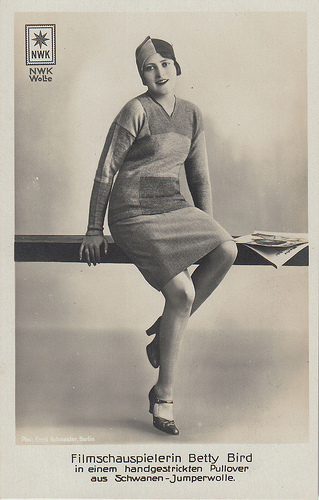
German postcard by H.C. Stöckel, Hannover-Linden. Photo Ernst Schneider, Berlin. Austrian-born actress Betty Bird wearing a pullover made with Schwanen wool.
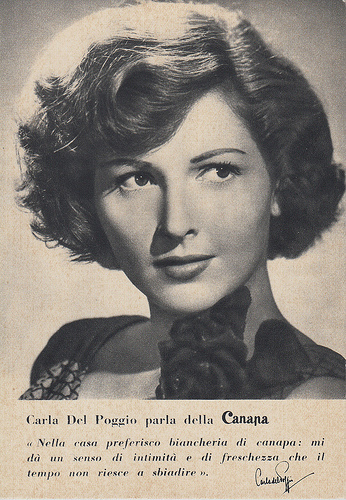
Italian 1954 postcard by I.G.D.A. Novara. Italian actress Carla Del Poggio advertising products made with hemp fibers. Caption: “At home, I prefer hemp linen: It gives me a feeling of intimacy and freshness that doesn’t vanish as time goes on”.
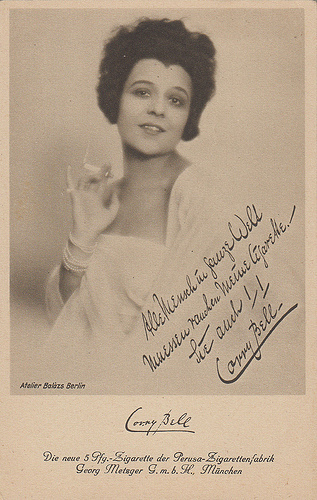
German postcard by Lipp & Neuschüz, München. Photo Atelier Balazs, Berlin. German actress Corry Bell advertising Perusa cigarettes. Caption: "People all around the world should smoke my cigarette. You too".
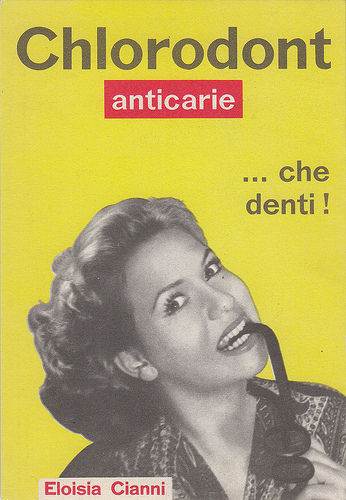
Italian 1954 postcard by Ricordi S.p.A. Milano. Italian actress Eloisa Cianni advertising Chlorodont toothpaste. Caption: “Chlorodont anti-caries … What teeth!”.
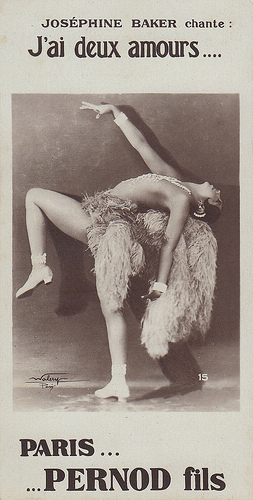
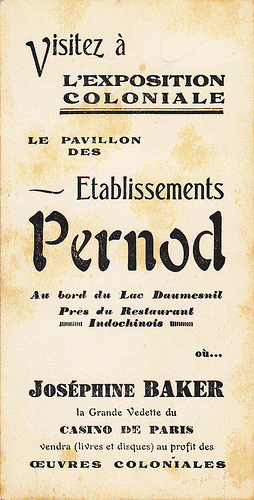
French 1931 promotional card. Photo Waléry, Paris. Josephine Baker advertising Pernod anisette. This card was produced during the 1931 Paris colonial exhibition. Caption: “Josephine Baker sings : I have two loves, Paris and Pernod Fils”. This refers to her most famous song “J’ai deux amours” (“I have two loves”). On the back of the card, you learn that “Josephine Baker will sell books and records at the Pernod pavilion in aid of the colonial charity”.
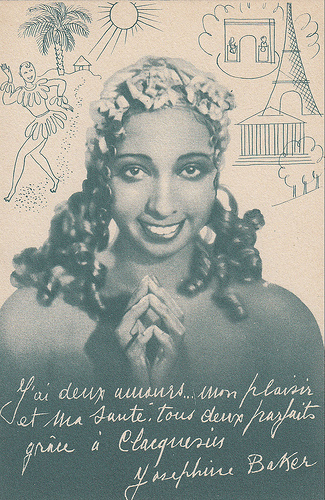
French promotional card. Josephine Baker advertising Clacquesin aperitif. Caption: “I have two loves: my pleasure and my health, both perfect thanks to Clacquesin”.
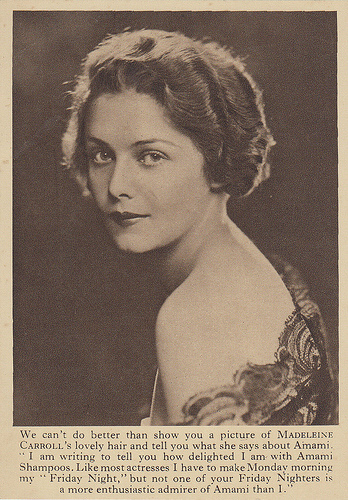
British postcard by Prichard & Constance, London. Madeleine Carroll advertising Amami shampoos.
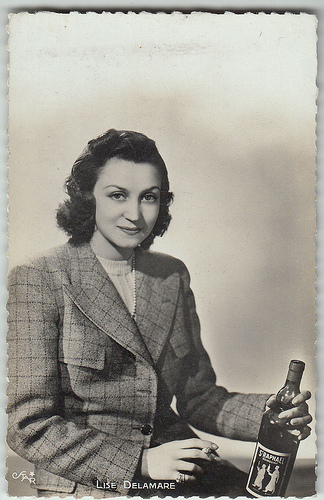
French postcard. French actress Lise Delamare advertising St. Raphaël aperitif. It’s interesting to note that there is no promotional caption on the card. The simple image of the St. Raphaël bottle was considered eloquent enough.
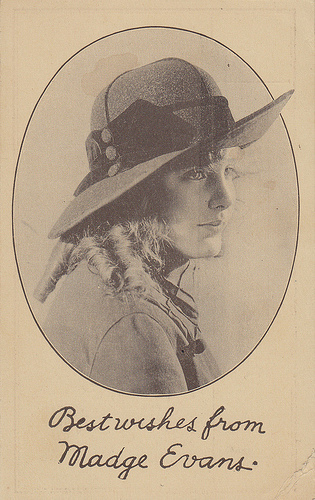
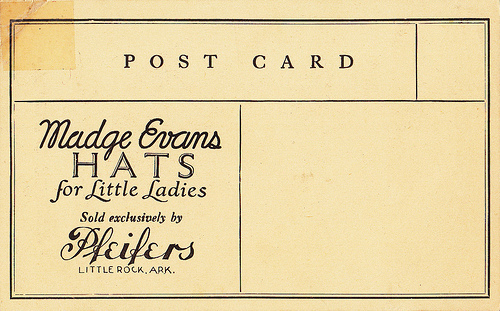
American postcard. American actress Madge Evans advertising her own brand of “Hats for Little Ladies”.
France triumphs once more
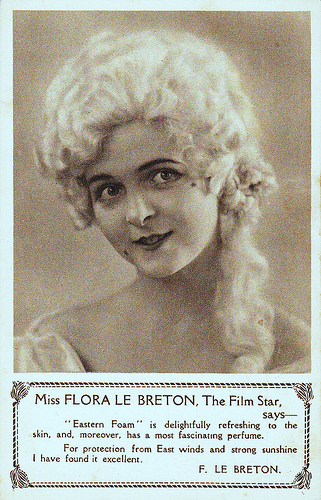
British postcard. British actress Flora Le Breton advertising Easter Foam vanishing cream.
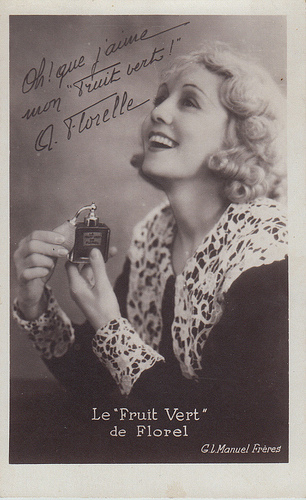
French postcard. Photo G.L. Manuel Frères. French actress Florelle advertising “Le Fruit vert”, a Florel perfume. Caption : “Oh how I love my Fruit vert”. It was a clever idea for the Florel perfume house to use Florelle in their advertising campaign, as the two names are nearly homonyms.
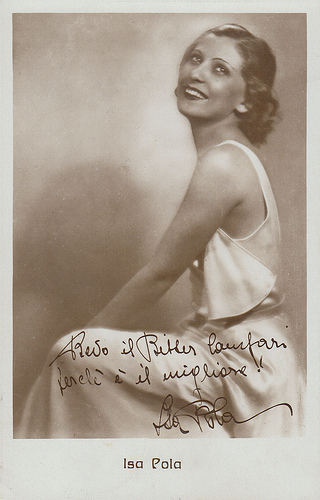
Italian postcard by G.B. Falci Milano. Italian actress Isa Pola advertising Campari aperitif. Caption : “I drink Bitter Campari because it’s the best”.
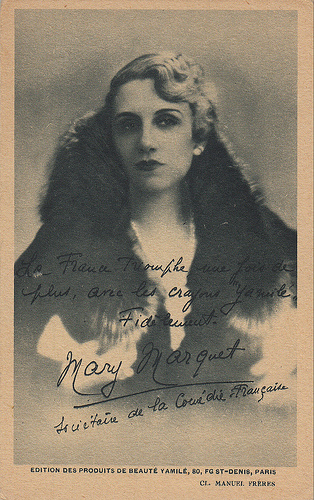
French postcard. Photo G.L. Manuel Frères. French actress Mary Marquet advertising Yamilé cosmetics. Caption : “France triumphs once more with the Yamilé pencils”.
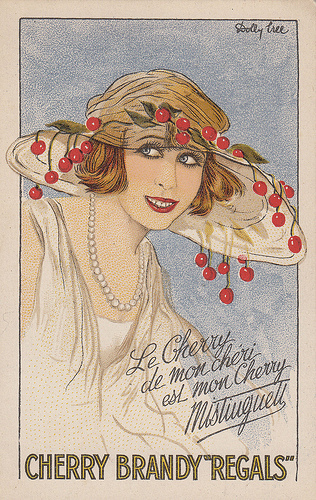
French postcard. Illustration by Dolly Tree, who later became a famous fashion designer in Hollywood. French actress Mistinguett advertising Regals Cherry Brandy. Caption: “My darling’s cherry is my cherry”. In French, the slogan (“Le cherry de mon chéri est mon cherry”) sounds better as it plays with the homonymy between “cherry” and “chéri”.
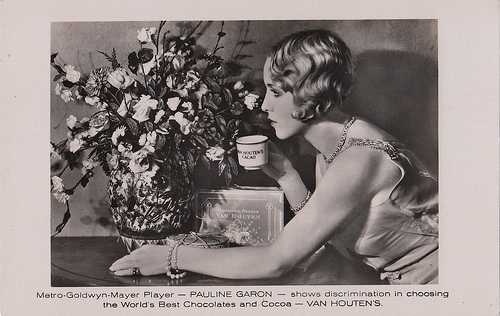
Dutch postcard issued by Van Houten in conjunction with Metro Goldwyn Mayer. Hollywood star Pauline Garon advertising Van Houten’s chocolate and cocoa.
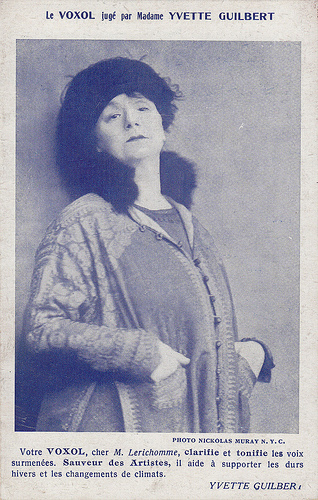
French promotional card. Photo Nickolas Muray, N.Y. French singer and actress Yvette Guilbert advertising Voxol drops and inhalers. Caption: “Your Voxol, dear Mr. Lerichomme, clarifies and strengthens tired voices. Saviour of the artists, it helps to endure the hard winters and the climate changes“.
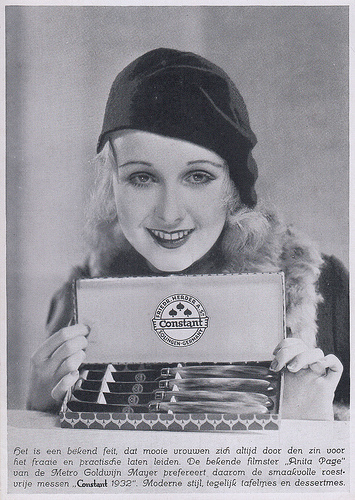
Dutch postcard. Hollywood star Anita Page advertising German Constant table and dessert knives. Caption: "It is a well-known fact that beautiful women are always guided by the sense of beauty and practicality. The famous film star Anita Page of Metro-Goldwyn-Mayer therefore prefers the tasteful stainless knives of 'Constant 1932'. Modern style, at the same time table knife and dessert knife."
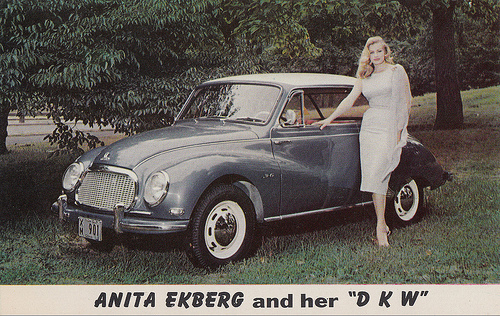
American postcard by Keating and Rider, N.Y. Shapely star Anita Ekberg advertising shapely DKW cars.
Alemite doesn’t even soil my white gloves
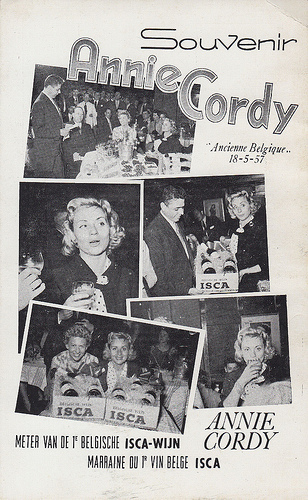
Belgian 1957 promotional card featuring the then sponsor of the first Belgian wine I.S.C.A.: Belgian-born singer and actress Annie Cordy. The I.S.C.A. cooperative was founded in 1955 by Belgian producers of dessert grapes who wanted to use the surplus of their production to sell wines and juices.
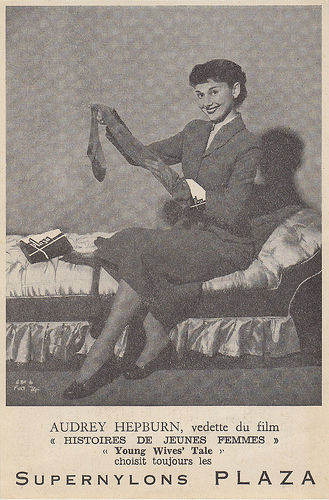
Belgian promotional card. Audrey Hepburn advertising Plaza nylon stockings. Caption : “Audrey Hepburn, star of the movie “Young Wives’ Tale”, always chooses the Plaza nylon stockings”. (The card refers to the British film Young Wives' Tale (Henry Cass, 1951) with a 22-years-old Audrey Hepburn in her fourth film, two years before Roman Holiday (William Wyler, 1953), PvY).
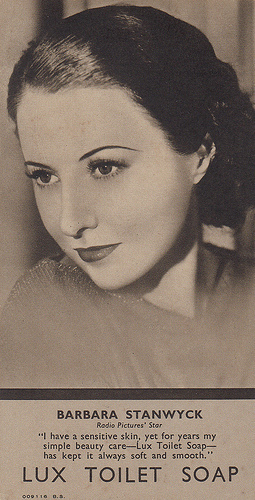
Advertising card featuring Hollywood star Barbara Stanwyck advertising Lux soap. Their famous slogan was: “Nine out of ten stars use Lux”.
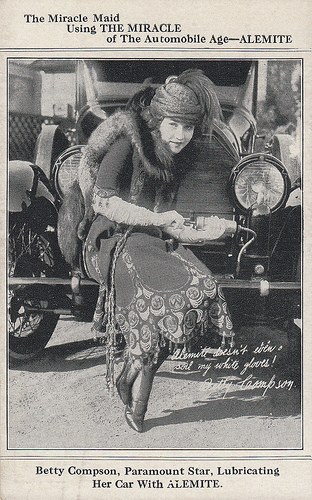
American postcard. Hollywood star Betty Compson advertising Alemite lubrication system for cars. I especially like the slogan: “Alemite doesn’t even soil my white gloves”. A very feminine point of view.
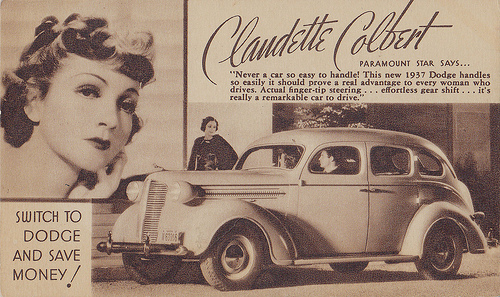
American 1937 postcard. Claudette Colbert advertising Dodge cars.
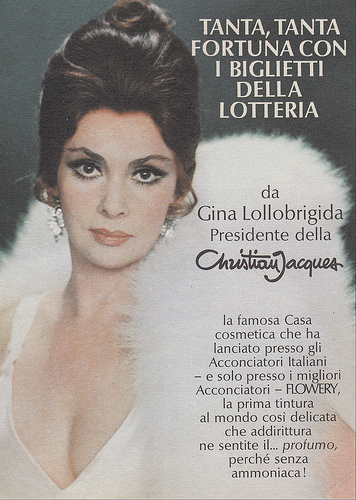
Italian postcard. Gina Lollobrigida advertising Christian Jacques cosmetics and, especially, “Flowery, the first hair dye in the world without ammonia”. On the card, Lollobrigida is referred to as the president of the Christian Jacques company. I don’t know if it was an honorary title or if she really was then at the head of the firm.
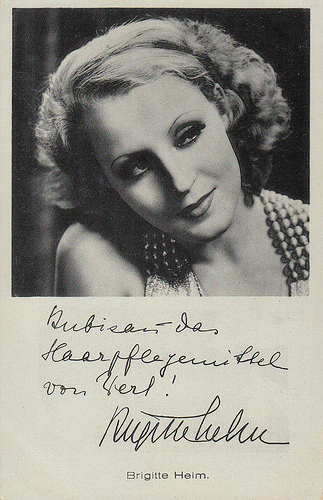
German postcard by Kosmosept G.m.B.H. Berlin. Brigitte Helm advertising Bubisan haircare products.
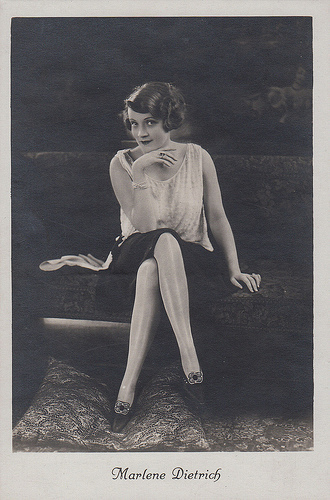
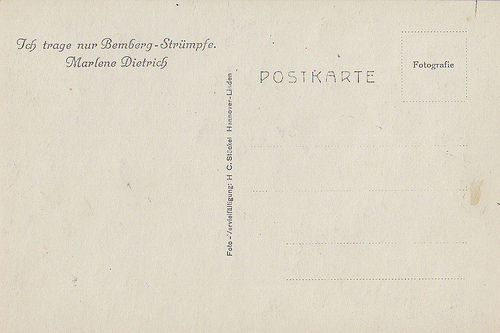
German postcard by H.C. Stöckel, Hannover-Linden. A pre-“Blue Angel” Marlene Dietrich advertising Bemberg stockings. She declares : “I only wear Bemberg stockings”.
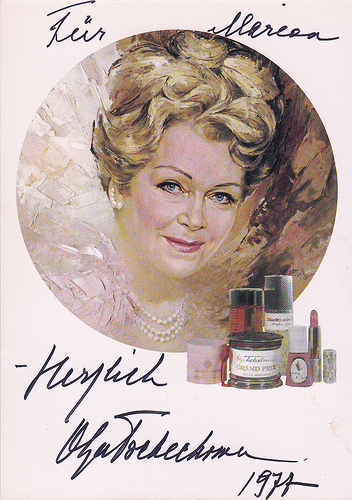
German 1977 postcard by Olga Tschechowa Kosmetik München. Olga Tschechowa promotes her own cosmetics brand."
Thank you Marlène for this wonderful selection!
Marlene: "When Paul asked me to do a guest post at EFSP, we agreed to choose the theme of advertising. So, here are several vintage cards of female stars advertising different products. To my knowledge, only eight of these brands still exist today, without any interruption in their long histories: Lux soap, Dodge cars, Christian Jacques cosmetics, Van Houten cocoa and the following alcohols: Campari, St Raphaël, Pernod and Clacquesin (which is nevertheless produced today in much more limited amounts than it was at the height of its success). Furthermore, it seems that, after having closed its doors in 2008, Schwanen has been relaunched in 2011.
I hope you’ll enjoy my selection.
It gives me a feeling of intimacy and freshness

German postcard by H.C. Stöckel, Hannover-Linden. Photo Ernst Schneider, Berlin. Austrian-born actress Betty Bird wearing a pullover made with Schwanen wool.

Italian 1954 postcard by I.G.D.A. Novara. Italian actress Carla Del Poggio advertising products made with hemp fibers. Caption: “At home, I prefer hemp linen: It gives me a feeling of intimacy and freshness that doesn’t vanish as time goes on”.

German postcard by Lipp & Neuschüz, München. Photo Atelier Balazs, Berlin. German actress Corry Bell advertising Perusa cigarettes. Caption: "People all around the world should smoke my cigarette. You too".

Italian 1954 postcard by Ricordi S.p.A. Milano. Italian actress Eloisa Cianni advertising Chlorodont toothpaste. Caption: “Chlorodont anti-caries … What teeth!”.


French 1931 promotional card. Photo Waléry, Paris. Josephine Baker advertising Pernod anisette. This card was produced during the 1931 Paris colonial exhibition. Caption: “Josephine Baker sings : I have two loves, Paris and Pernod Fils”. This refers to her most famous song “J’ai deux amours” (“I have two loves”). On the back of the card, you learn that “Josephine Baker will sell books and records at the Pernod pavilion in aid of the colonial charity”.

French promotional card. Josephine Baker advertising Clacquesin aperitif. Caption: “I have two loves: my pleasure and my health, both perfect thanks to Clacquesin”.

British postcard by Prichard & Constance, London. Madeleine Carroll advertising Amami shampoos.

French postcard. French actress Lise Delamare advertising St. Raphaël aperitif. It’s interesting to note that there is no promotional caption on the card. The simple image of the St. Raphaël bottle was considered eloquent enough.


American postcard. American actress Madge Evans advertising her own brand of “Hats for Little Ladies”.
France triumphs once more

British postcard. British actress Flora Le Breton advertising Easter Foam vanishing cream.

French postcard. Photo G.L. Manuel Frères. French actress Florelle advertising “Le Fruit vert”, a Florel perfume. Caption : “Oh how I love my Fruit vert”. It was a clever idea for the Florel perfume house to use Florelle in their advertising campaign, as the two names are nearly homonyms.

Italian postcard by G.B. Falci Milano. Italian actress Isa Pola advertising Campari aperitif. Caption : “I drink Bitter Campari because it’s the best”.

French postcard. Photo G.L. Manuel Frères. French actress Mary Marquet advertising Yamilé cosmetics. Caption : “France triumphs once more with the Yamilé pencils”.

French postcard. Illustration by Dolly Tree, who later became a famous fashion designer in Hollywood. French actress Mistinguett advertising Regals Cherry Brandy. Caption: “My darling’s cherry is my cherry”. In French, the slogan (“Le cherry de mon chéri est mon cherry”) sounds better as it plays with the homonymy between “cherry” and “chéri”.

Dutch postcard issued by Van Houten in conjunction with Metro Goldwyn Mayer. Hollywood star Pauline Garon advertising Van Houten’s chocolate and cocoa.

French promotional card. Photo Nickolas Muray, N.Y. French singer and actress Yvette Guilbert advertising Voxol drops and inhalers. Caption: “Your Voxol, dear Mr. Lerichomme, clarifies and strengthens tired voices. Saviour of the artists, it helps to endure the hard winters and the climate changes“.

Dutch postcard. Hollywood star Anita Page advertising German Constant table and dessert knives. Caption: "It is a well-known fact that beautiful women are always guided by the sense of beauty and practicality. The famous film star Anita Page of Metro-Goldwyn-Mayer therefore prefers the tasteful stainless knives of 'Constant 1932'. Modern style, at the same time table knife and dessert knife."

American postcard by Keating and Rider, N.Y. Shapely star Anita Ekberg advertising shapely DKW cars.
Alemite doesn’t even soil my white gloves

Belgian 1957 promotional card featuring the then sponsor of the first Belgian wine I.S.C.A.: Belgian-born singer and actress Annie Cordy. The I.S.C.A. cooperative was founded in 1955 by Belgian producers of dessert grapes who wanted to use the surplus of their production to sell wines and juices.

Belgian promotional card. Audrey Hepburn advertising Plaza nylon stockings. Caption : “Audrey Hepburn, star of the movie “Young Wives’ Tale”, always chooses the Plaza nylon stockings”. (The card refers to the British film Young Wives' Tale (Henry Cass, 1951) with a 22-years-old Audrey Hepburn in her fourth film, two years before Roman Holiday (William Wyler, 1953), PvY).

Advertising card featuring Hollywood star Barbara Stanwyck advertising Lux soap. Their famous slogan was: “Nine out of ten stars use Lux”.

American postcard. Hollywood star Betty Compson advertising Alemite lubrication system for cars. I especially like the slogan: “Alemite doesn’t even soil my white gloves”. A very feminine point of view.

American 1937 postcard. Claudette Colbert advertising Dodge cars.

Italian postcard. Gina Lollobrigida advertising Christian Jacques cosmetics and, especially, “Flowery, the first hair dye in the world without ammonia”. On the card, Lollobrigida is referred to as the president of the Christian Jacques company. I don’t know if it was an honorary title or if she really was then at the head of the firm.

German postcard by Kosmosept G.m.B.H. Berlin. Brigitte Helm advertising Bubisan haircare products.


German postcard by H.C. Stöckel, Hannover-Linden. A pre-“Blue Angel” Marlene Dietrich advertising Bemberg stockings. She declares : “I only wear Bemberg stockings”.

German 1977 postcard by Olga Tschechowa Kosmetik München. Olga Tschechowa promotes her own cosmetics brand."
Thank you Marlène for this wonderful selection!
Published on December 25, 2018 22:00
December 24, 2018
Merry Christmas!
As every year: Gelukkig kerstfeest! Frohe Weihnachten! ¡Feliz Navidad! Joyeux Noël! Buon Natale! Sretan Božić! Καλά Χριστούγεννα! Boldog karácsonyt! Gleðileg jól! Nollaig Shona! Priecīgus Ziemassvētkus! Linksmų Kalėdų! Среќен Божиќ God jul! Wesołych Świąt! Feliz Natal! Crăciun fericit! С Рождеством Срећан Божић veselé Vianoce! Vesel božič! God Jul! Nadolig Llawen! Gëzuar Krishtlindjet! Eguberri! Merry Christmas!
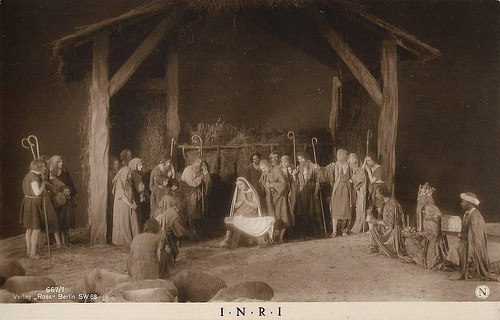
German postcard. Ross Verlag, no. 667/1. Photo: Neumann. The Nativity Scene with Henny Porten as Mary in the Biblical film I.N.R.I. (Robert Wiene, 1923).
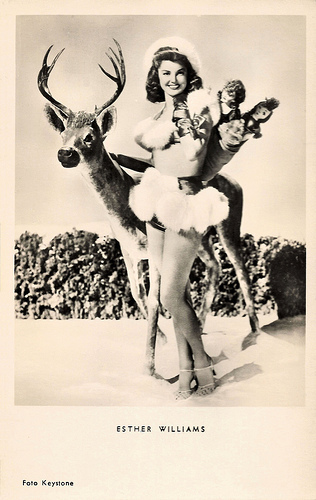
Esther Williams. German postcard by Kunst und Bild, Berlin, no. A 190. Photo: Keystone.
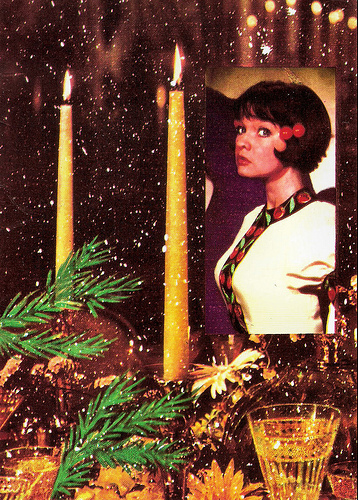
Margareta Pislaru . Romanian postcard by Casa Filmului Acin.
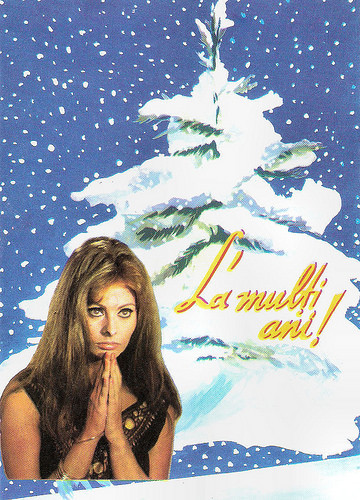
Sophia Loren . Romanian postcard by Casa Filmului Acin.
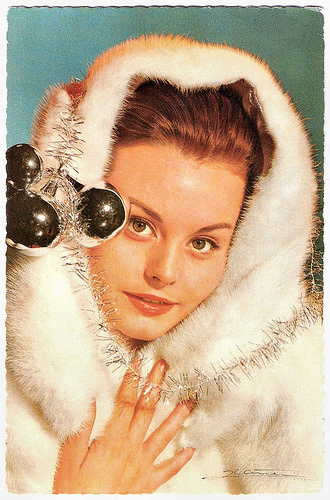
Rocío Dúrcal . Spanish postcard by Ediciones Tarjet-Fher / Ediciones Mandolina, no. 216. Photo: Epoca Films.
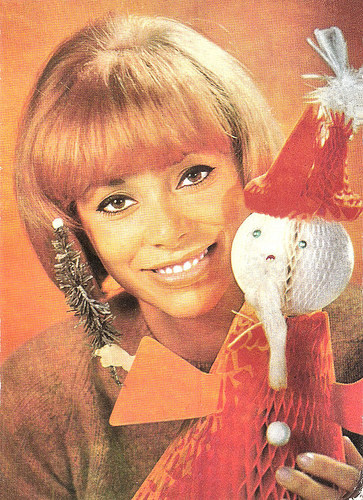
Mireille Darc . Romanian postcard by Casa Filmului Acin, no. 436.
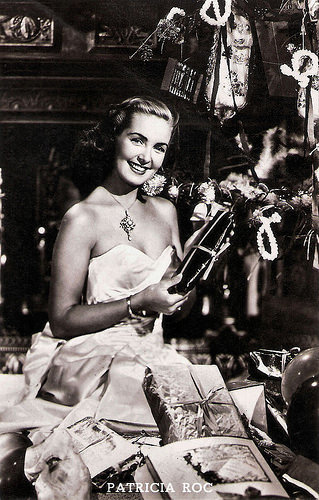
Patricia Roc . Dutch postcard. Photo: British Lion.
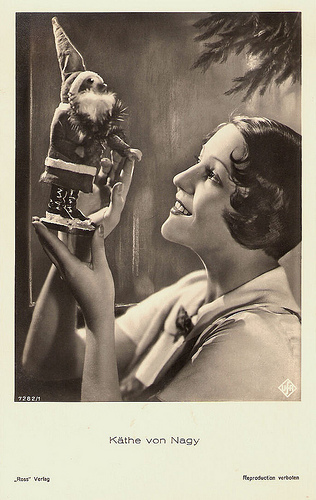
Käthe von Nagy . German postcard by Ross Verlag, no. 7282/1. Photo: Ufa. Released in Italy by Ed. Ballerini & Fratini, Firenze.
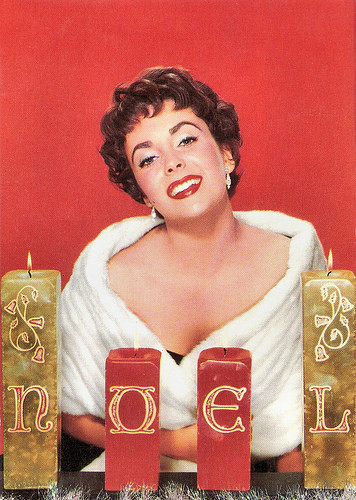
Elizabeth Taylor . French postcard by Editions P.I., Paris, no. 1051. Photo: John Everton / Ufa.
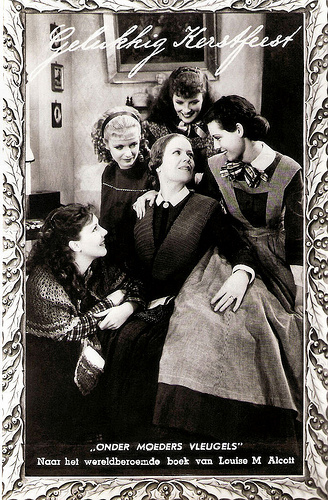
Dutch postcard by the Rialto Theatre, Amsterdam, 1934. Photo: Remaco Radio Picture. Publicity still for Little Women (George Cukor, 1933). In the picture are Katharine Hepburn, Joan Bennett, Frances Dee, Jean Parker and Spring Byington. The Dutch title of the film and the book by Louise M. Alcott is Onder moeders vleugels.
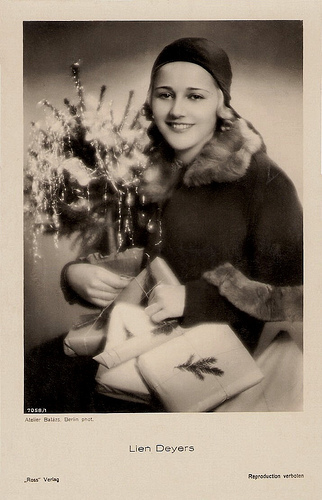
Lien Deyers . German postcard by Ross Verlag, no. 7058/1, 1932-1933. Photo: Atelier Balász, Berlin.
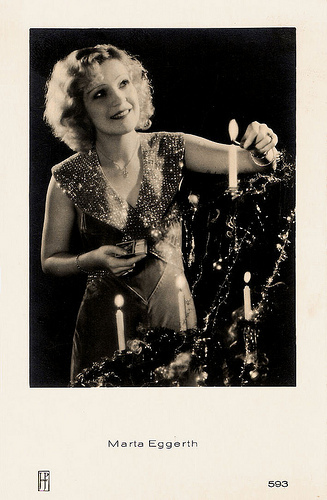
Marta Eggerth . Dutch postcard by JosPe, no. 593.
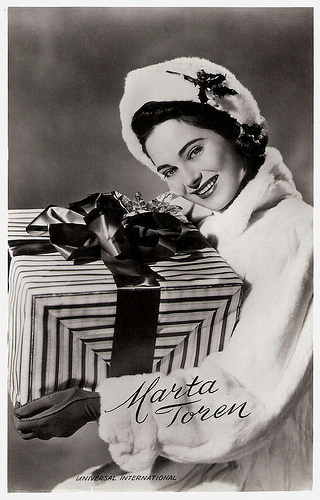
Marta Toren . Dutch postcard, no. 3374. Photo: Universal International / Fotoarchief Film en Toneel.
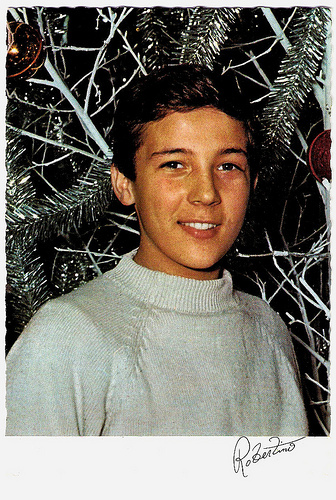
Robertino . French postcard by Editions Publistar, Marseille, no. 811. Photo: President.

Kermit. Dutch postcard by Interstat, Amsterdam. Photo: The Jim Henson Company.
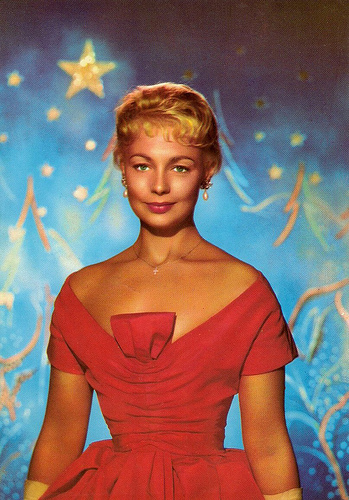
Dany Robin . French postcard by Editions P.I., Paris, no. 1004. Photo: Sam Lévin.
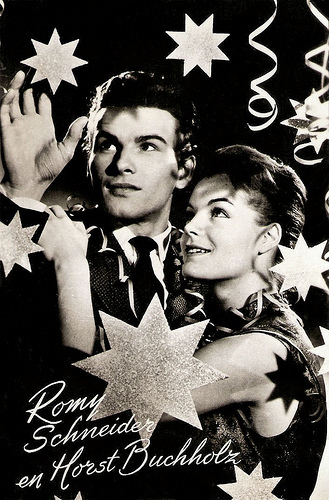
Romy Schneider & Horst Buchholz . Dutch postcard by Uitg. Takken, Utrecht, no. 3572.
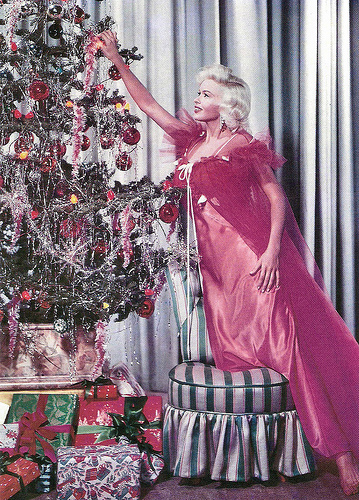
Jayne Mansfield. French postcard by Edition a la carte. Photo: Filmhistorisches Bildarchiv Peter W. Engelmeier.
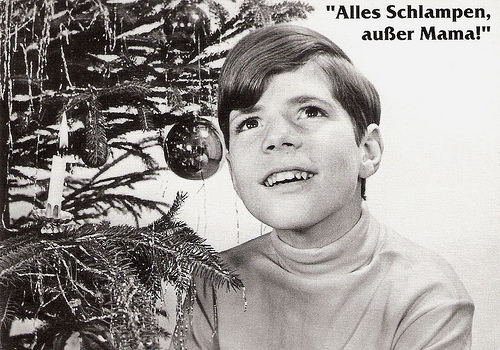
Heintje Simons . German postcard by Modern Times. Photo: Interfoto. Caption: Alles schlampen, ausser mama (All bitches, except mama).
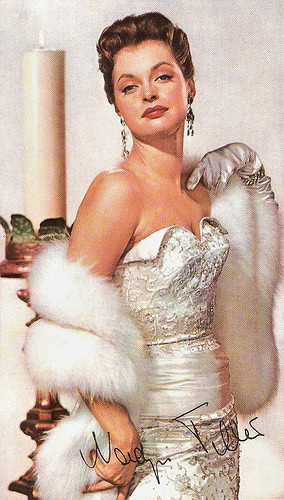
Nadja Tiller . German promotion card for Luxor.

German postcard. Ross Verlag, no. 667/1. Photo: Neumann. The Nativity Scene with Henny Porten as Mary in the Biblical film I.N.R.I. (Robert Wiene, 1923).

Esther Williams. German postcard by Kunst und Bild, Berlin, no. A 190. Photo: Keystone.

Margareta Pislaru . Romanian postcard by Casa Filmului Acin.

Sophia Loren . Romanian postcard by Casa Filmului Acin.

Rocío Dúrcal . Spanish postcard by Ediciones Tarjet-Fher / Ediciones Mandolina, no. 216. Photo: Epoca Films.

Mireille Darc . Romanian postcard by Casa Filmului Acin, no. 436.

Patricia Roc . Dutch postcard. Photo: British Lion.

Käthe von Nagy . German postcard by Ross Verlag, no. 7282/1. Photo: Ufa. Released in Italy by Ed. Ballerini & Fratini, Firenze.

Elizabeth Taylor . French postcard by Editions P.I., Paris, no. 1051. Photo: John Everton / Ufa.

Dutch postcard by the Rialto Theatre, Amsterdam, 1934. Photo: Remaco Radio Picture. Publicity still for Little Women (George Cukor, 1933). In the picture are Katharine Hepburn, Joan Bennett, Frances Dee, Jean Parker and Spring Byington. The Dutch title of the film and the book by Louise M. Alcott is Onder moeders vleugels.

Lien Deyers . German postcard by Ross Verlag, no. 7058/1, 1932-1933. Photo: Atelier Balász, Berlin.

Marta Eggerth . Dutch postcard by JosPe, no. 593.

Marta Toren . Dutch postcard, no. 3374. Photo: Universal International / Fotoarchief Film en Toneel.

Robertino . French postcard by Editions Publistar, Marseille, no. 811. Photo: President.

Kermit. Dutch postcard by Interstat, Amsterdam. Photo: The Jim Henson Company.

Dany Robin . French postcard by Editions P.I., Paris, no. 1004. Photo: Sam Lévin.

Romy Schneider & Horst Buchholz . Dutch postcard by Uitg. Takken, Utrecht, no. 3572.

Jayne Mansfield. French postcard by Edition a la carte. Photo: Filmhistorisches Bildarchiv Peter W. Engelmeier.

Heintje Simons . German postcard by Modern Times. Photo: Interfoto. Caption: Alles schlampen, ausser mama (All bitches, except mama).

Nadja Tiller . German promotion card for Luxor.
Published on December 24, 2018 22:00
Paul van Yperen's Blog
- Paul van Yperen's profile
- 13 followers
Paul van Yperen isn't a Goodreads Author
(yet),
but they
do have a blog,
so here are some recent posts imported from
their feed.



